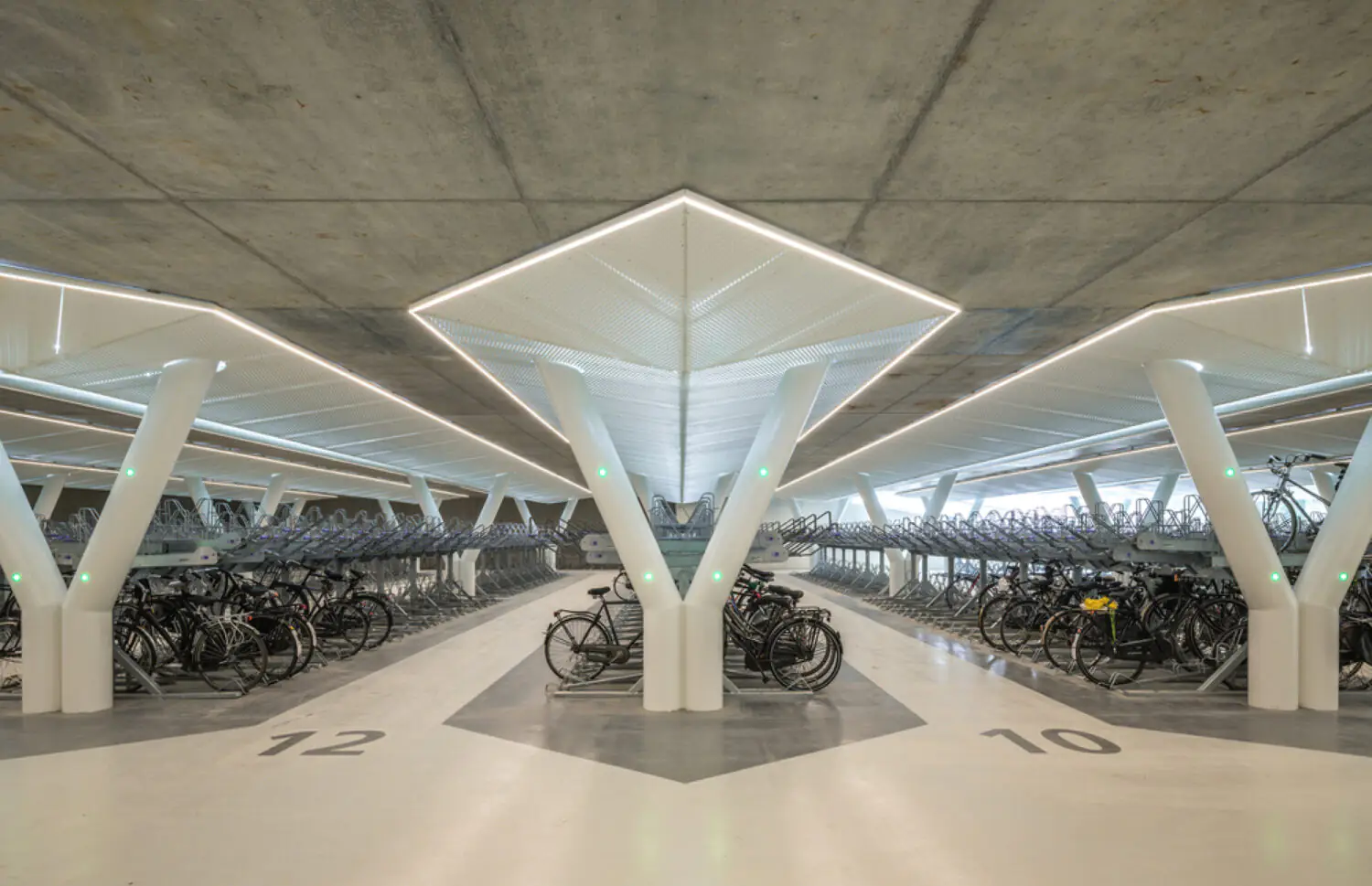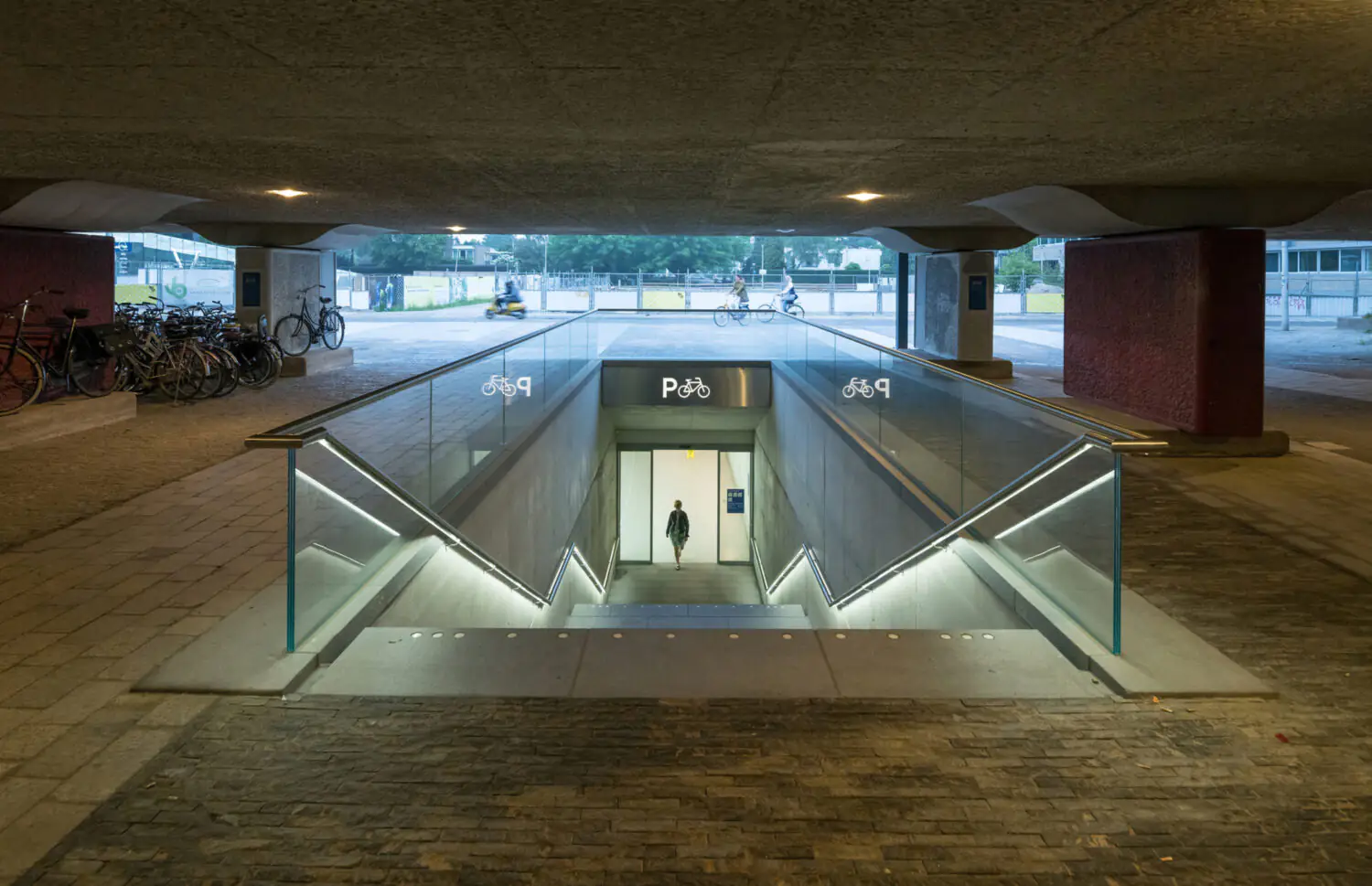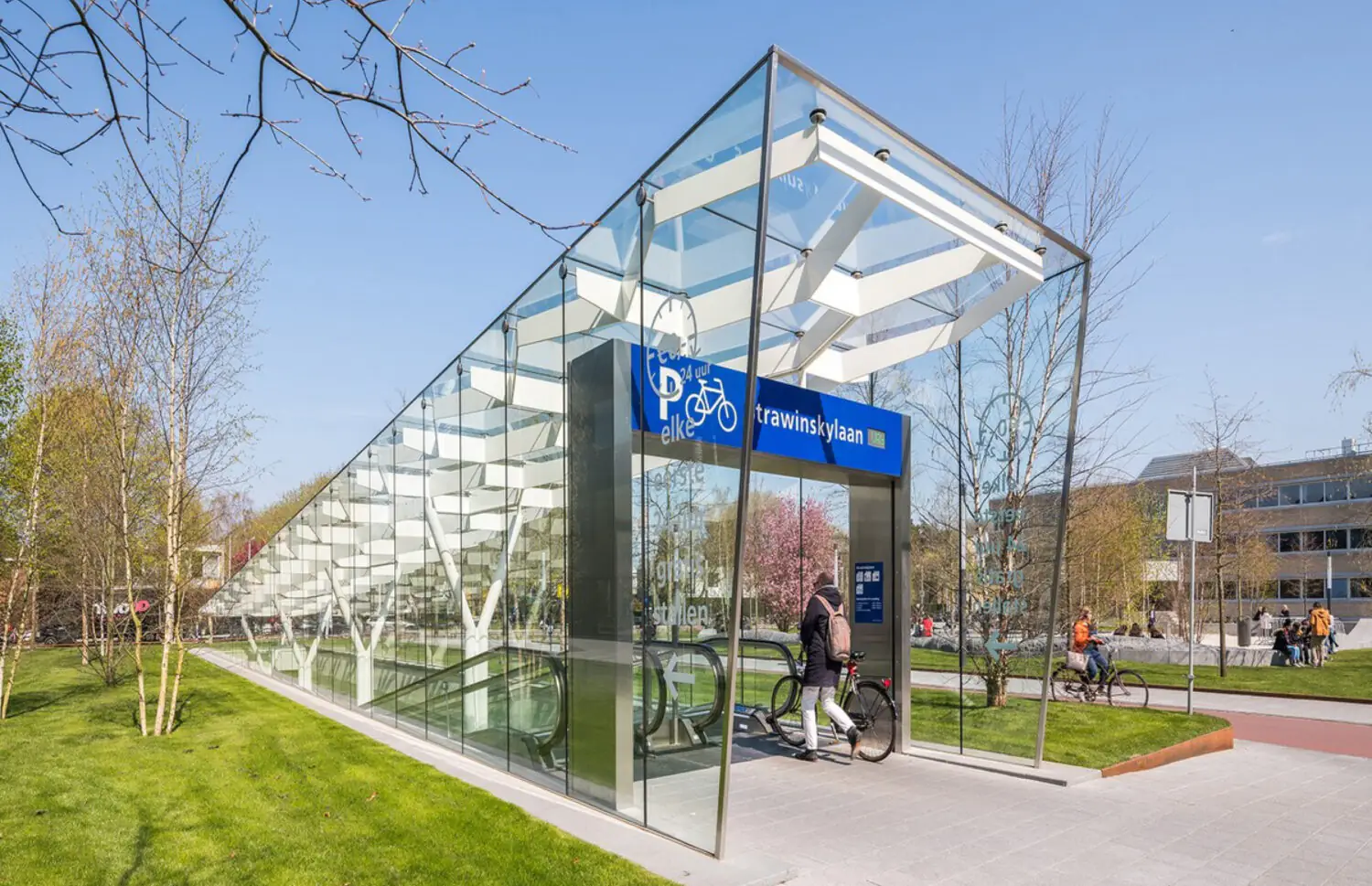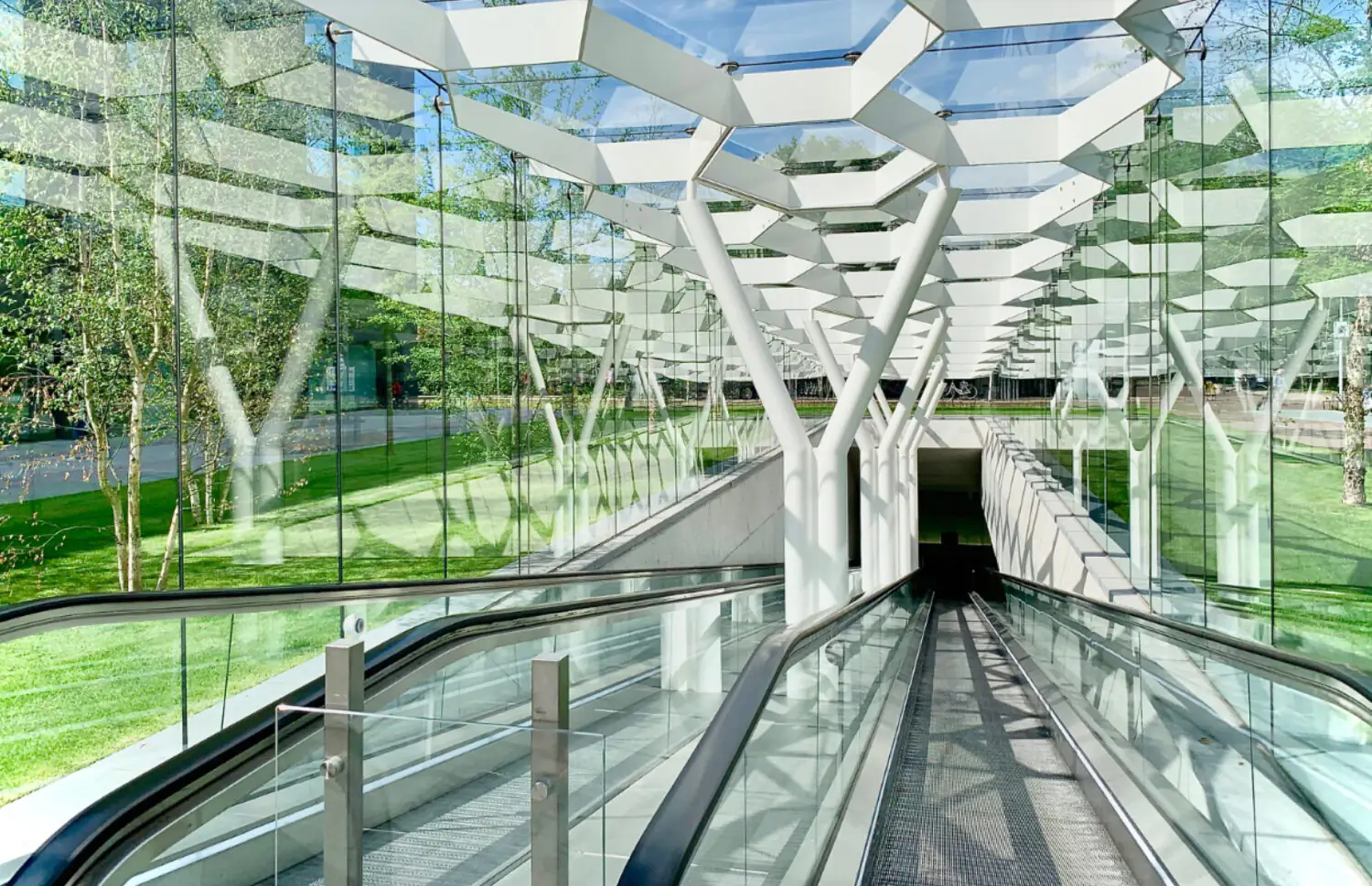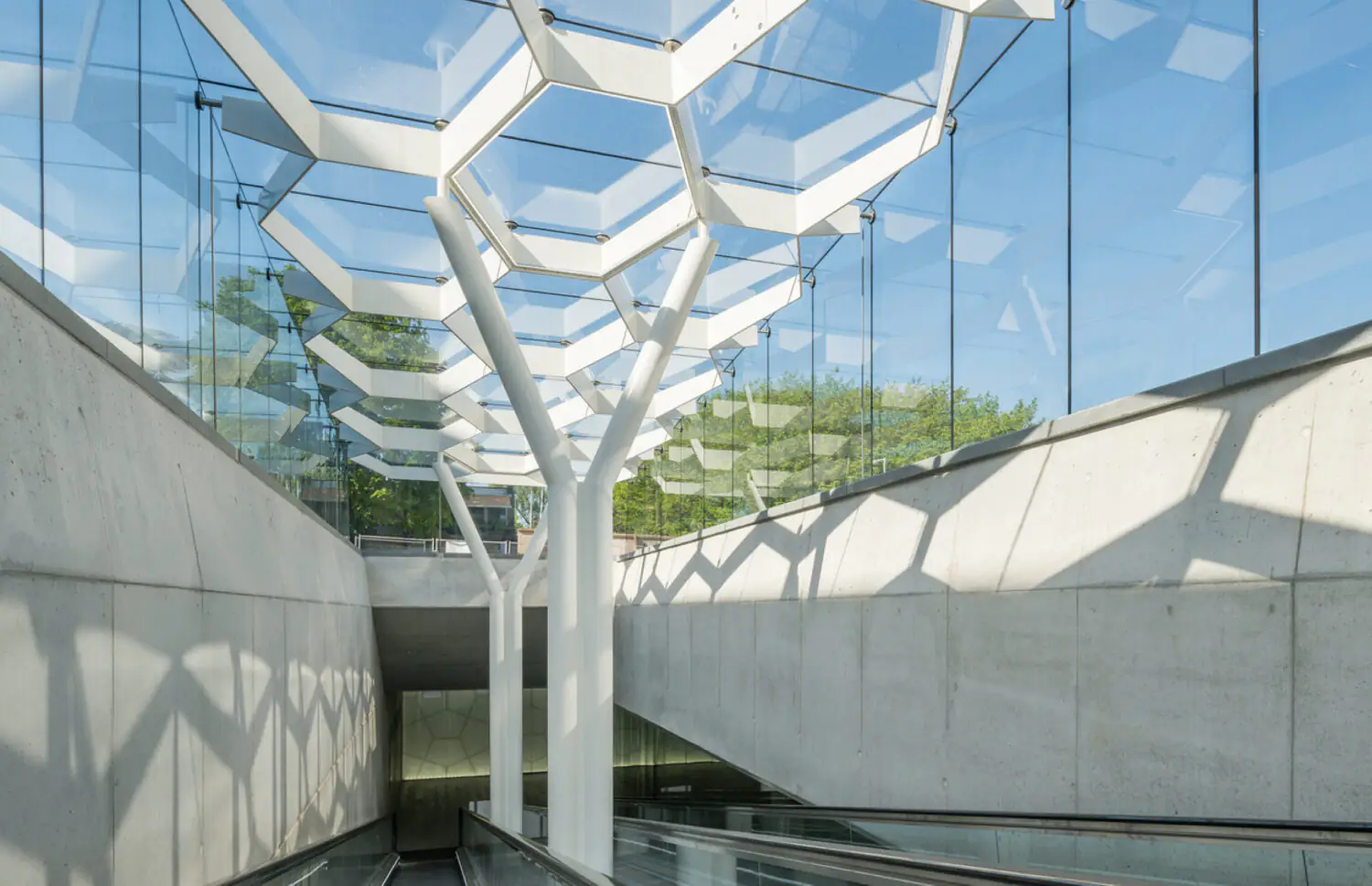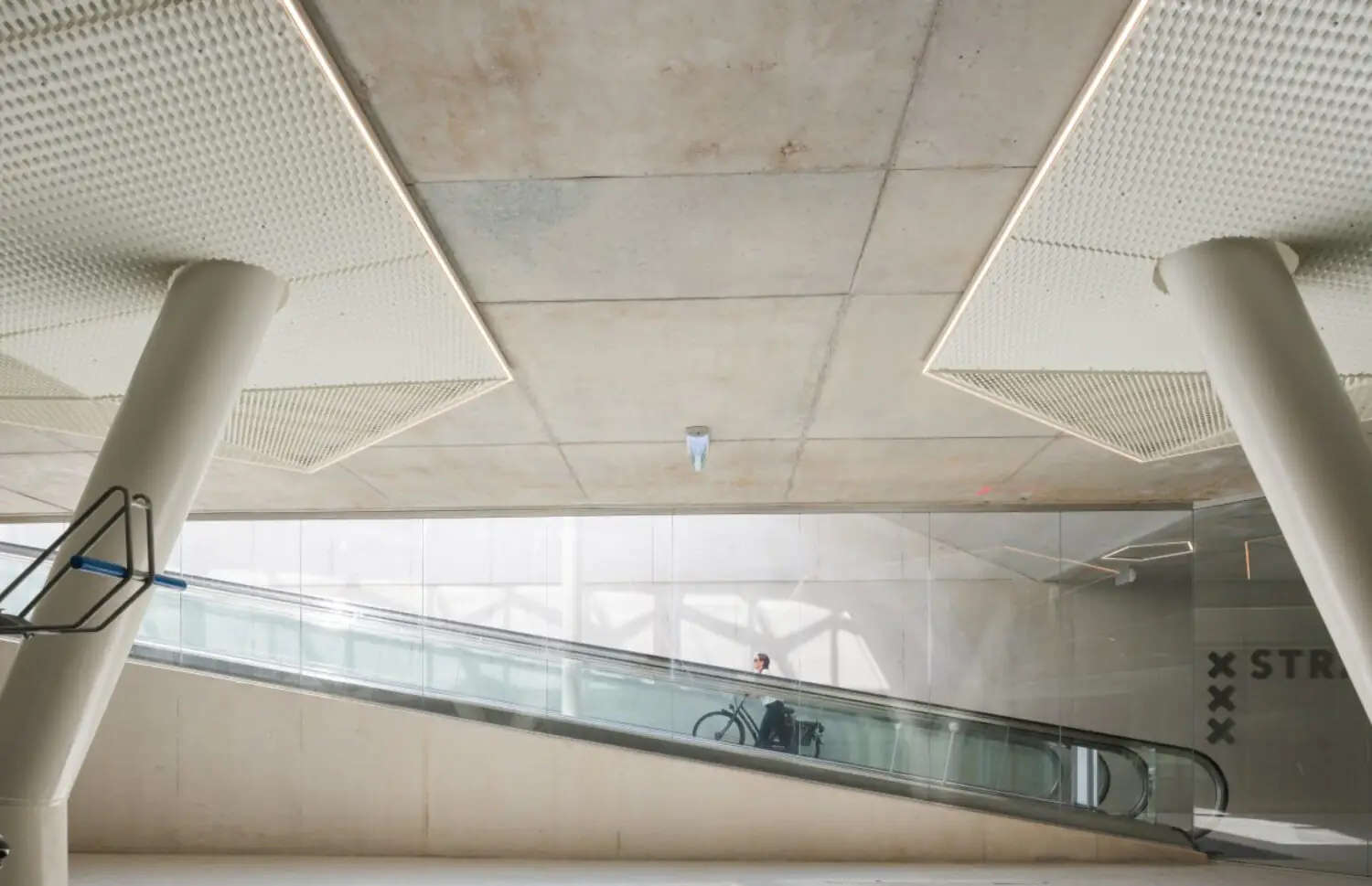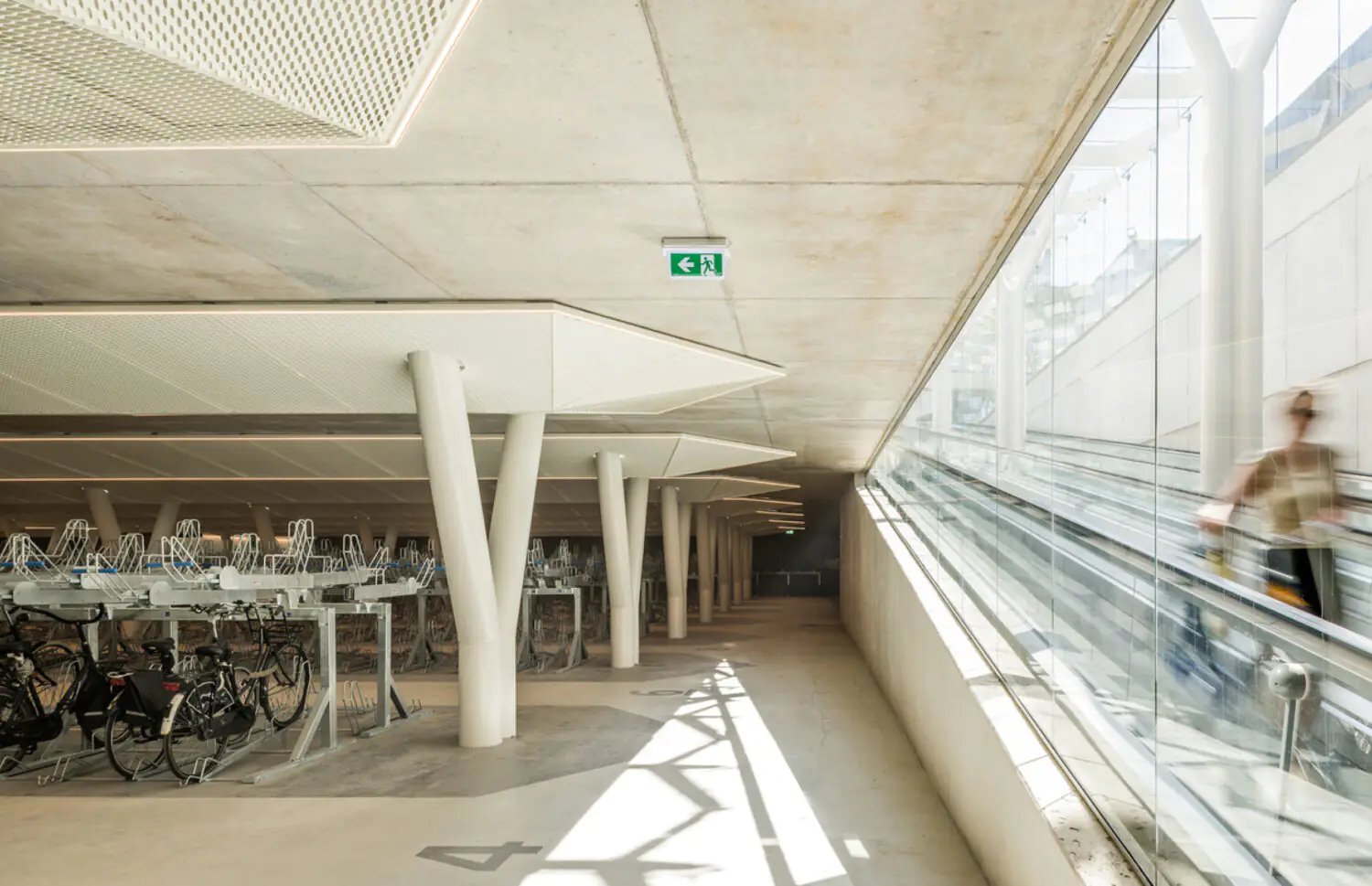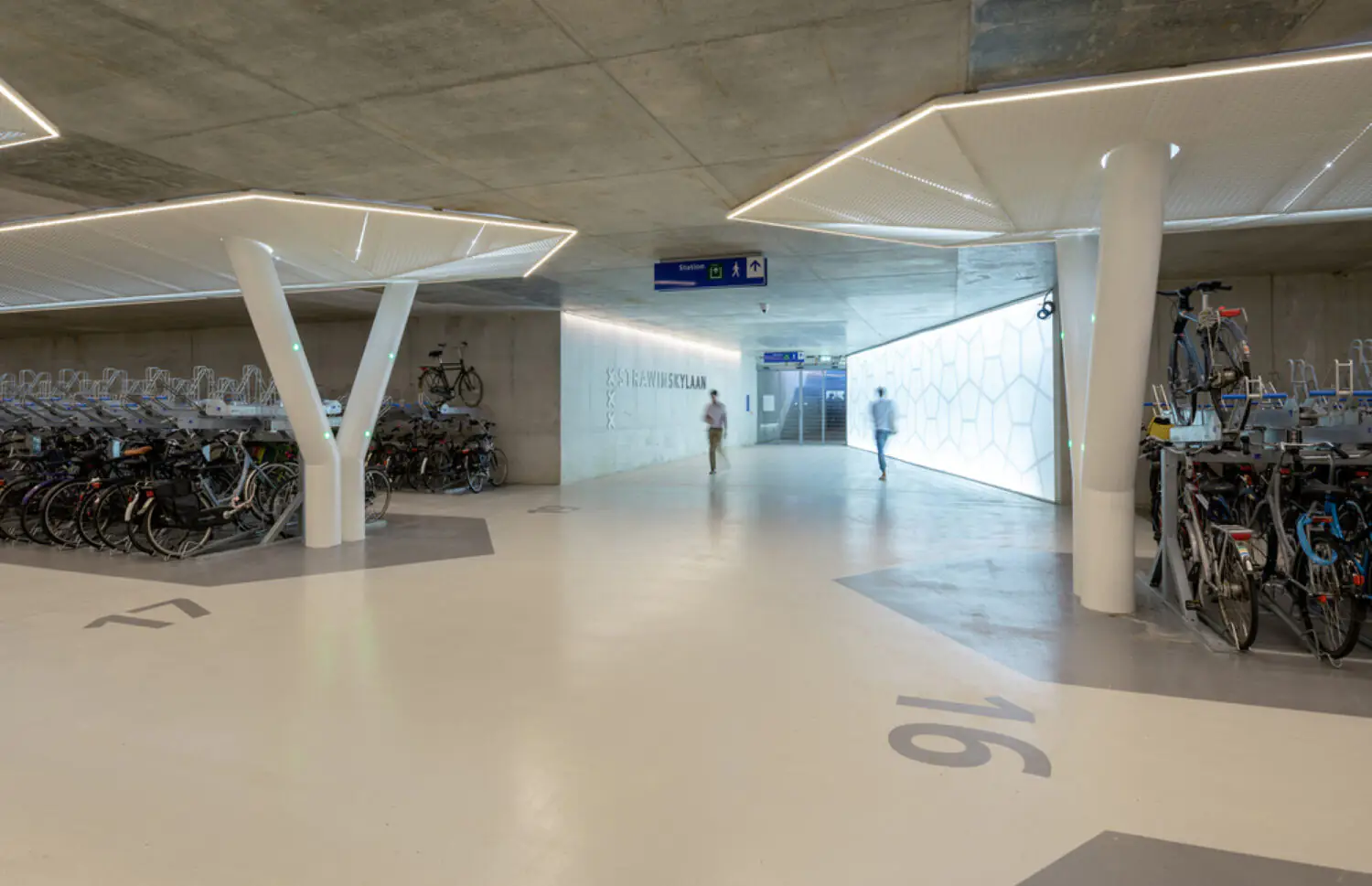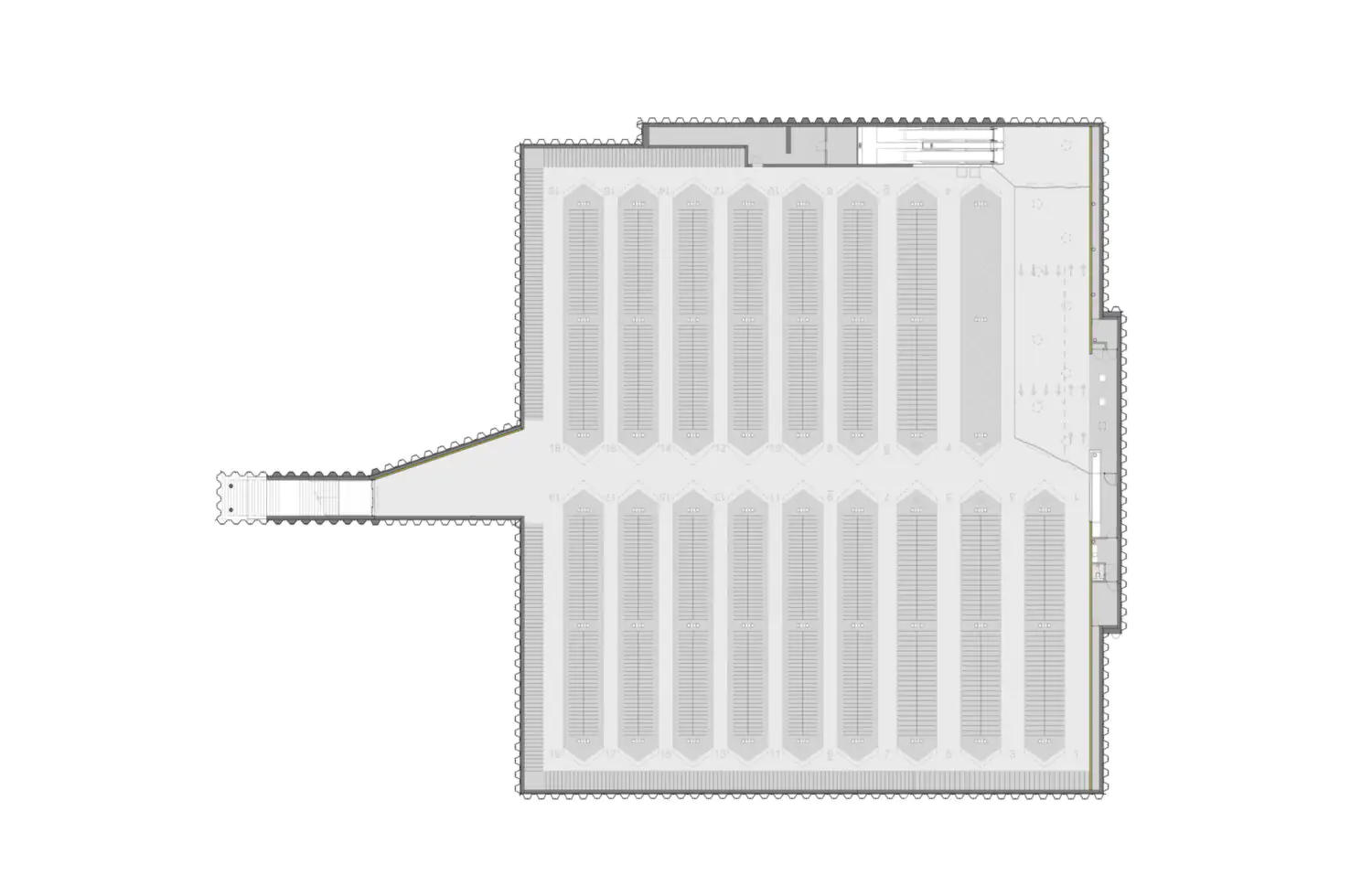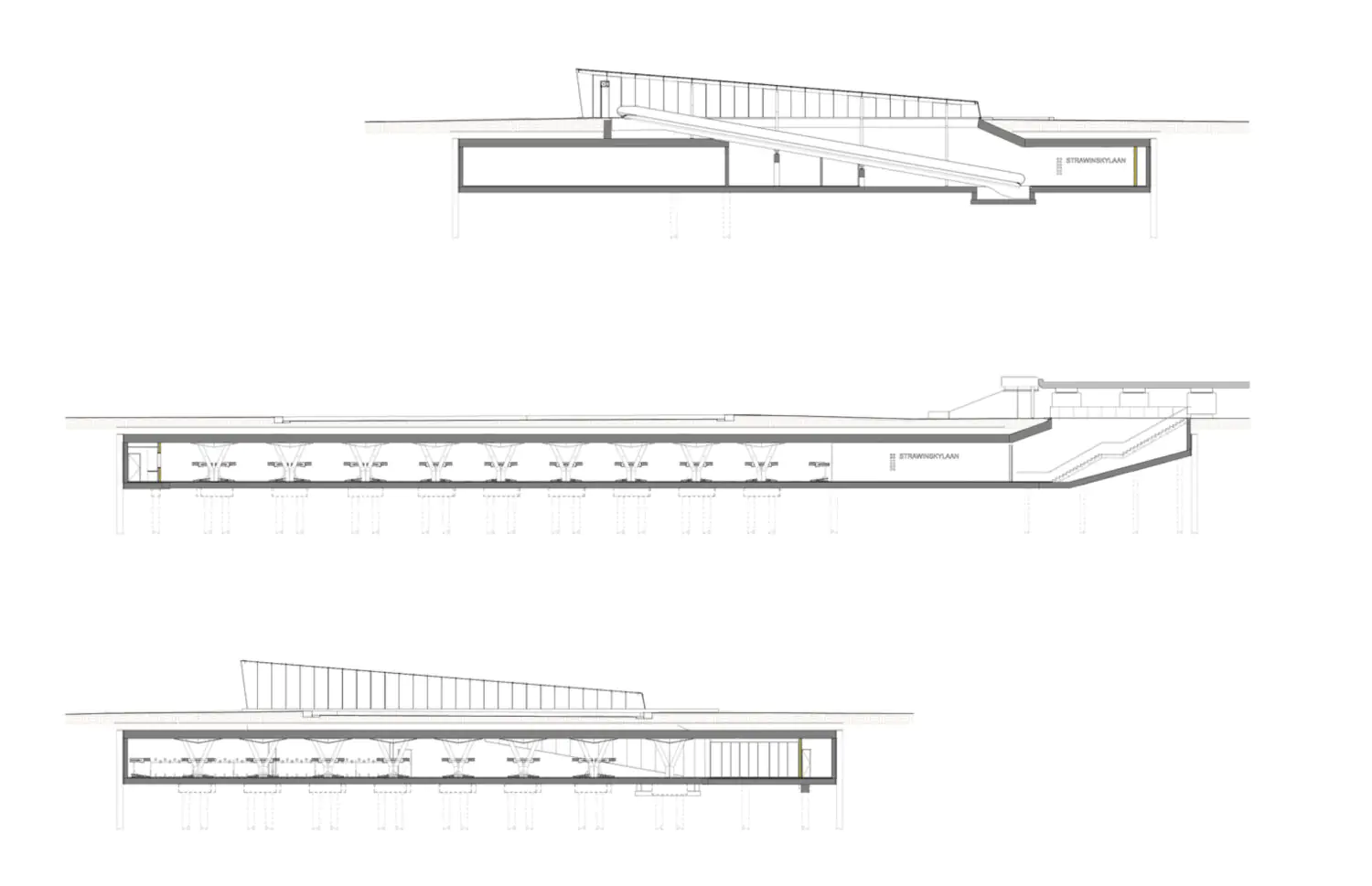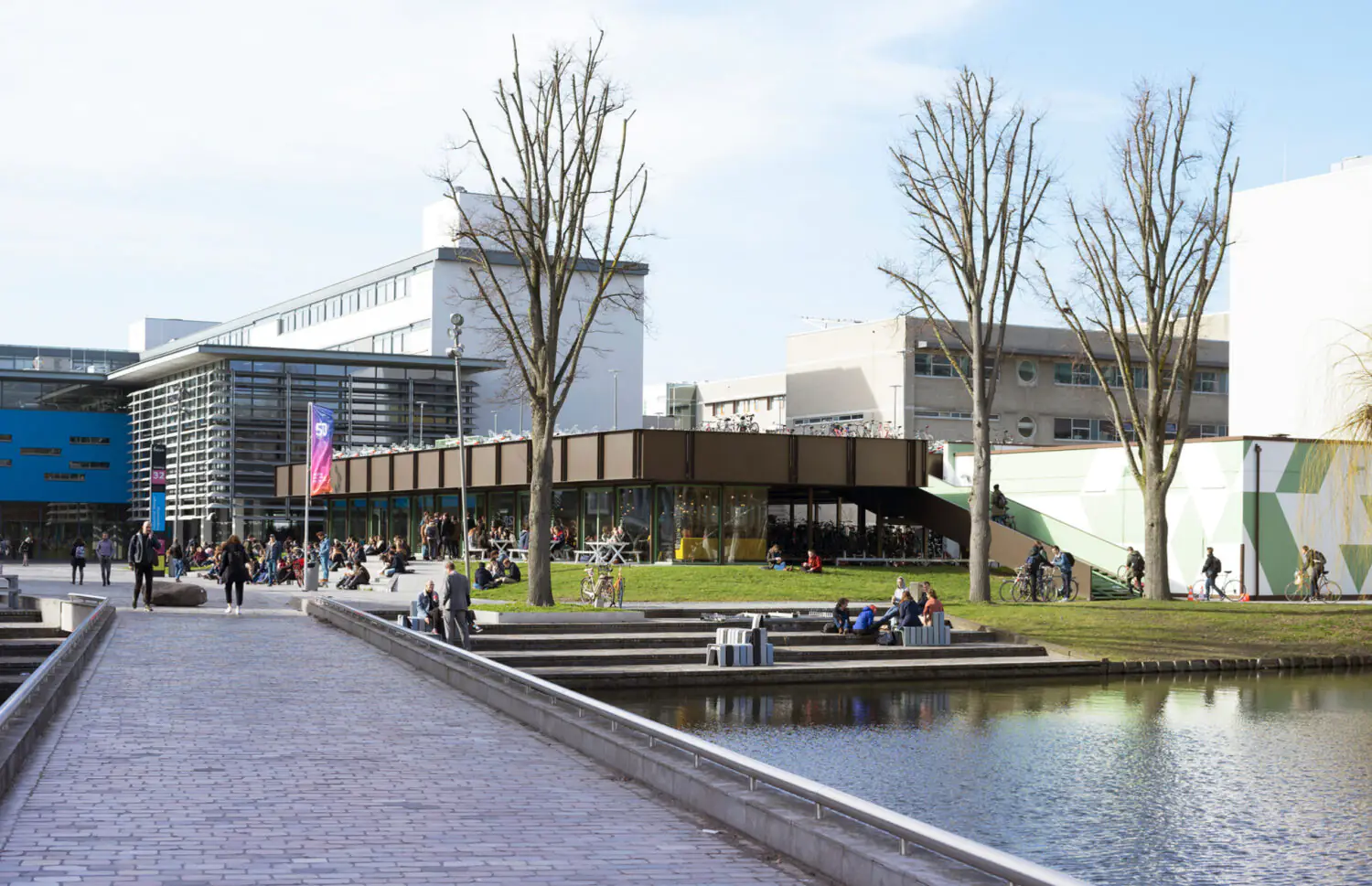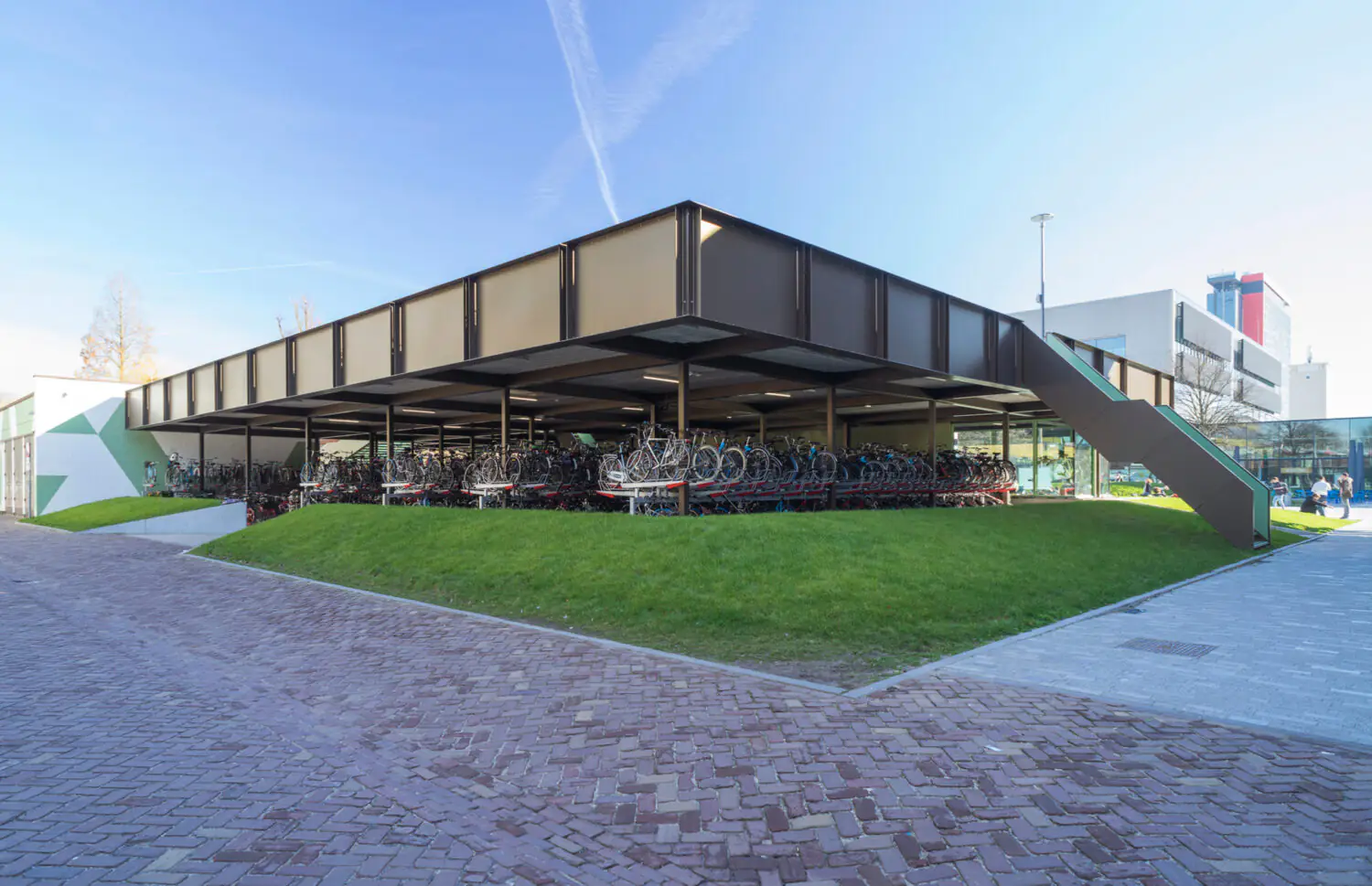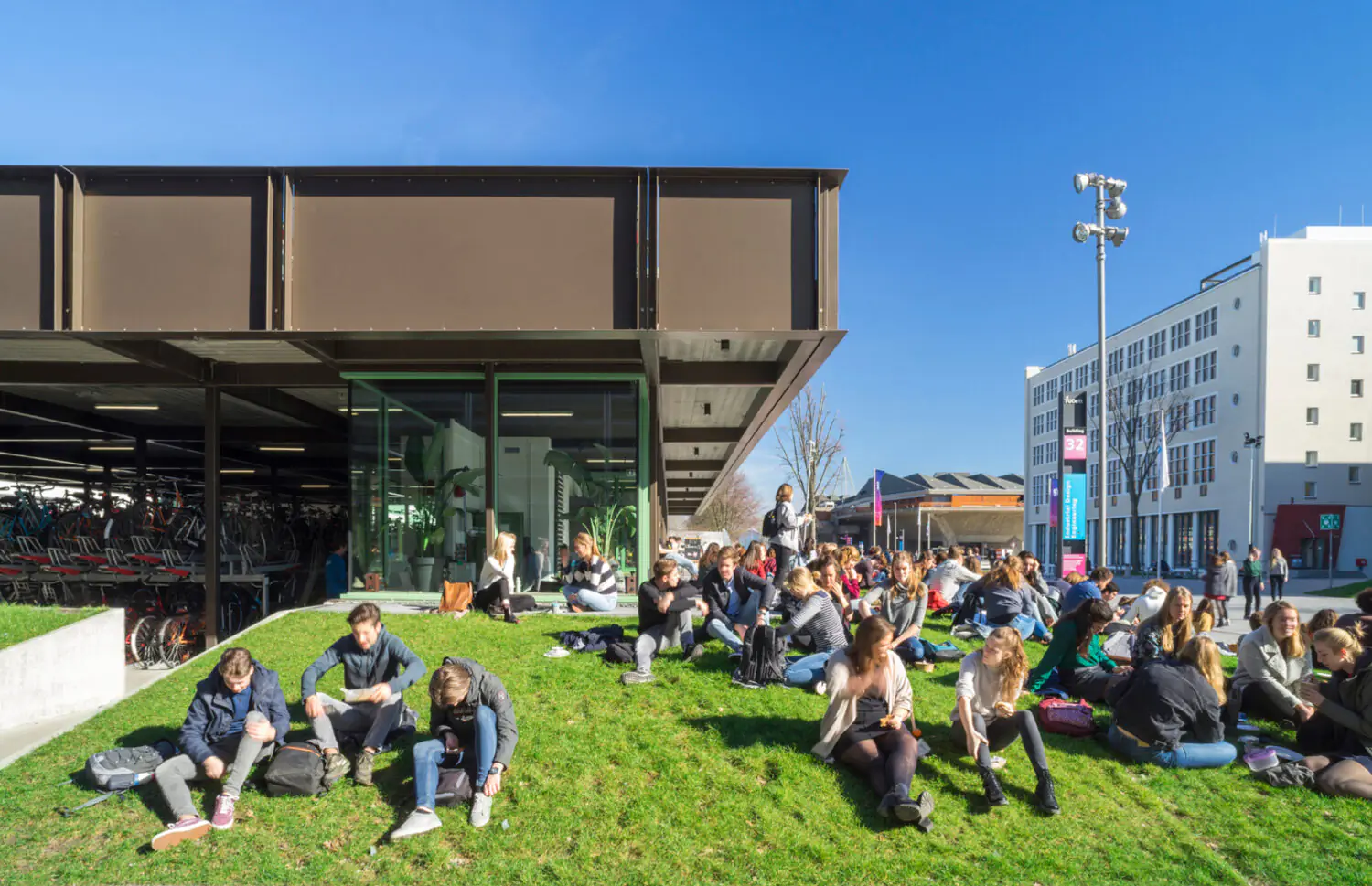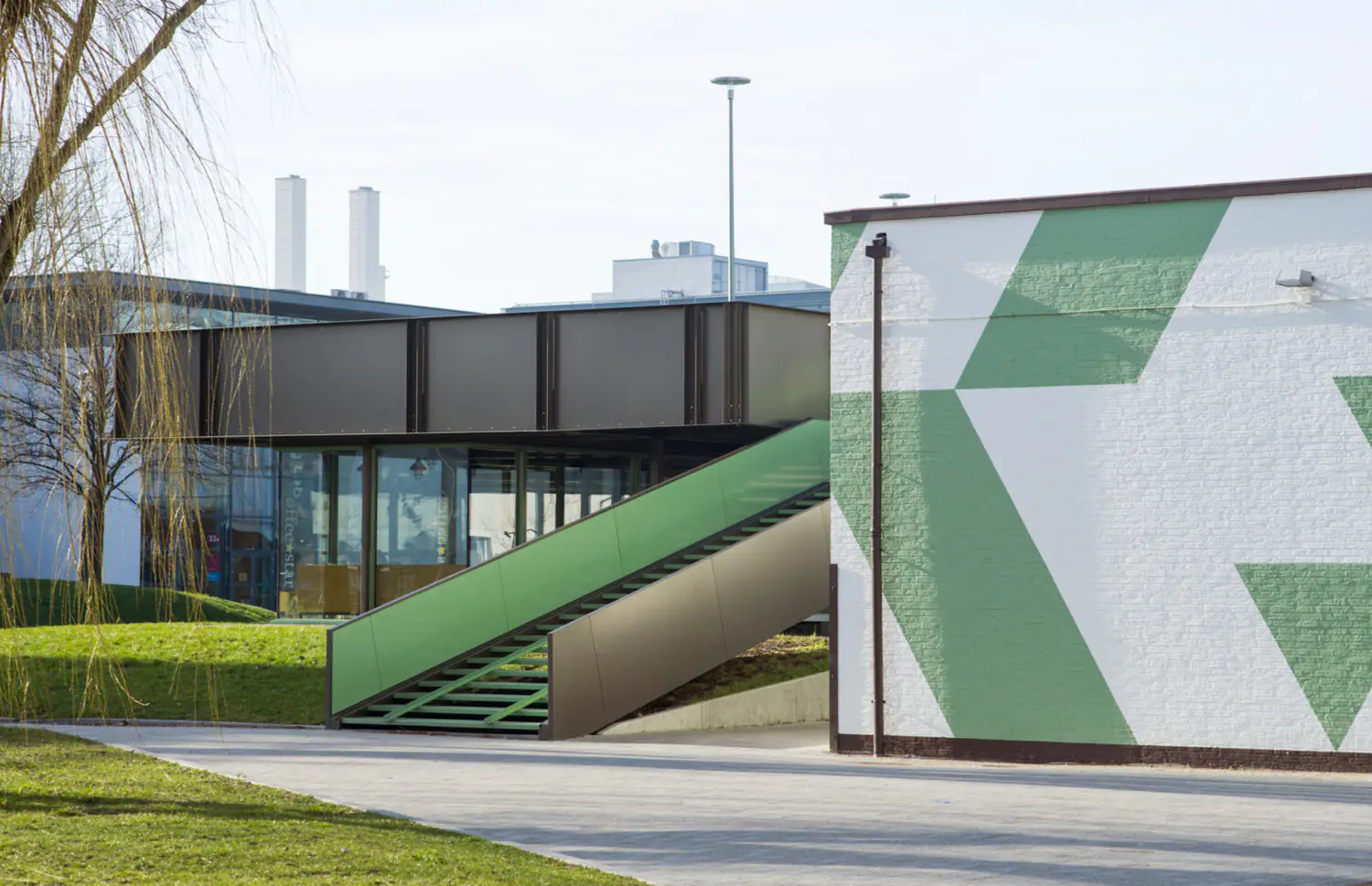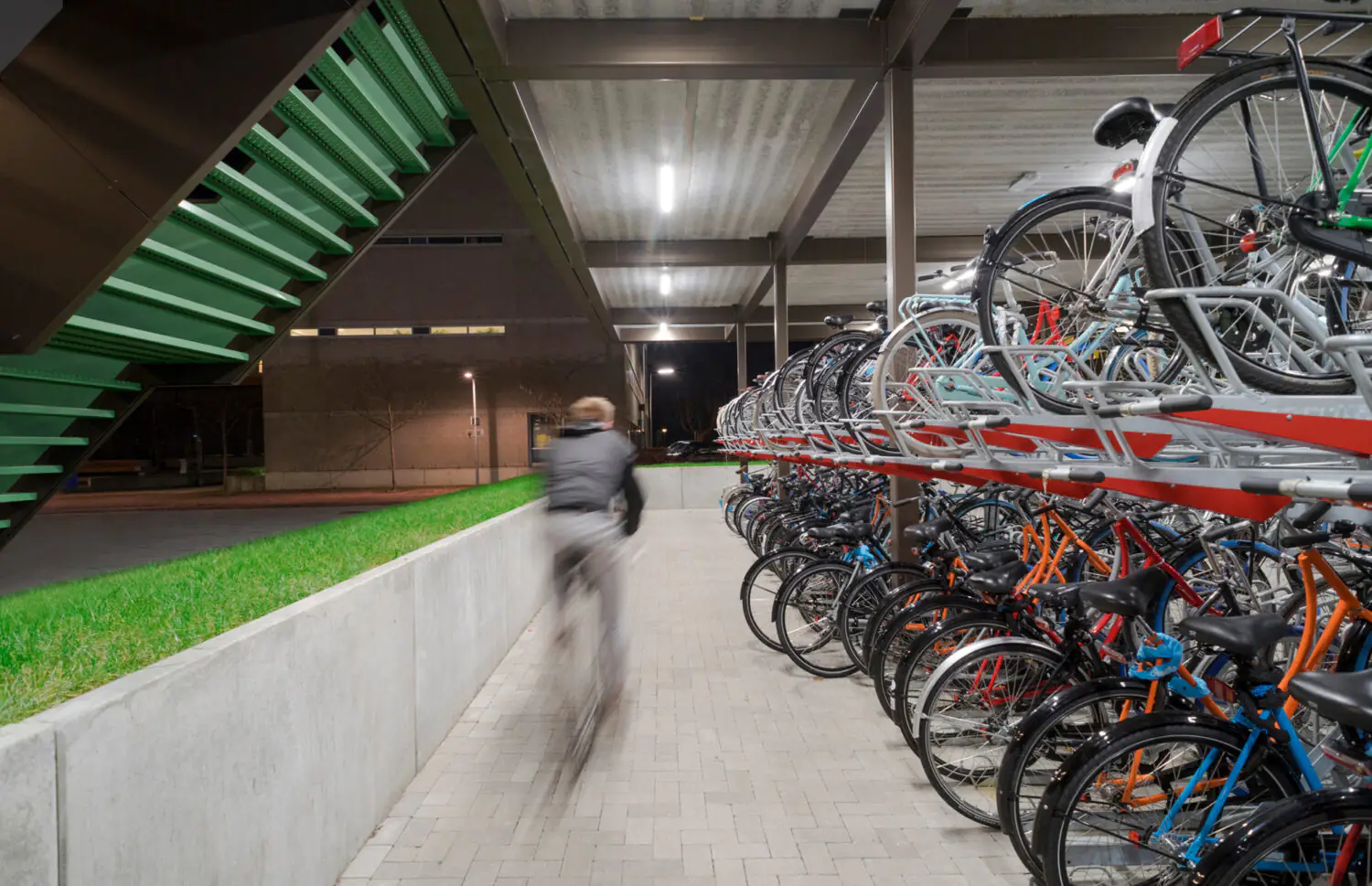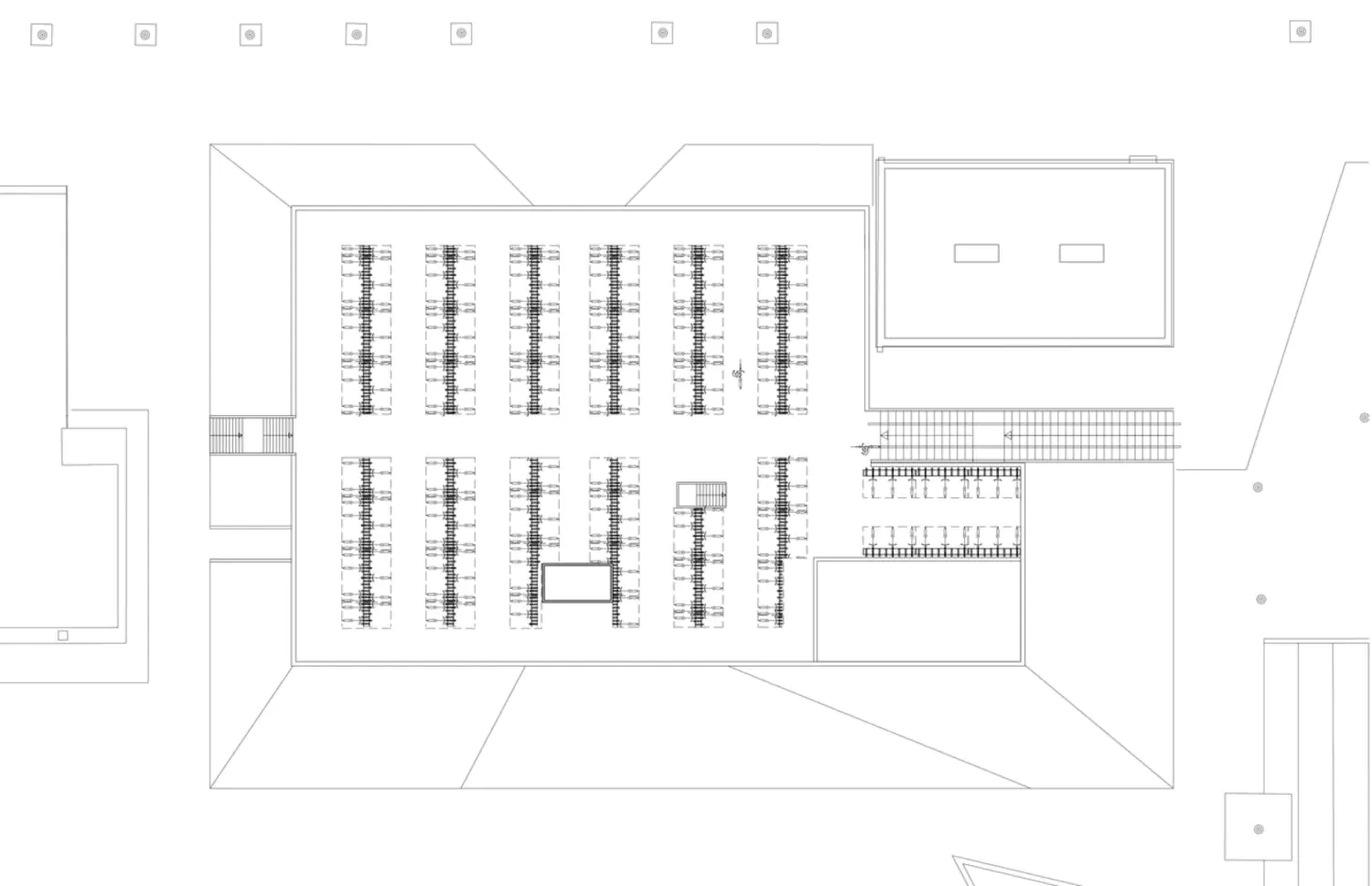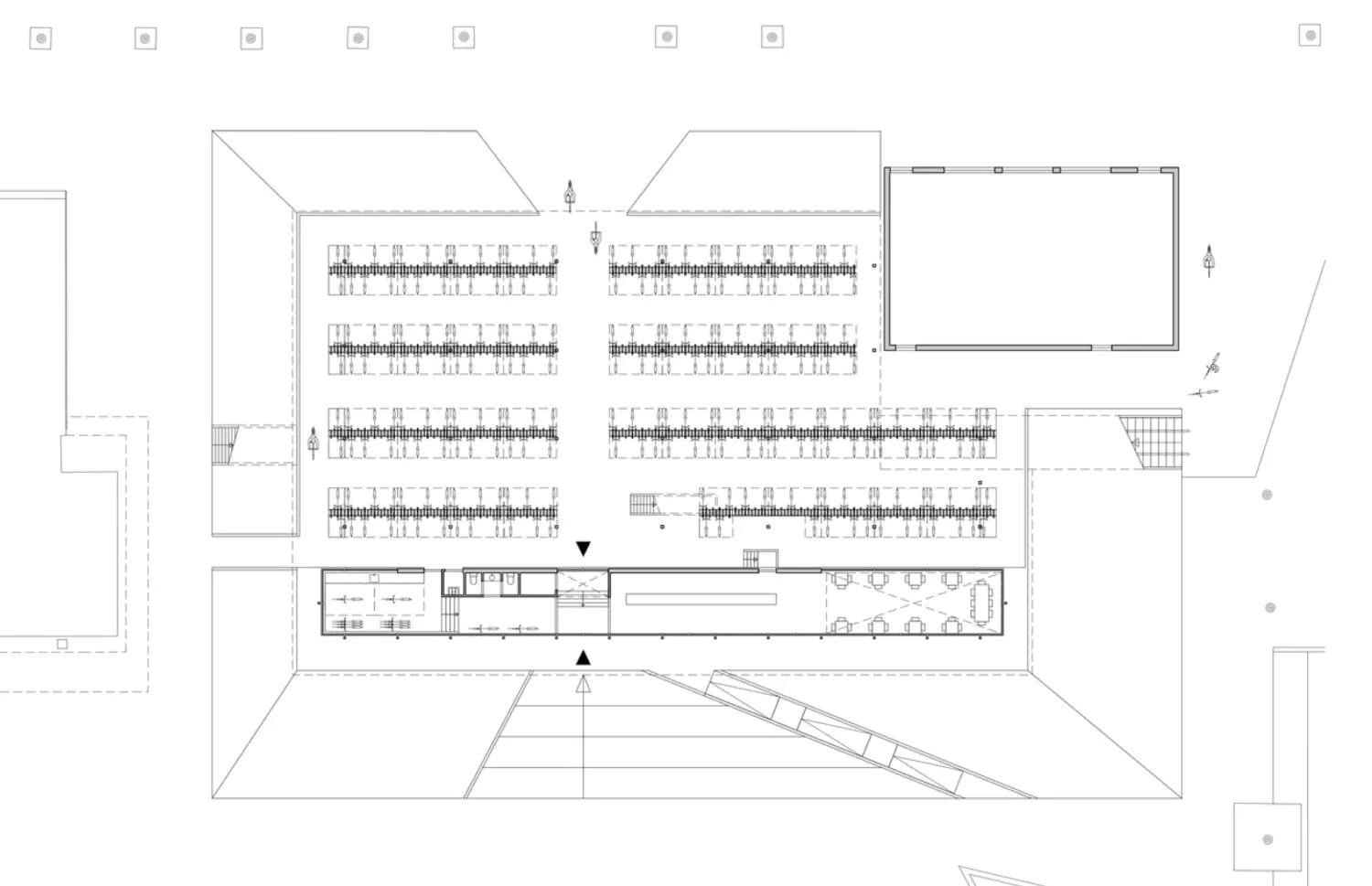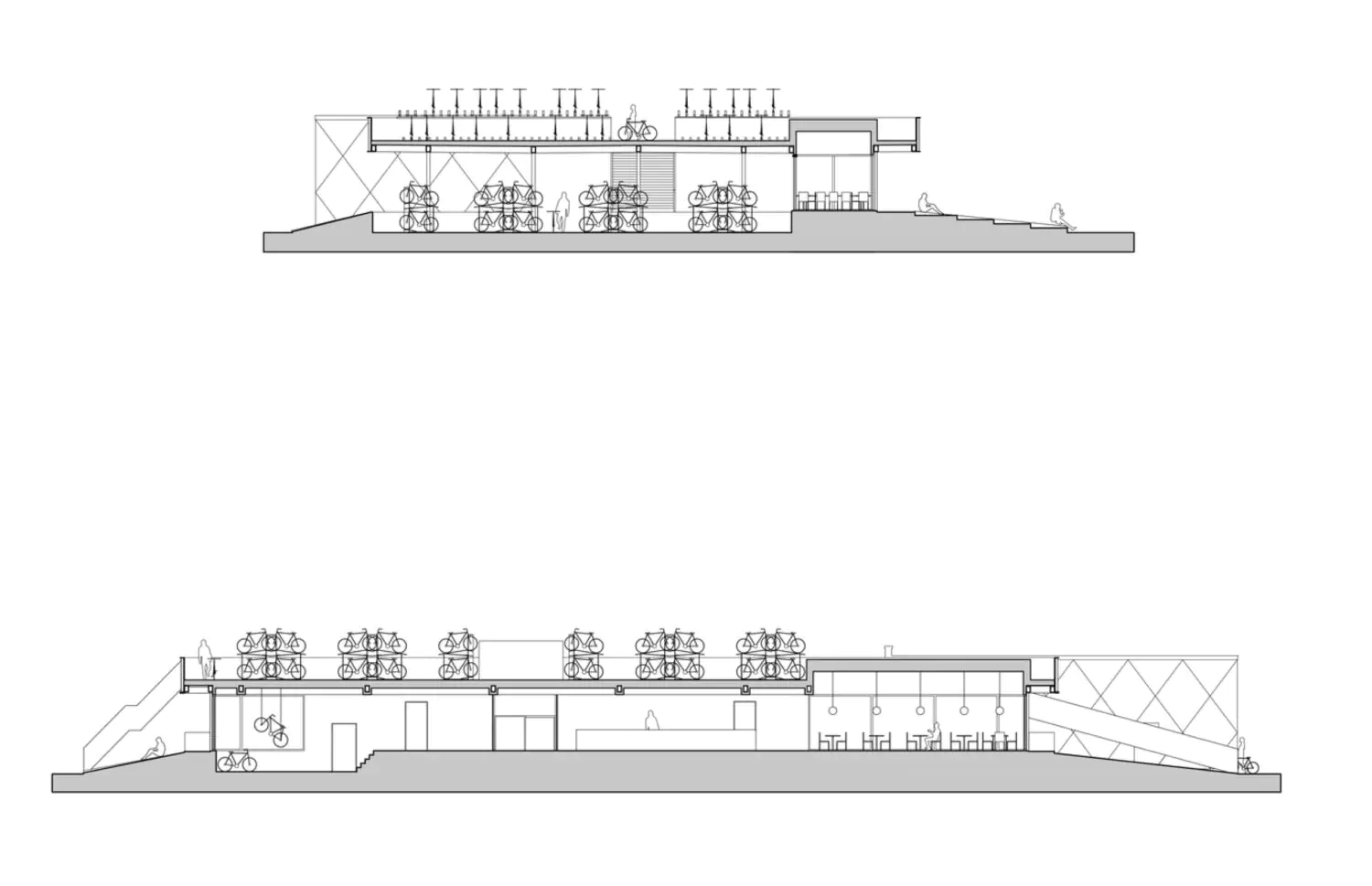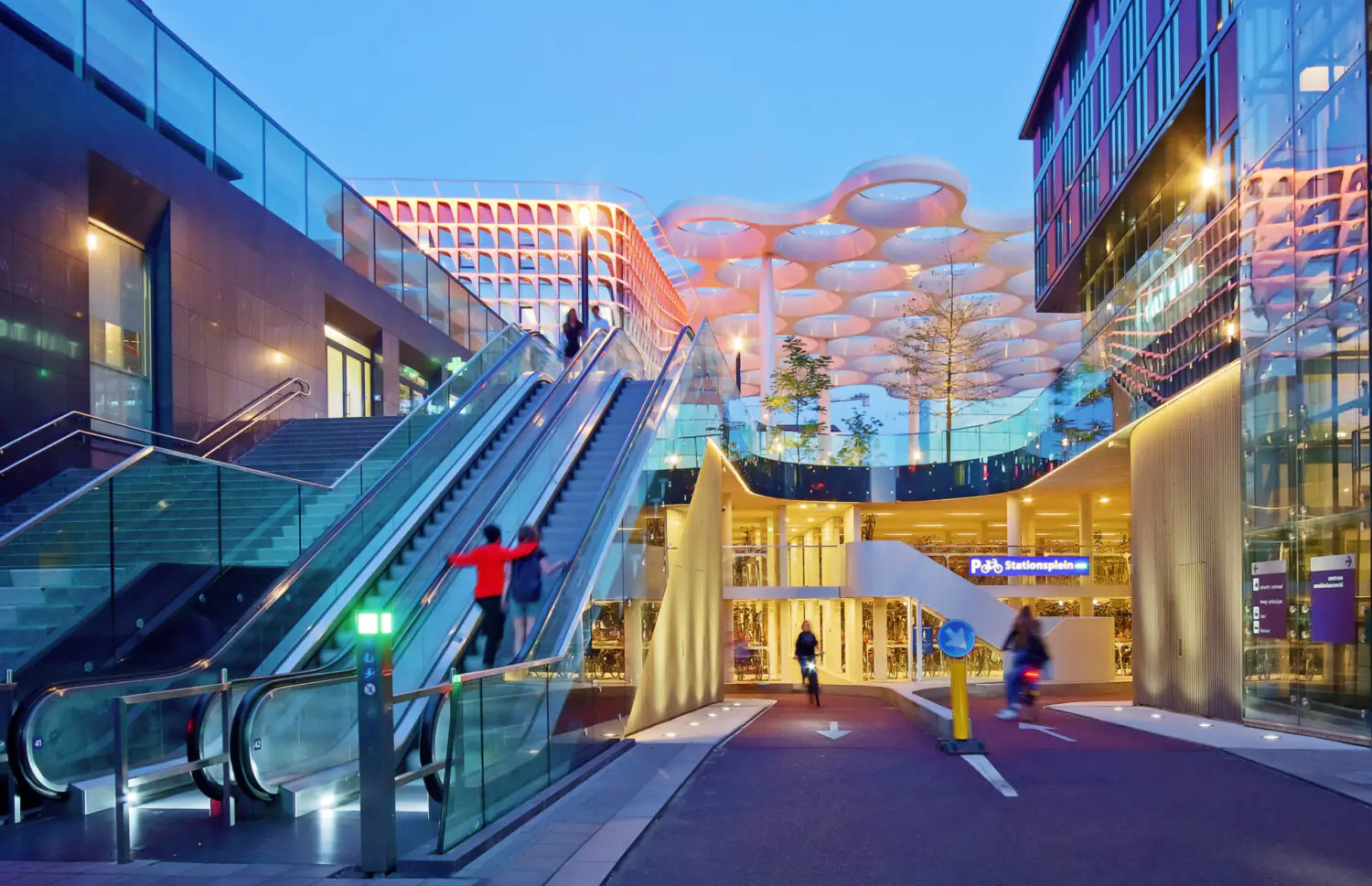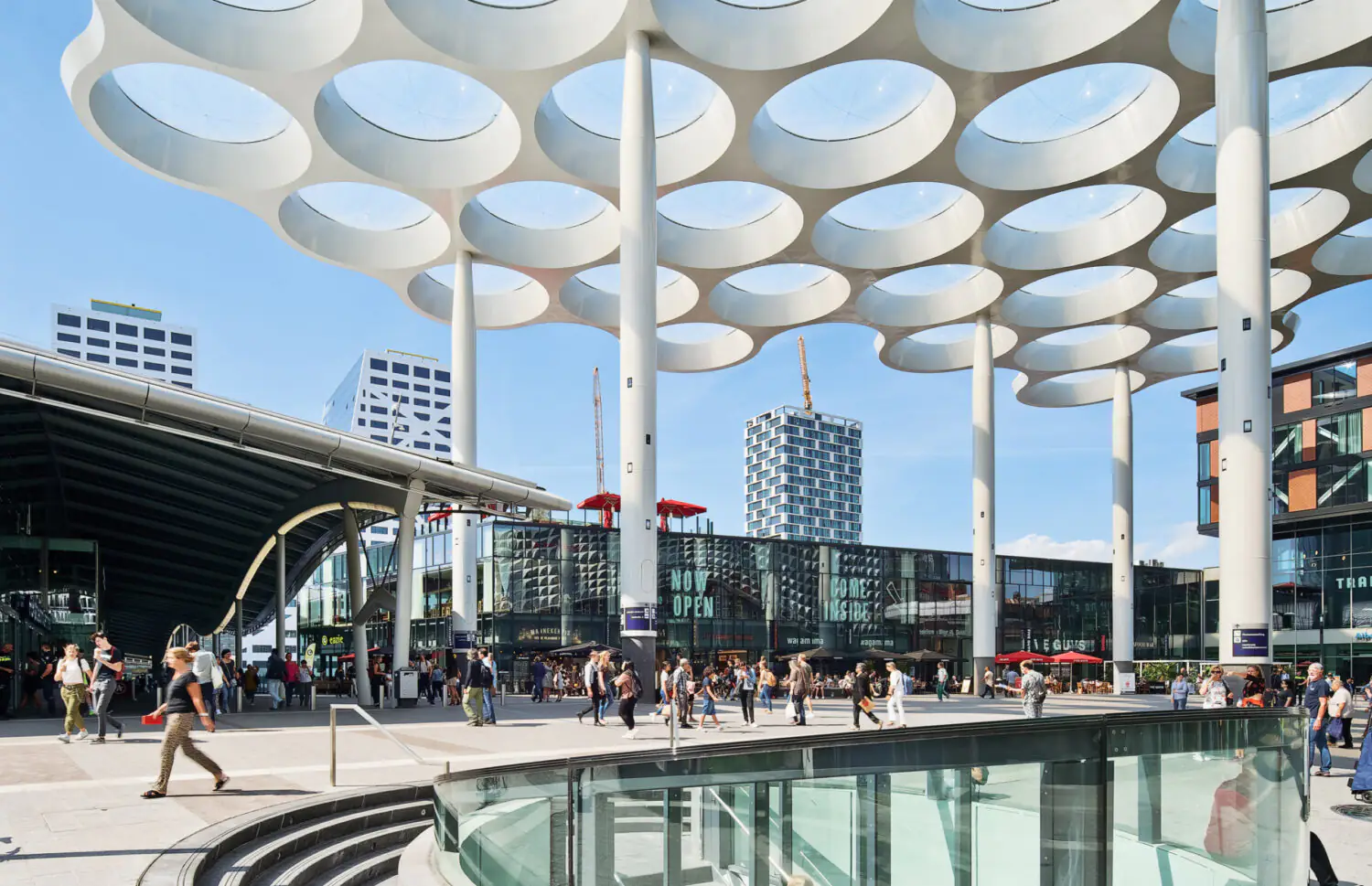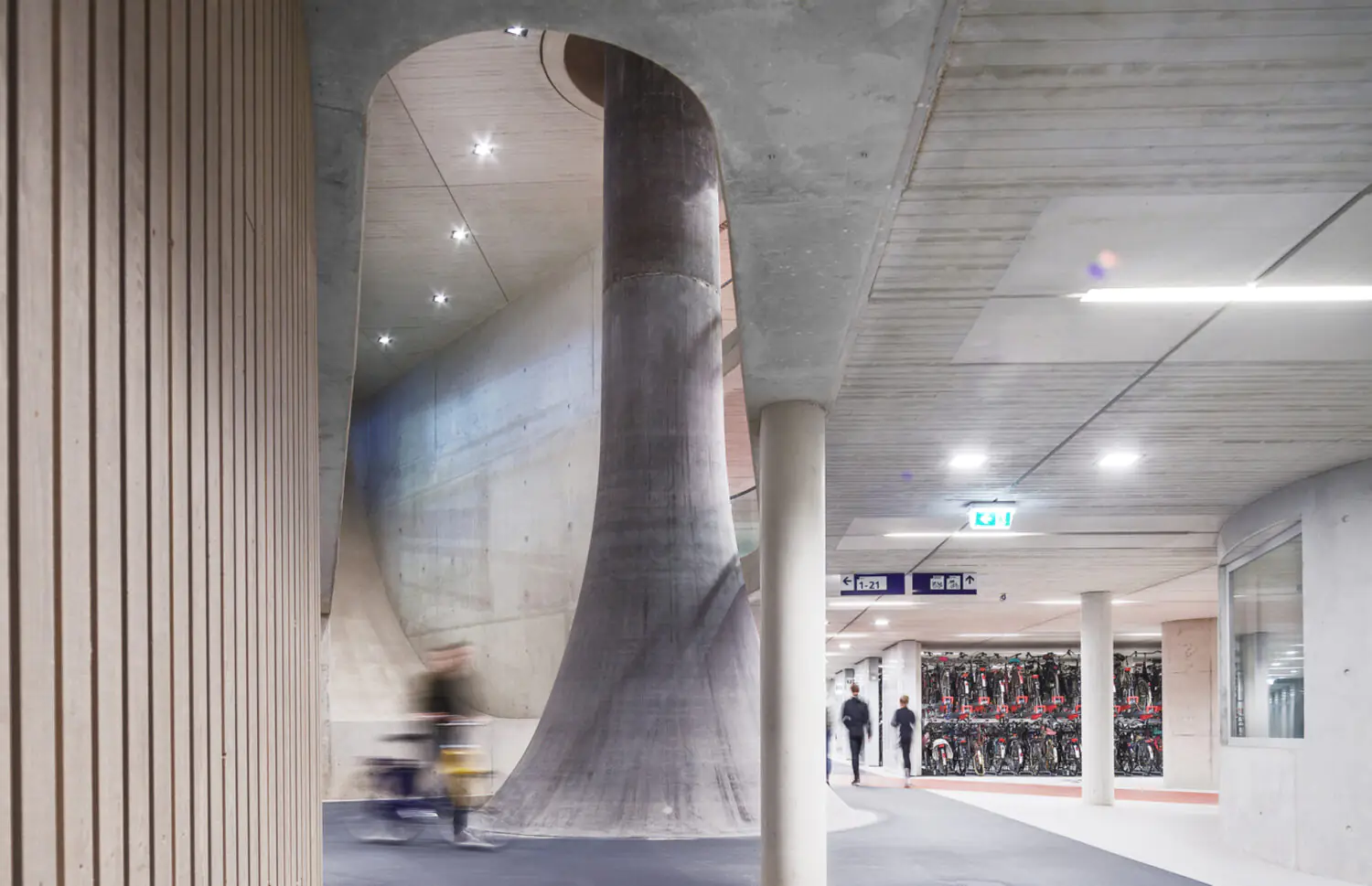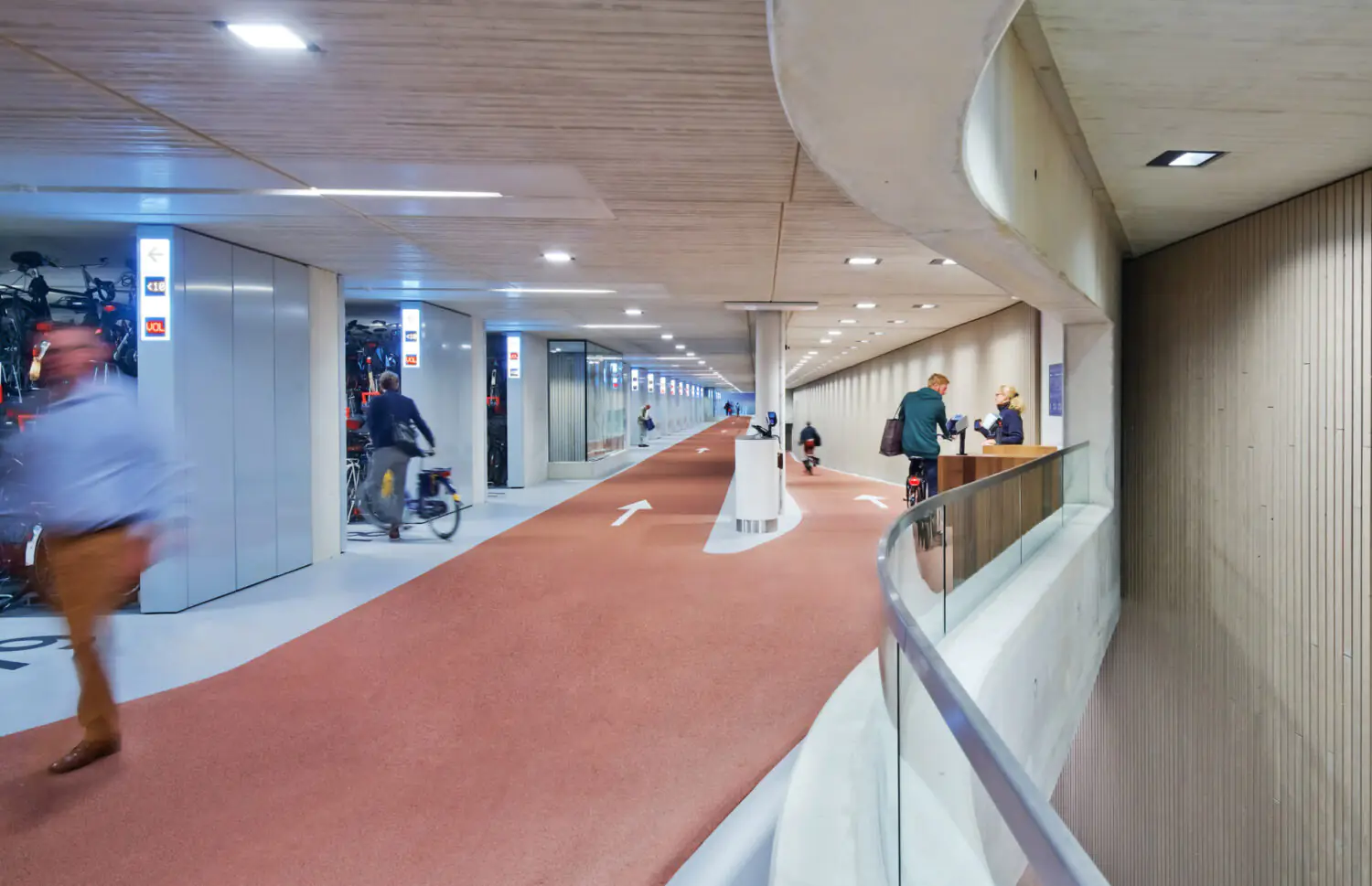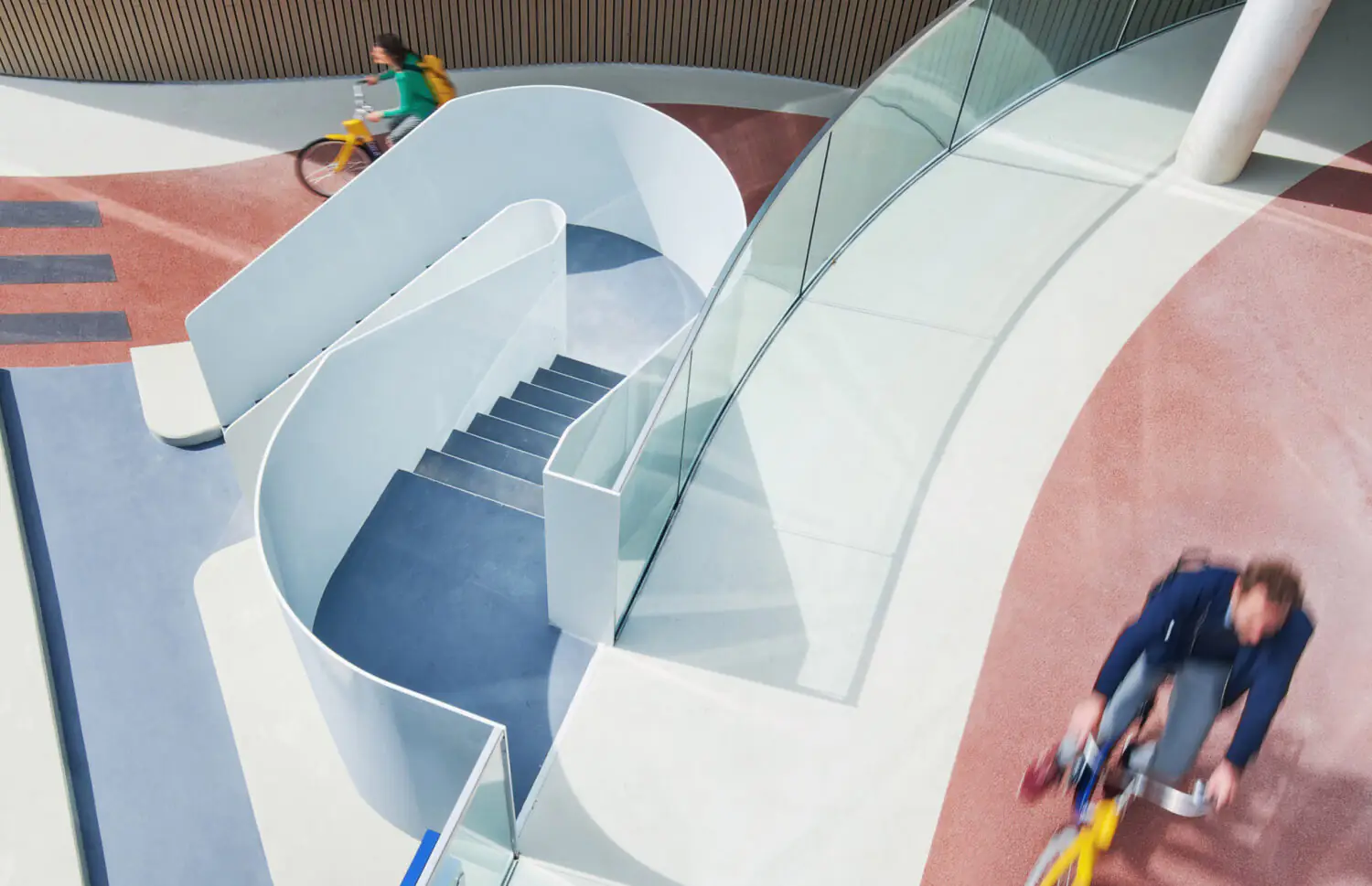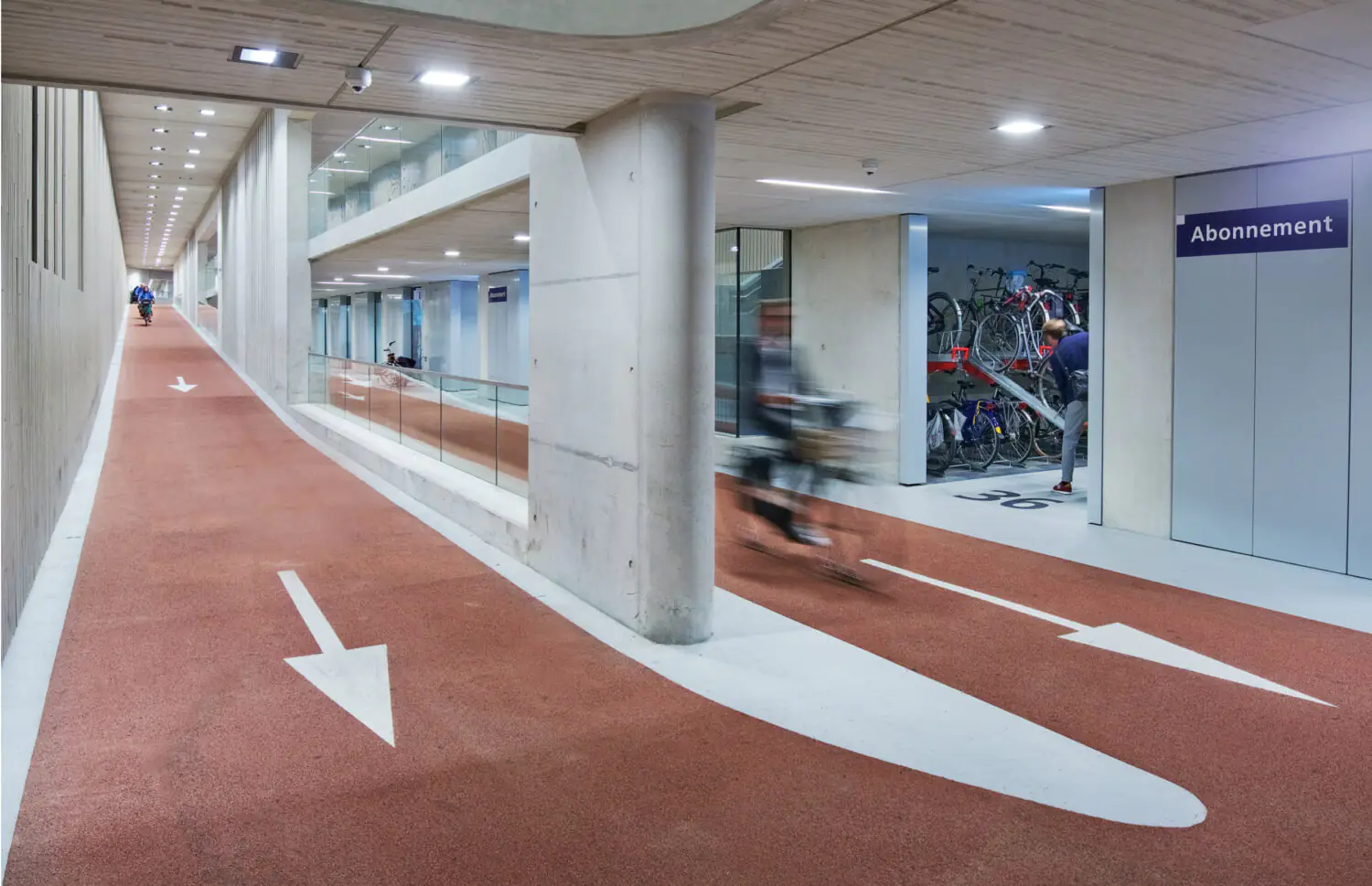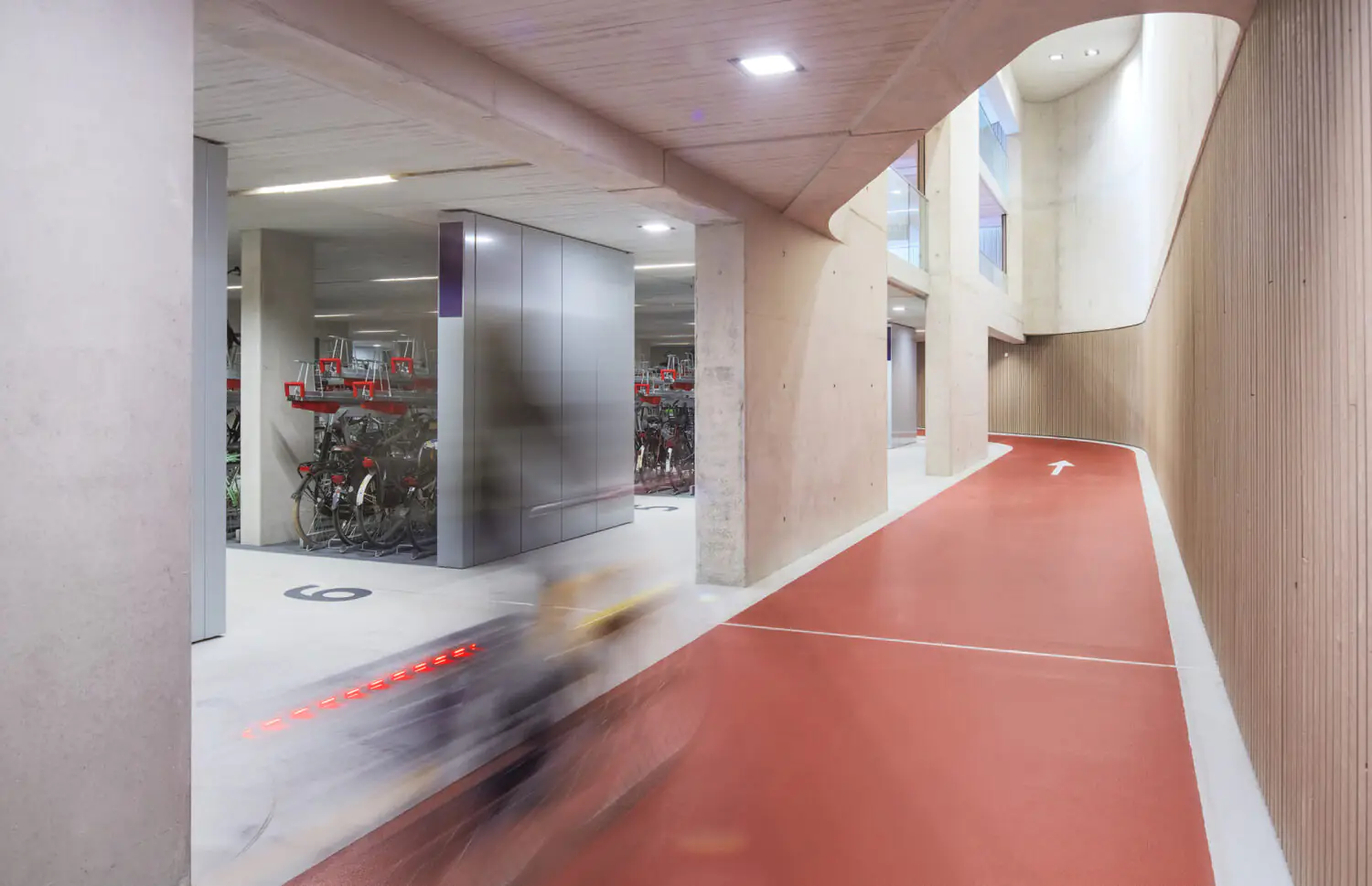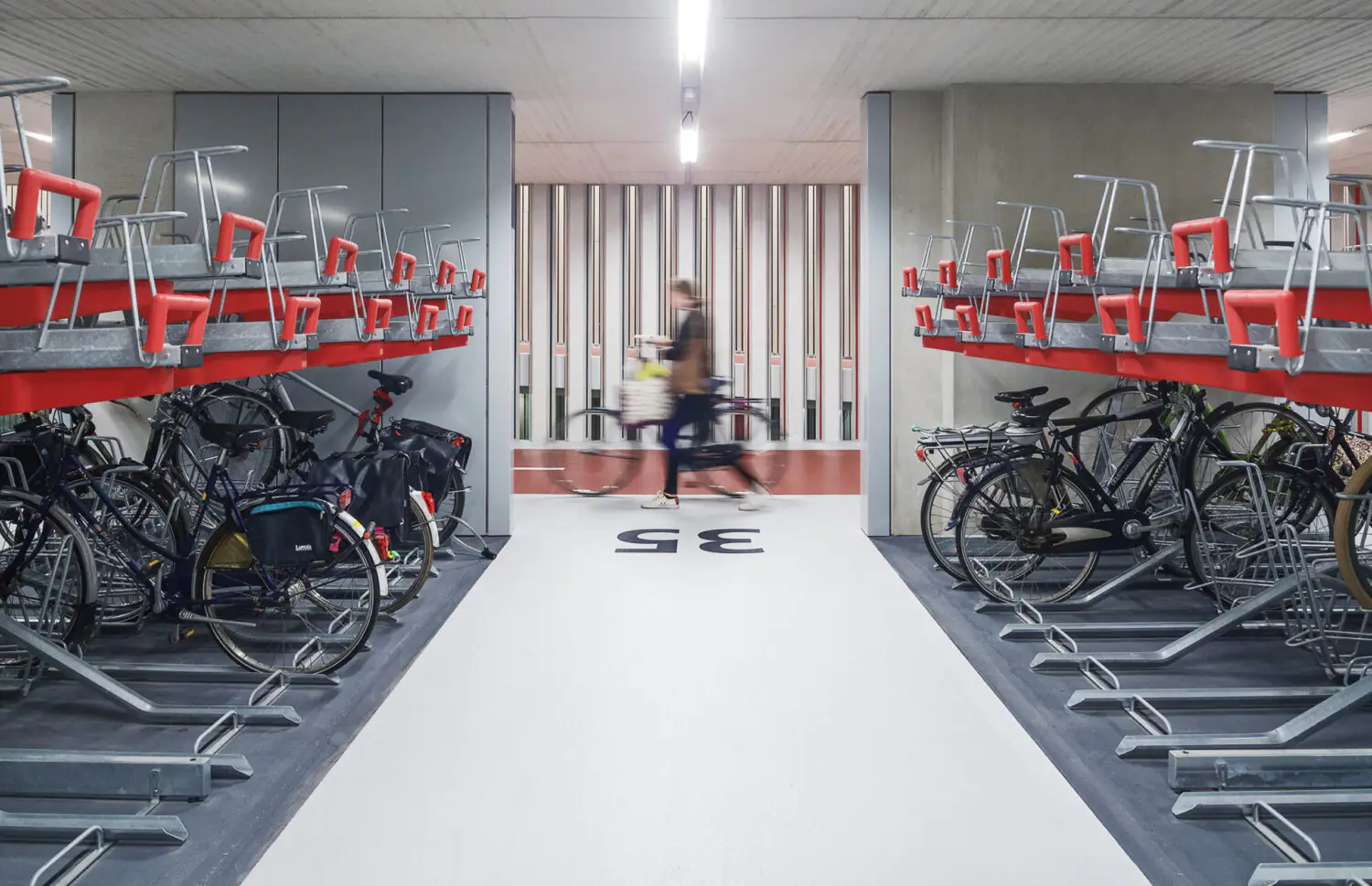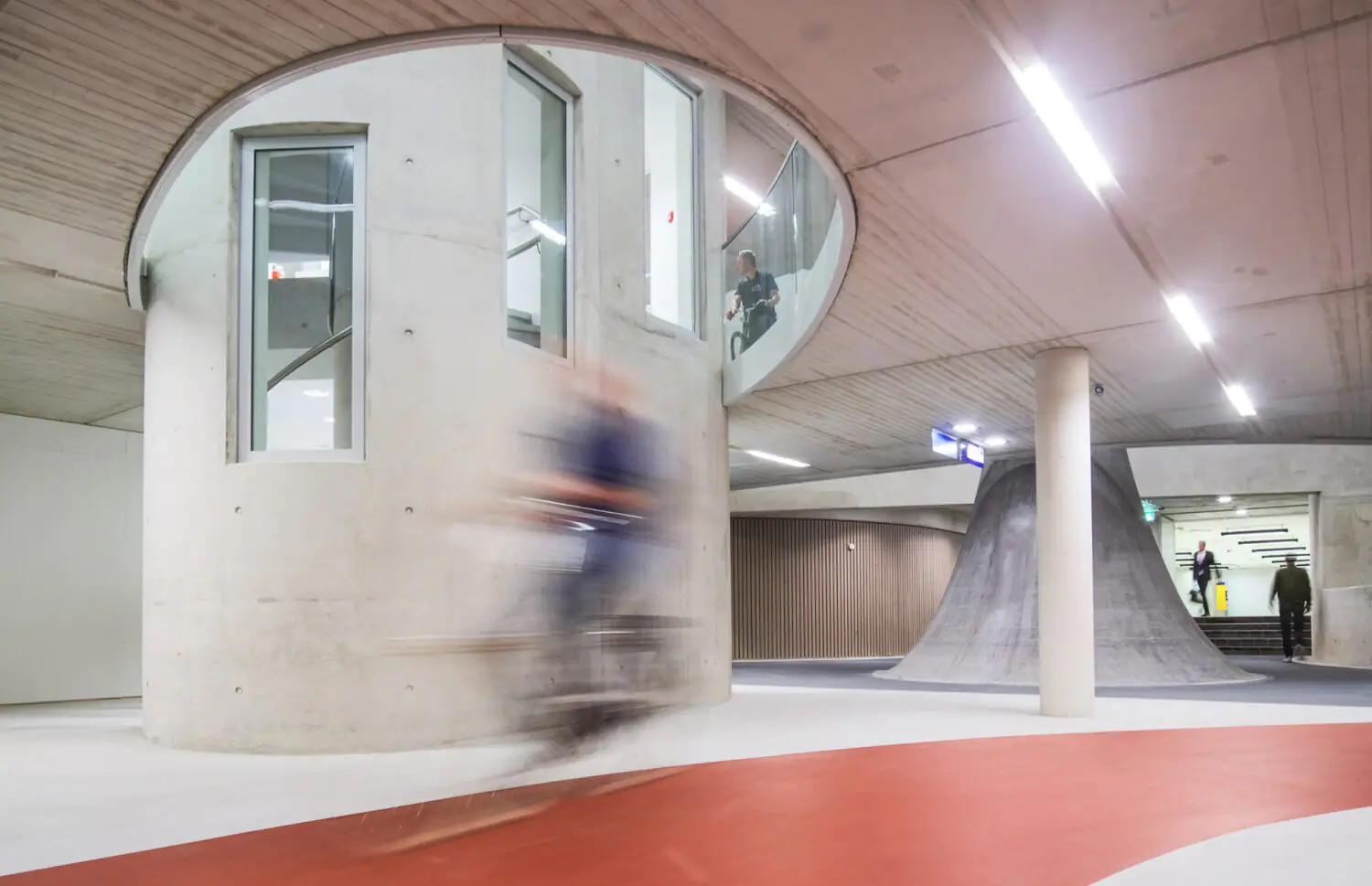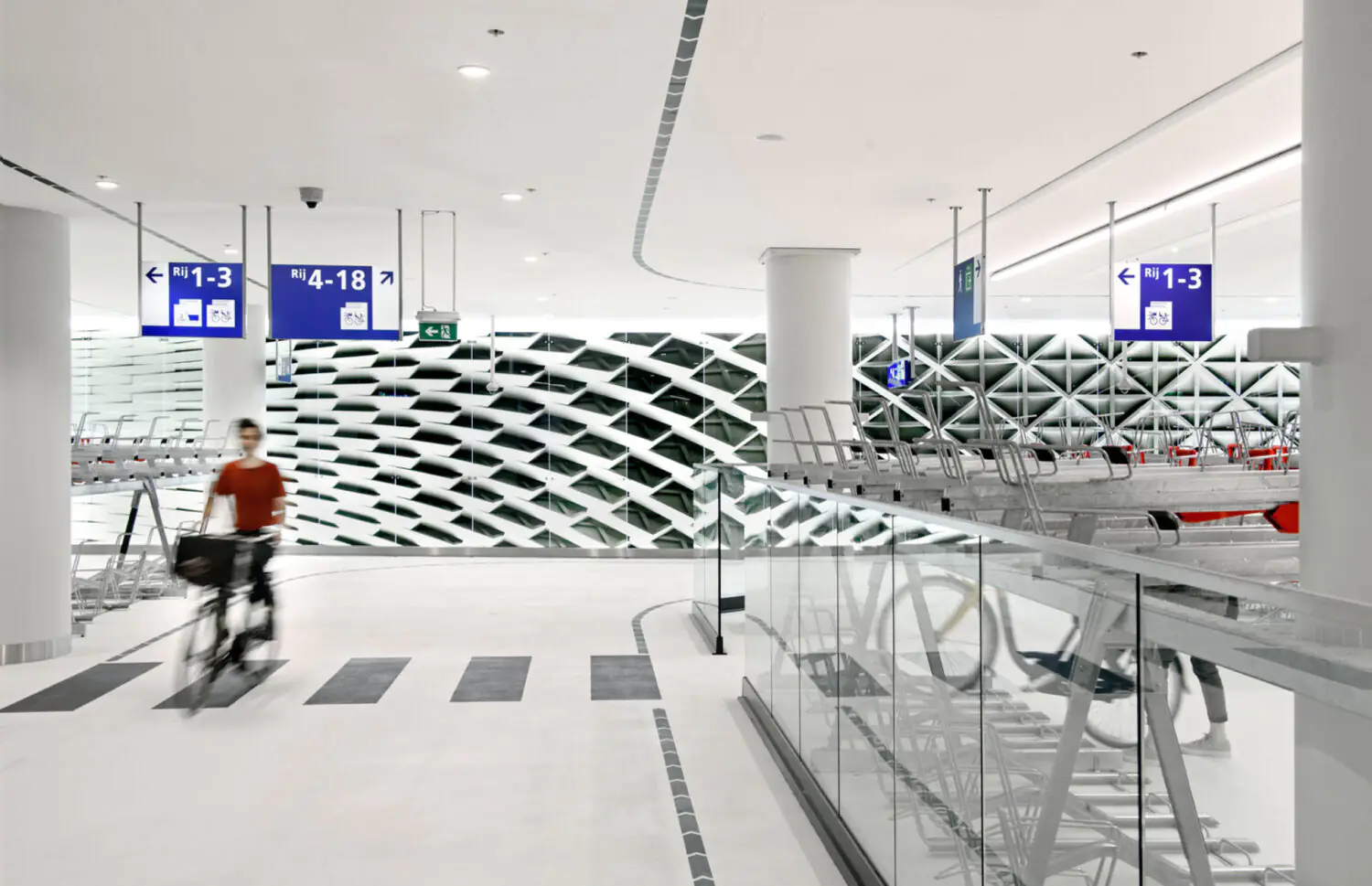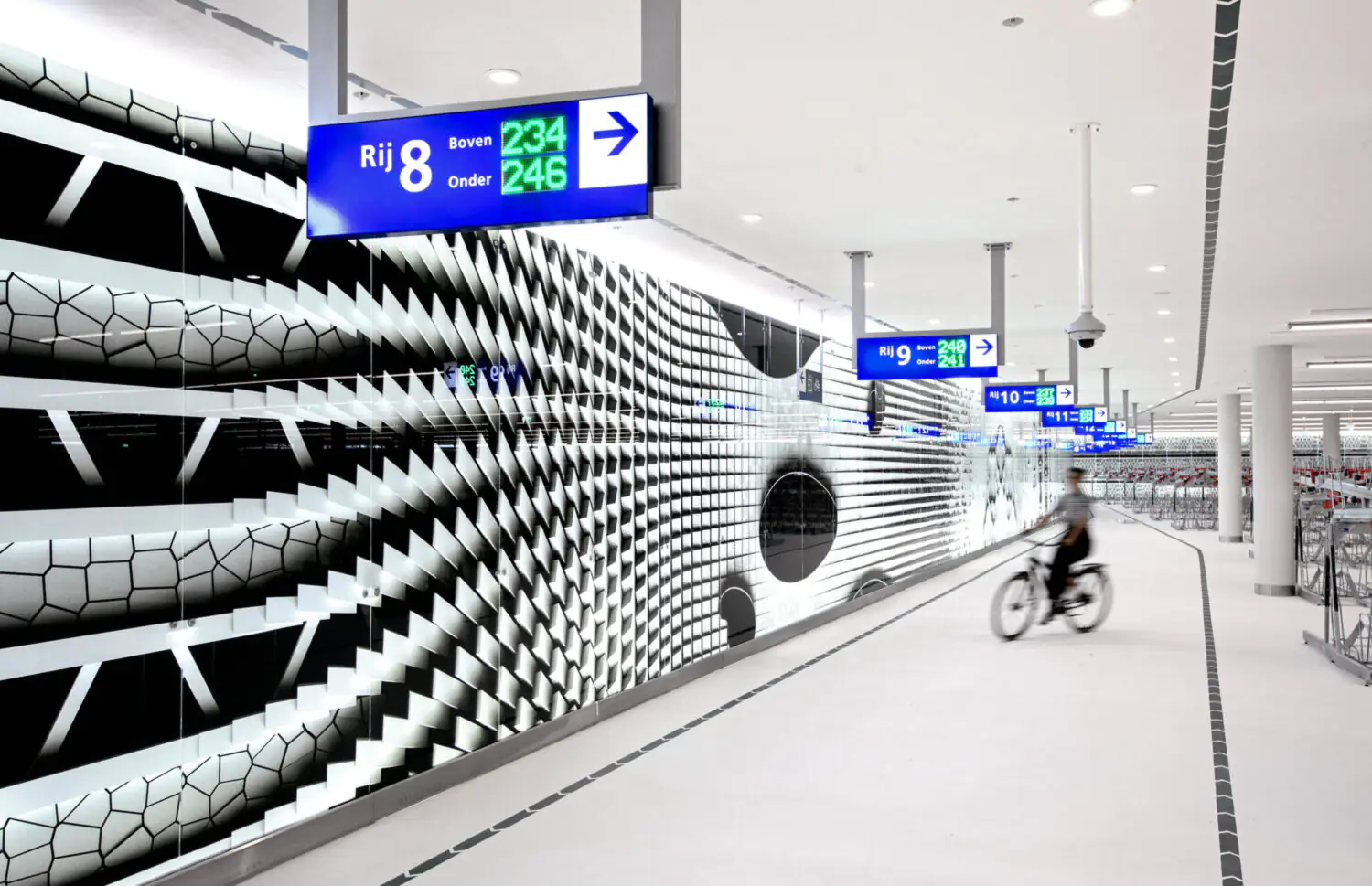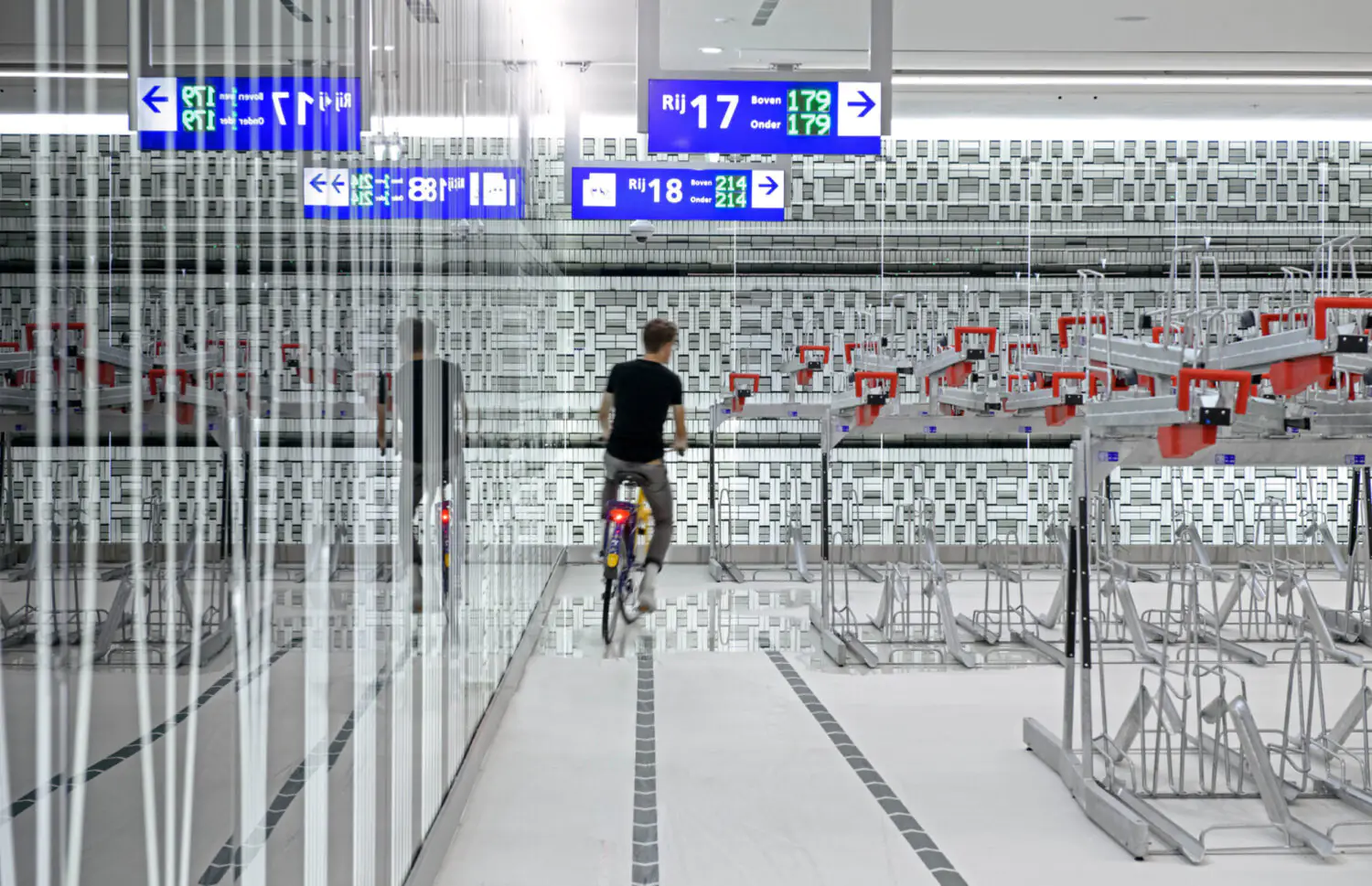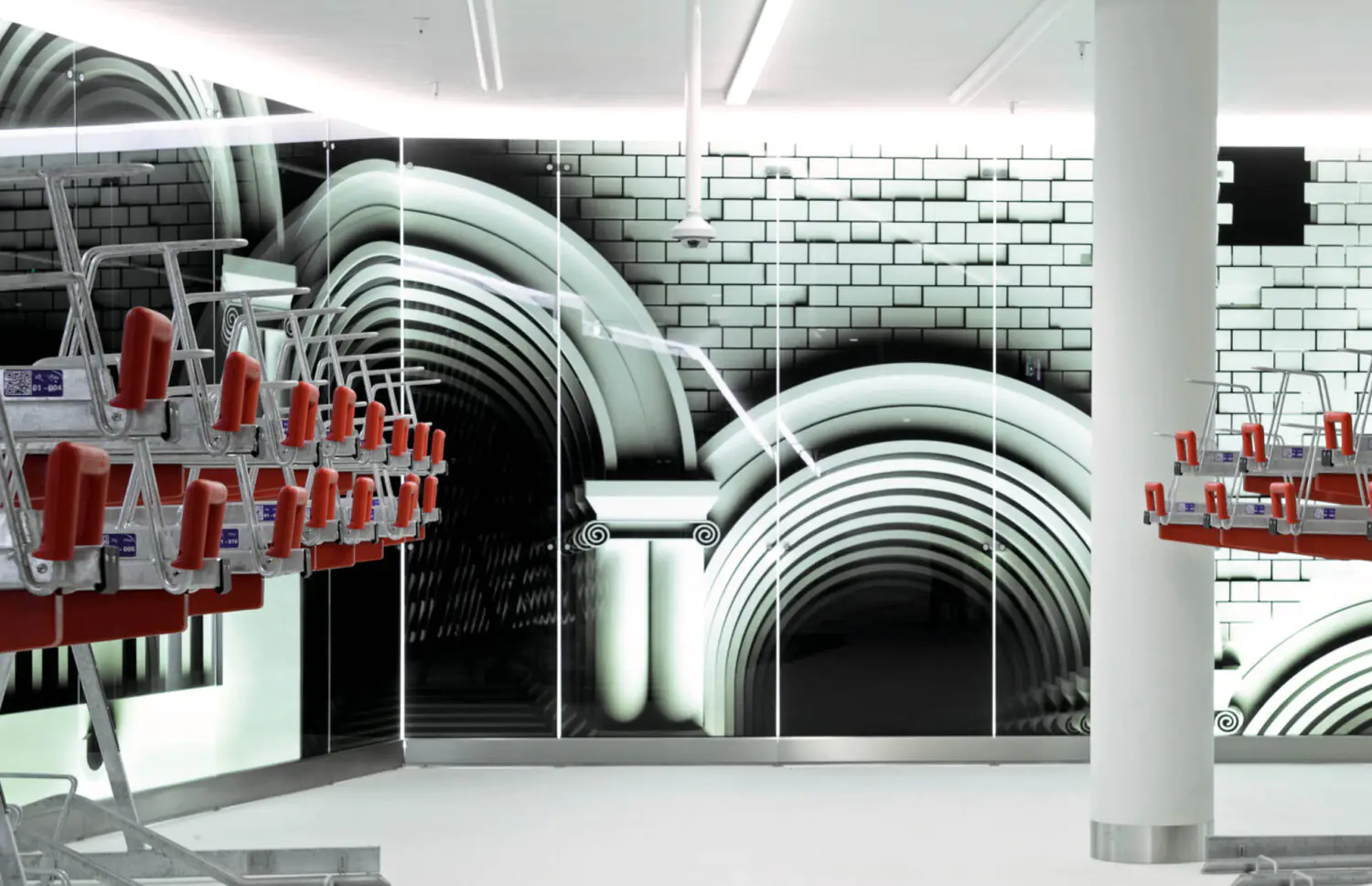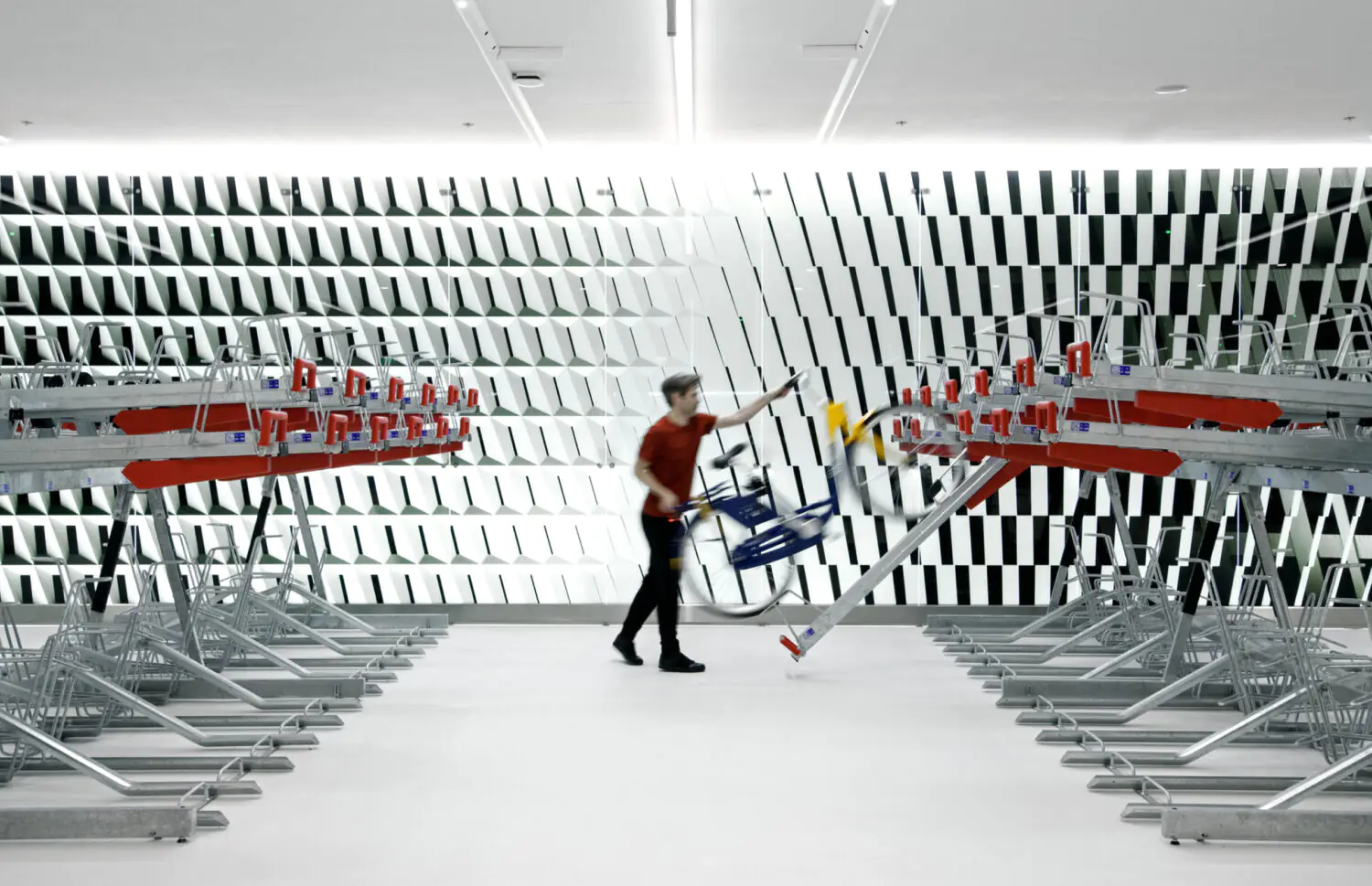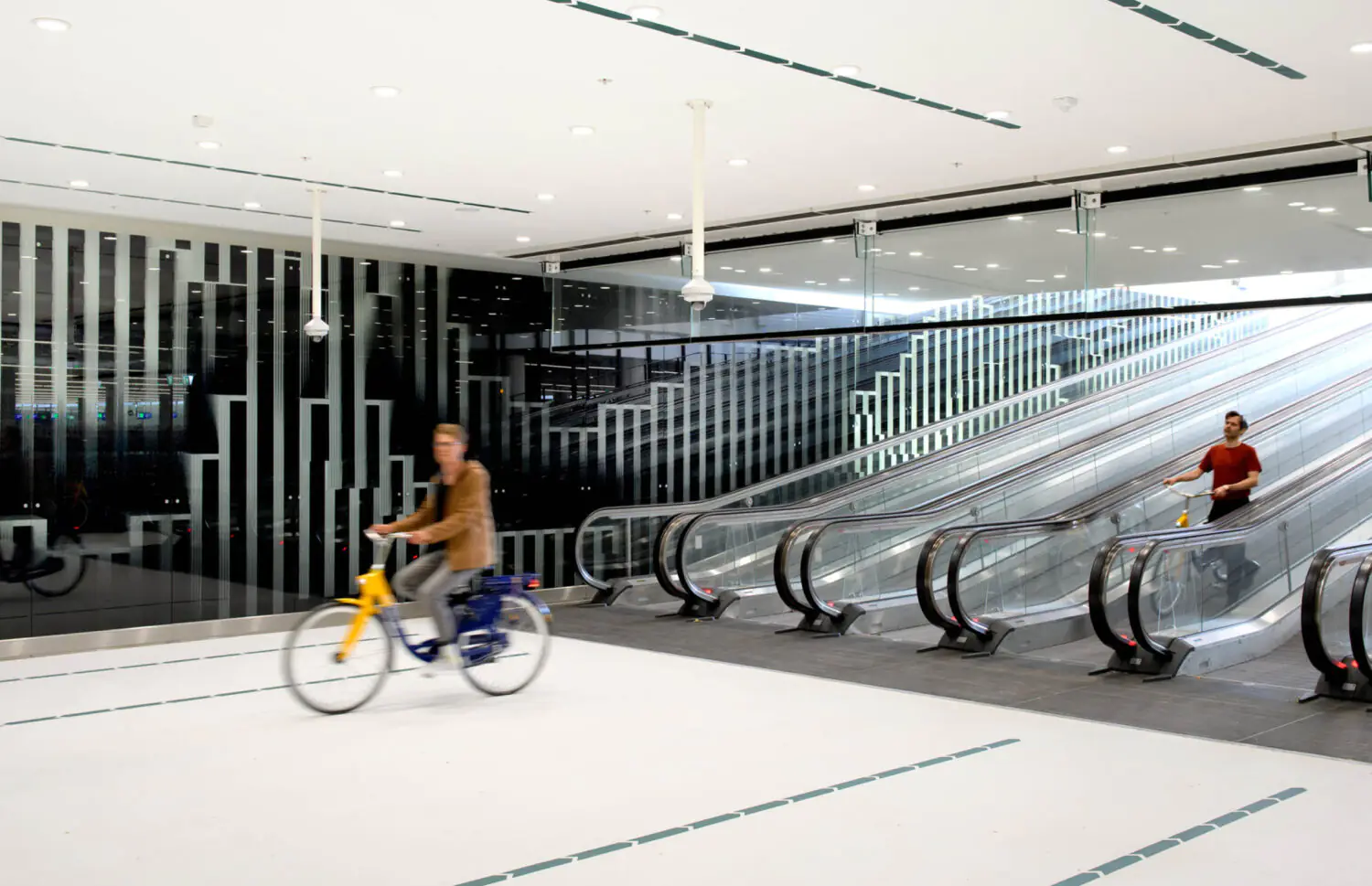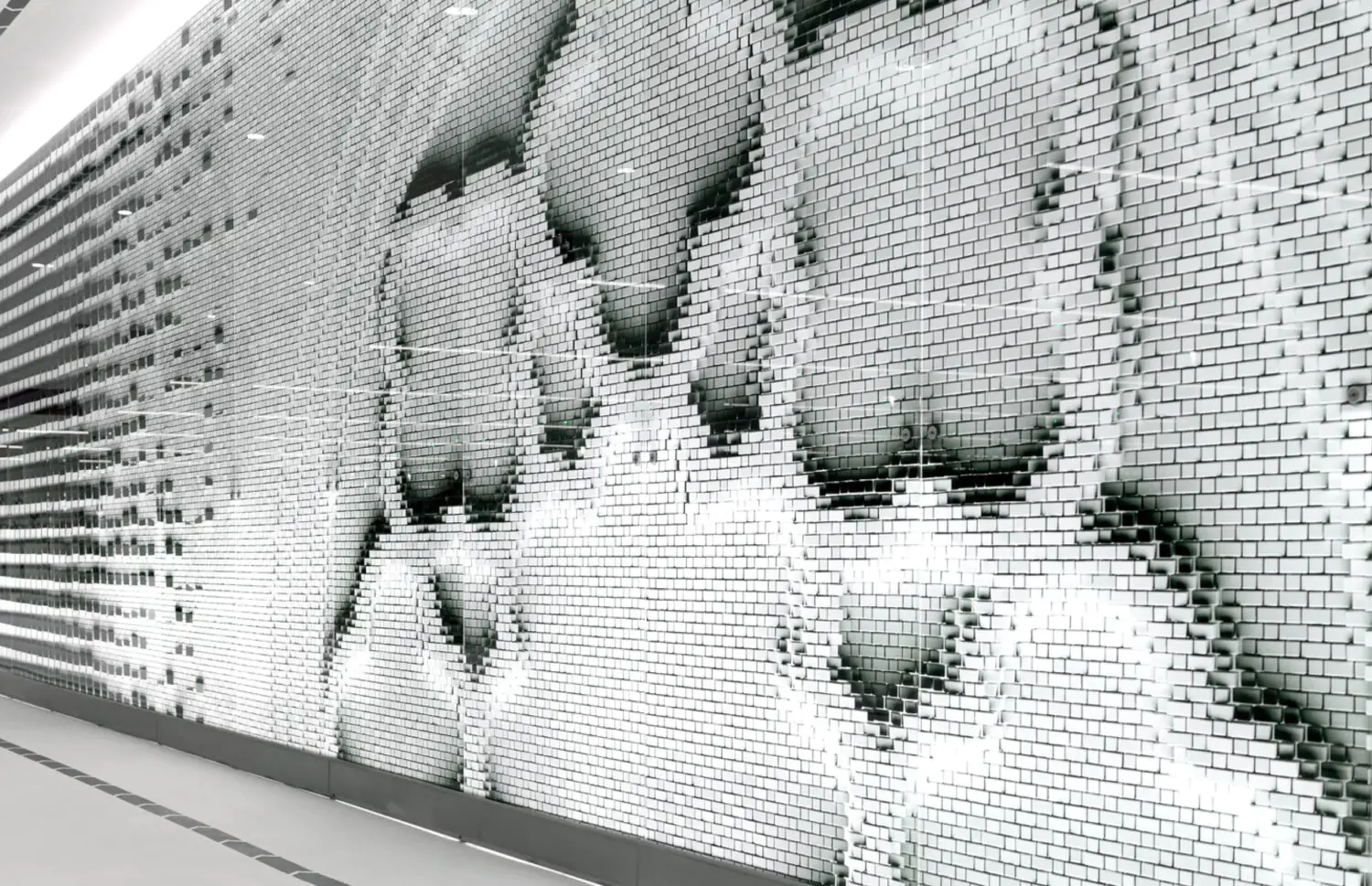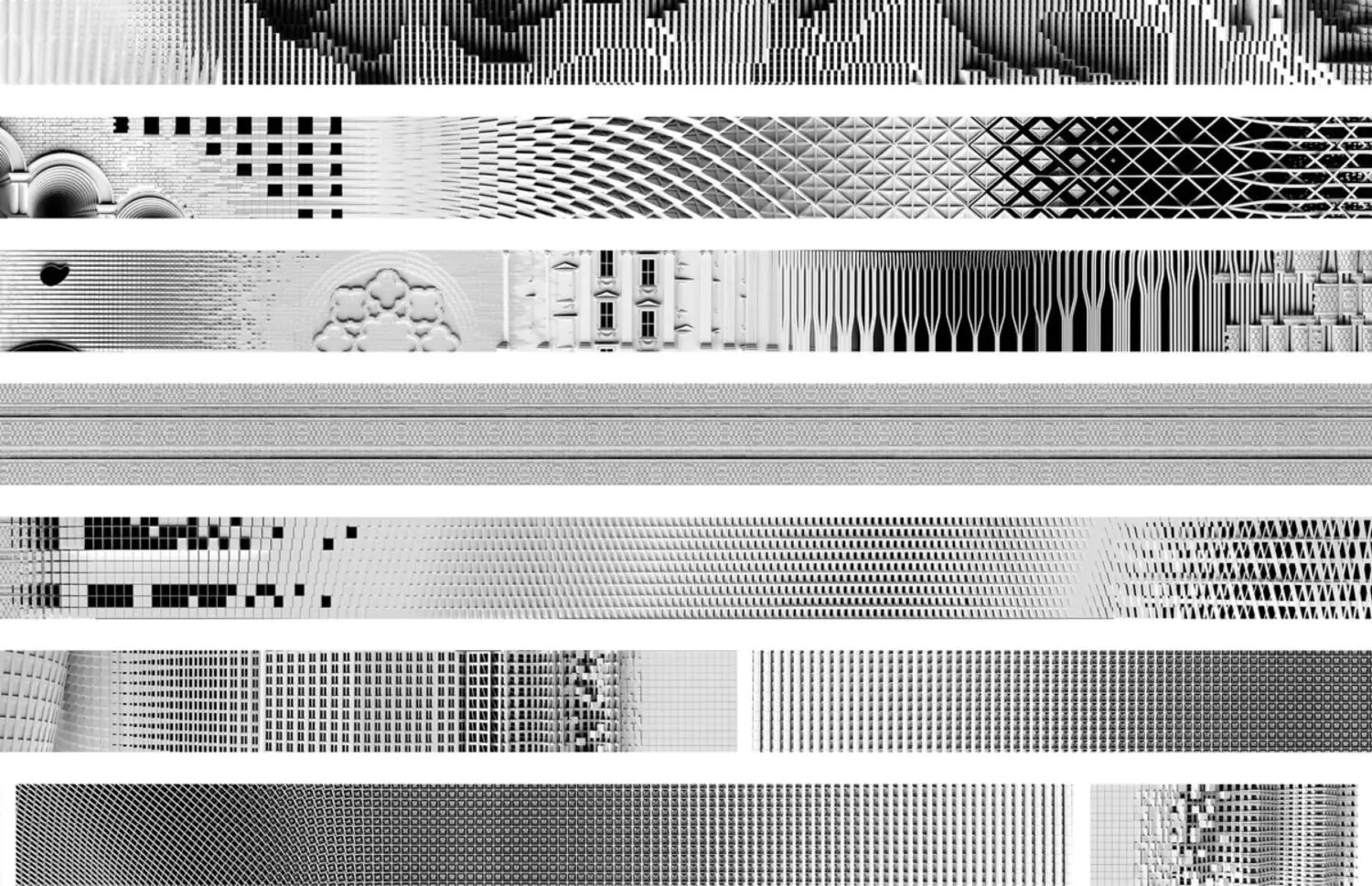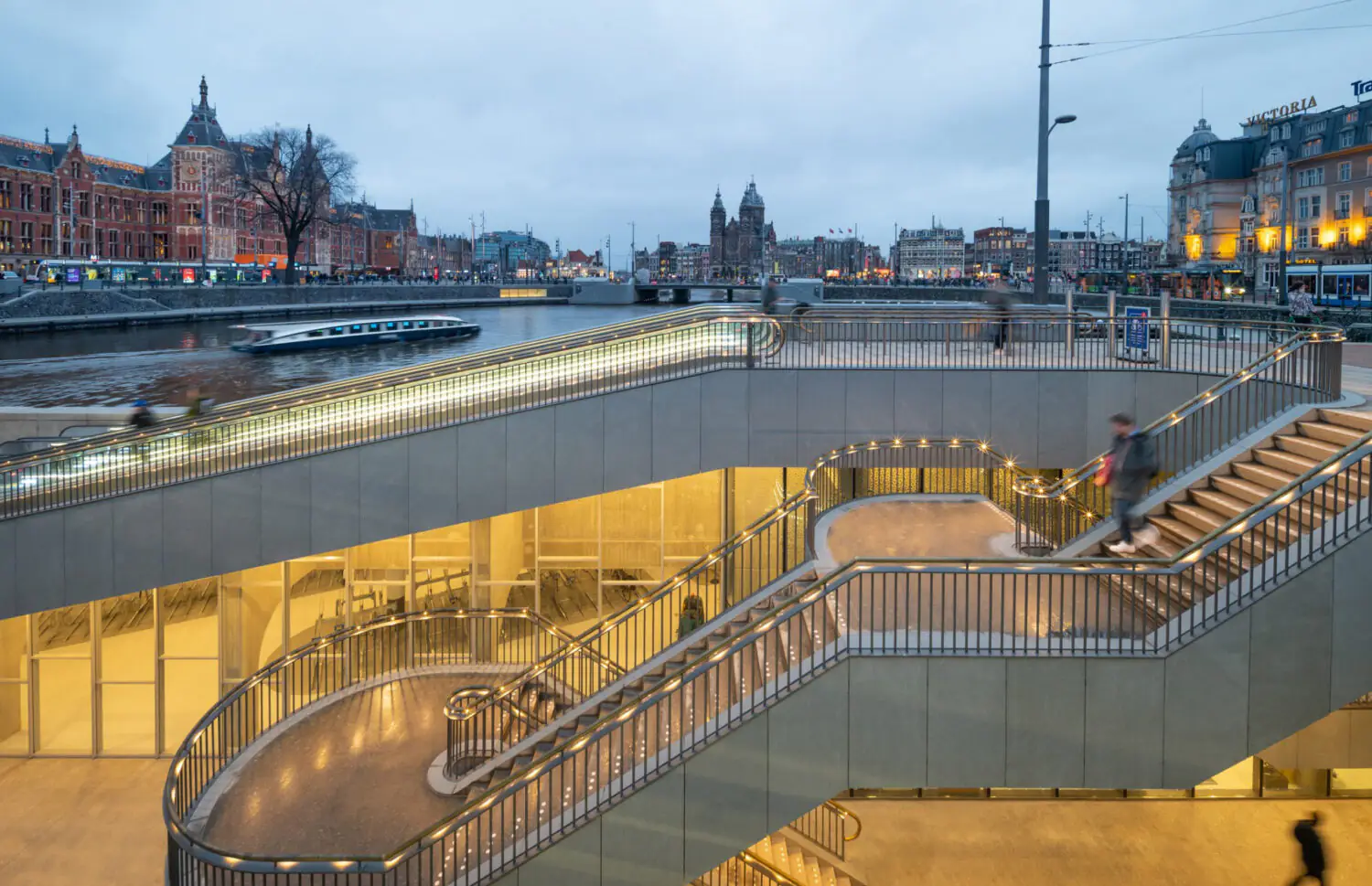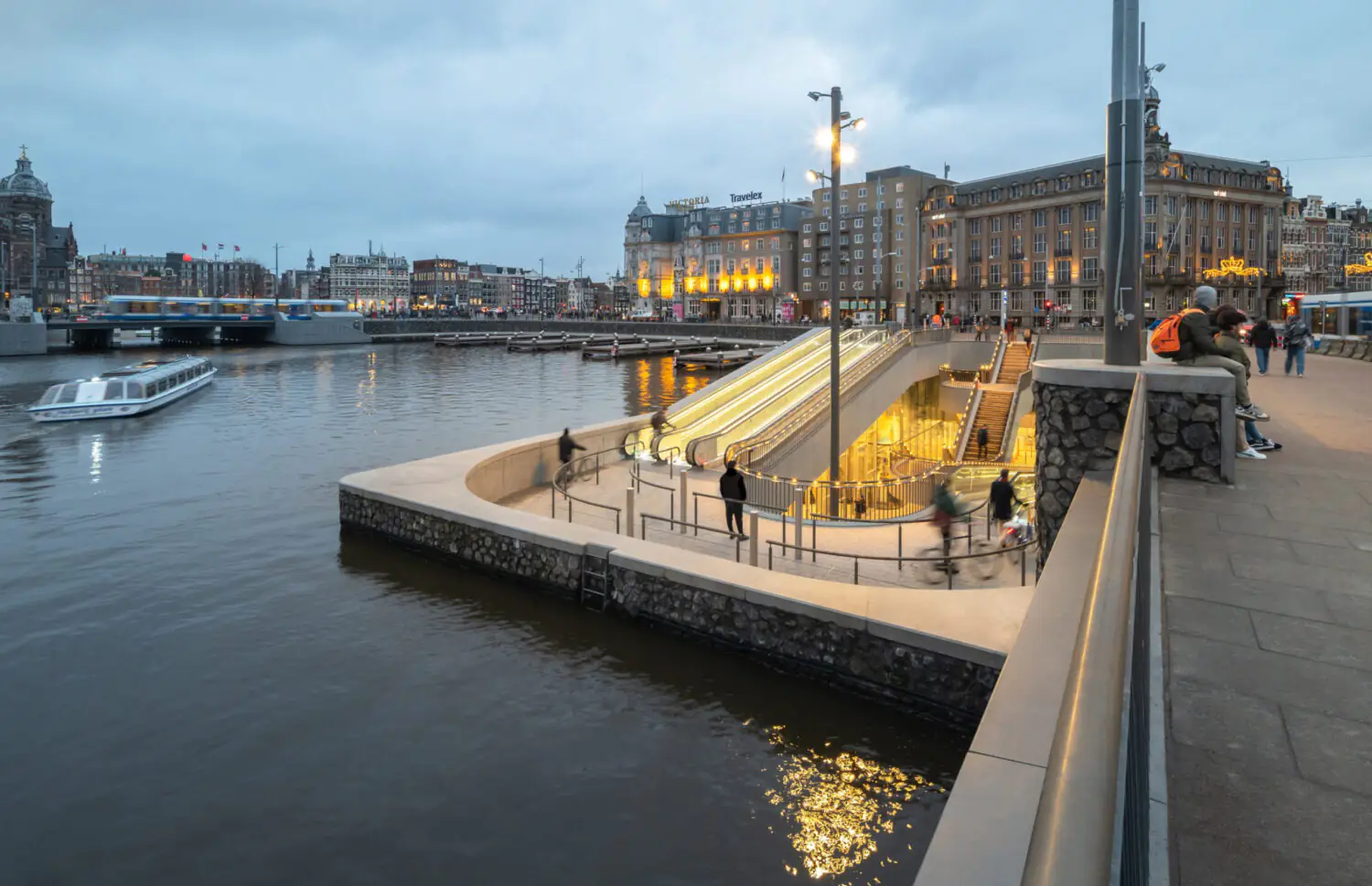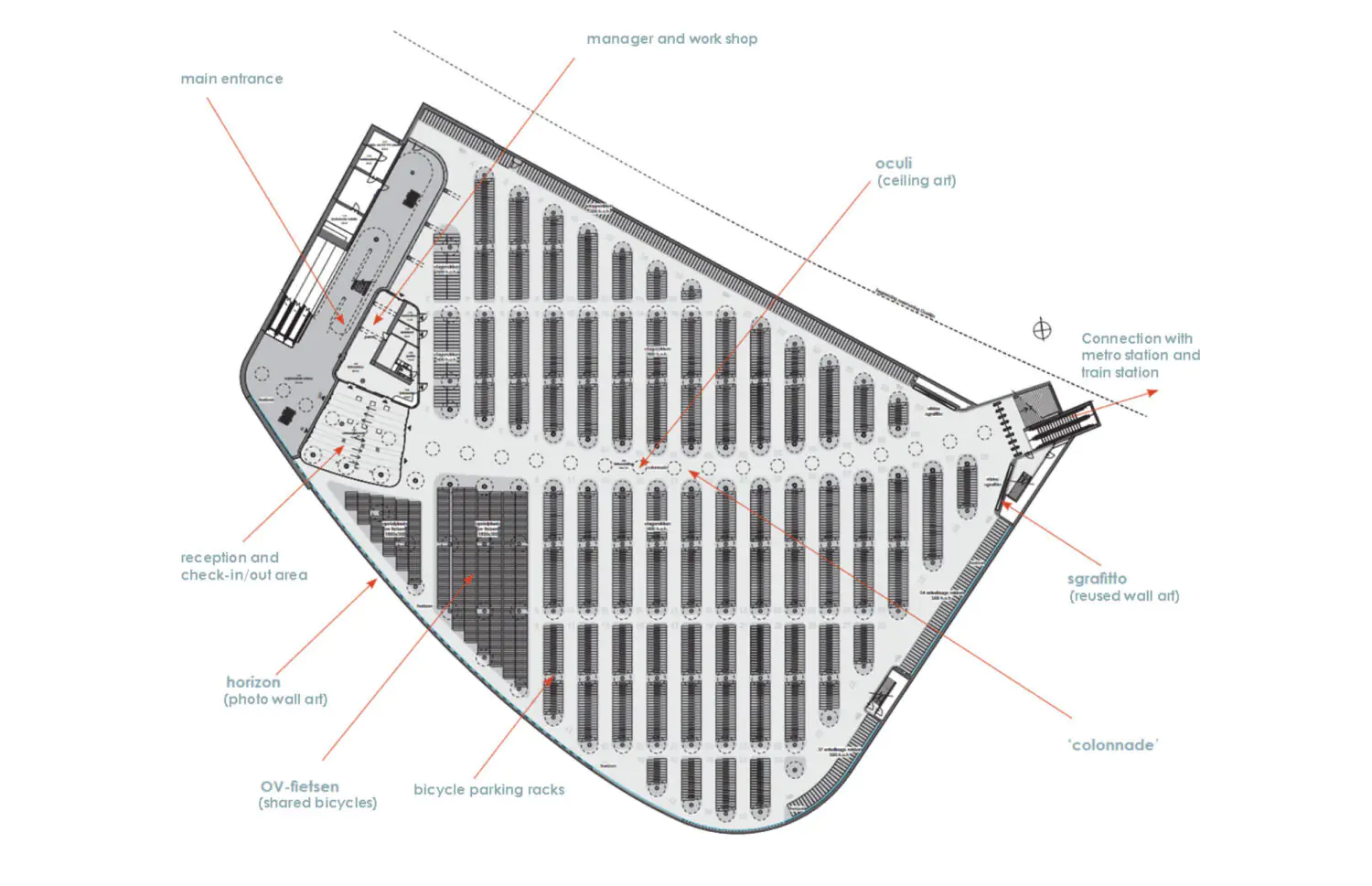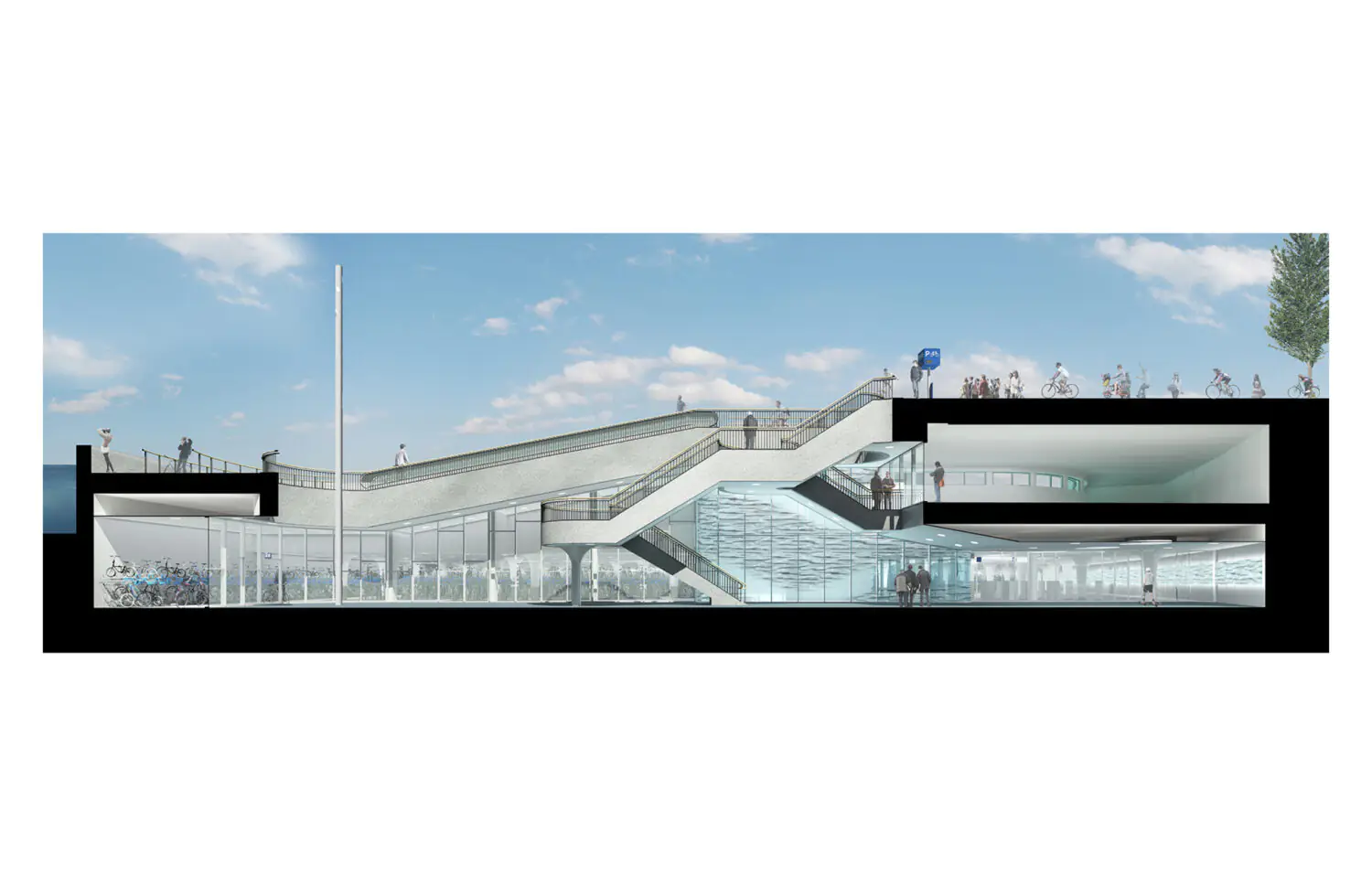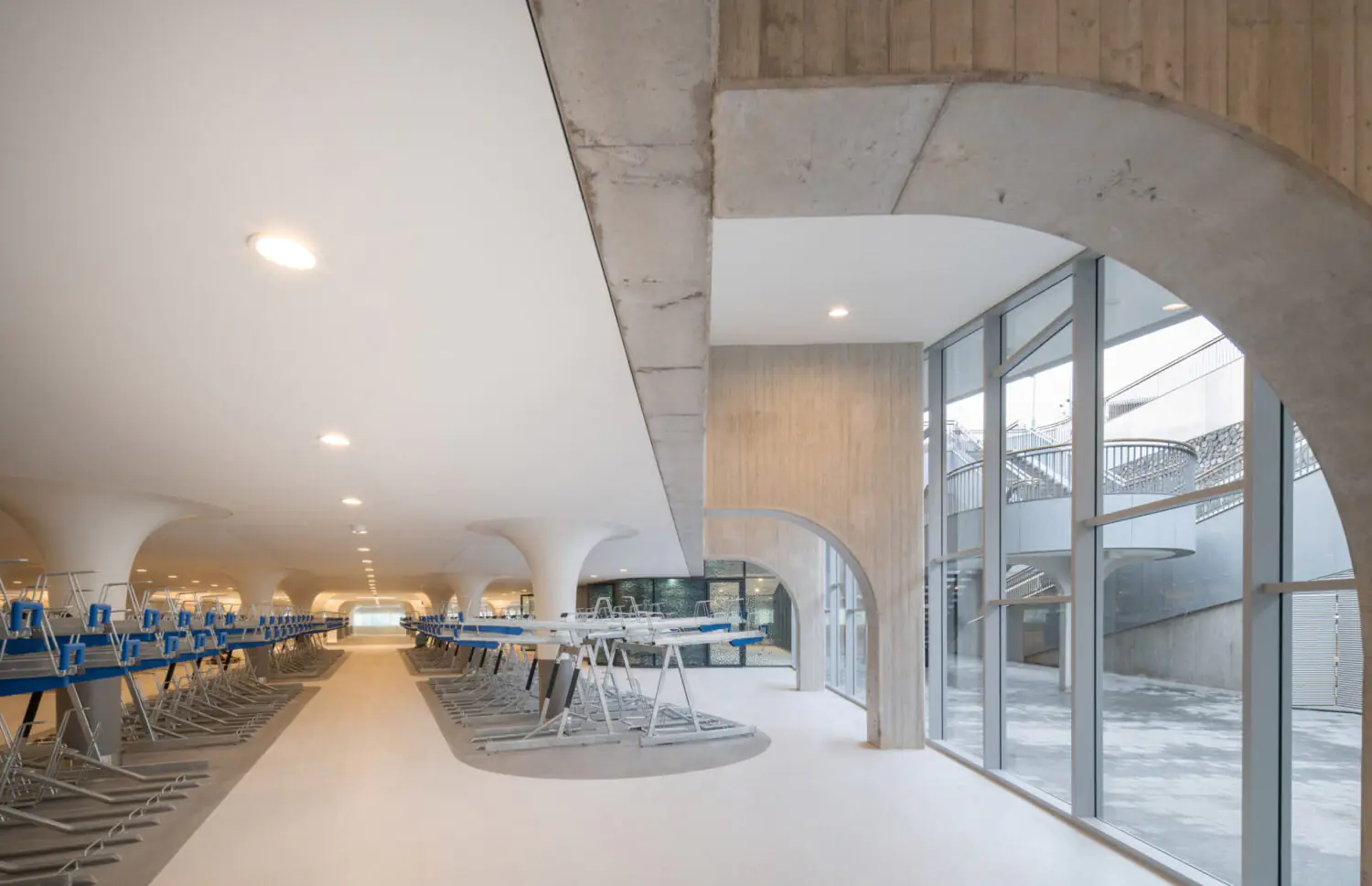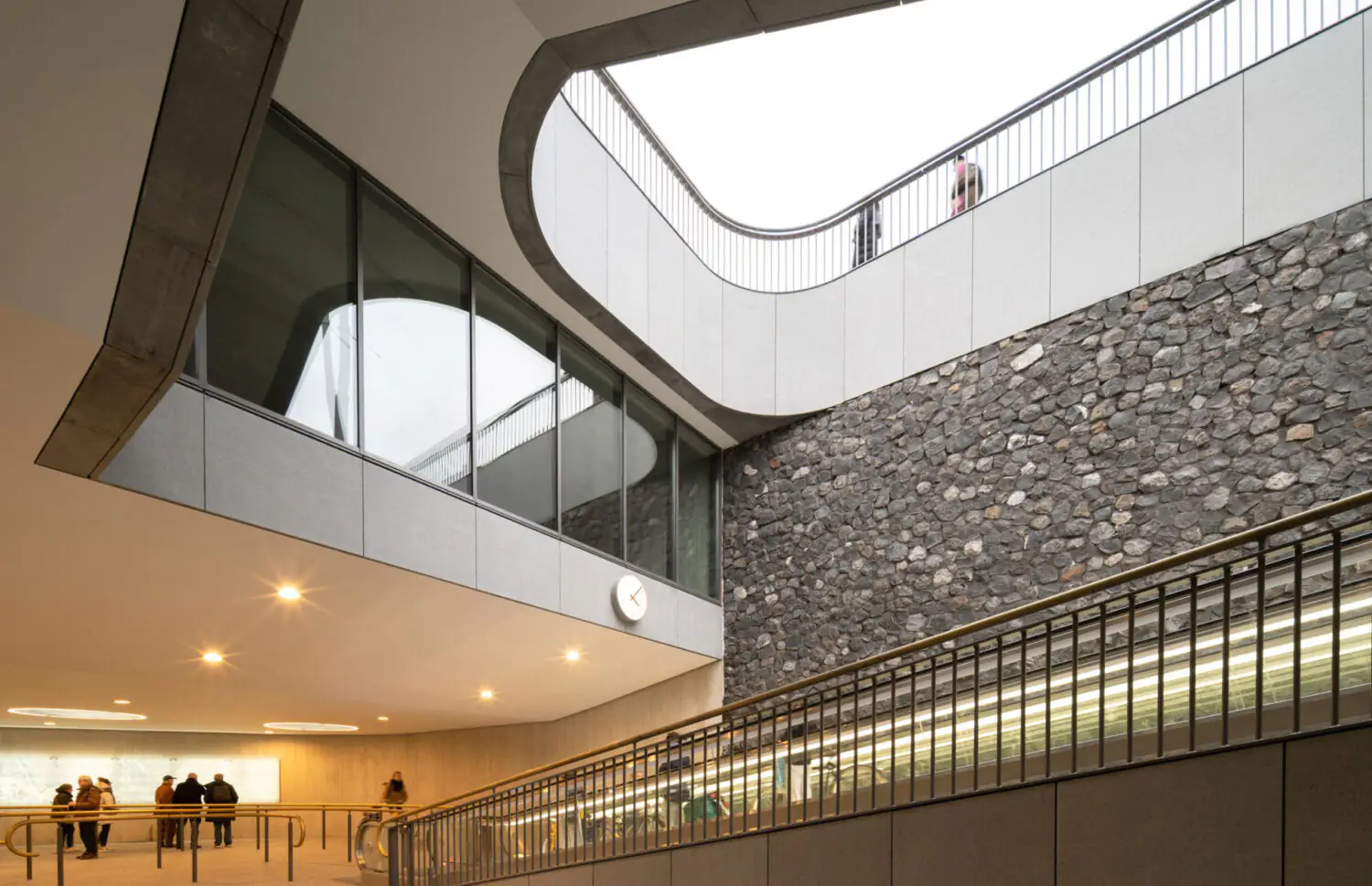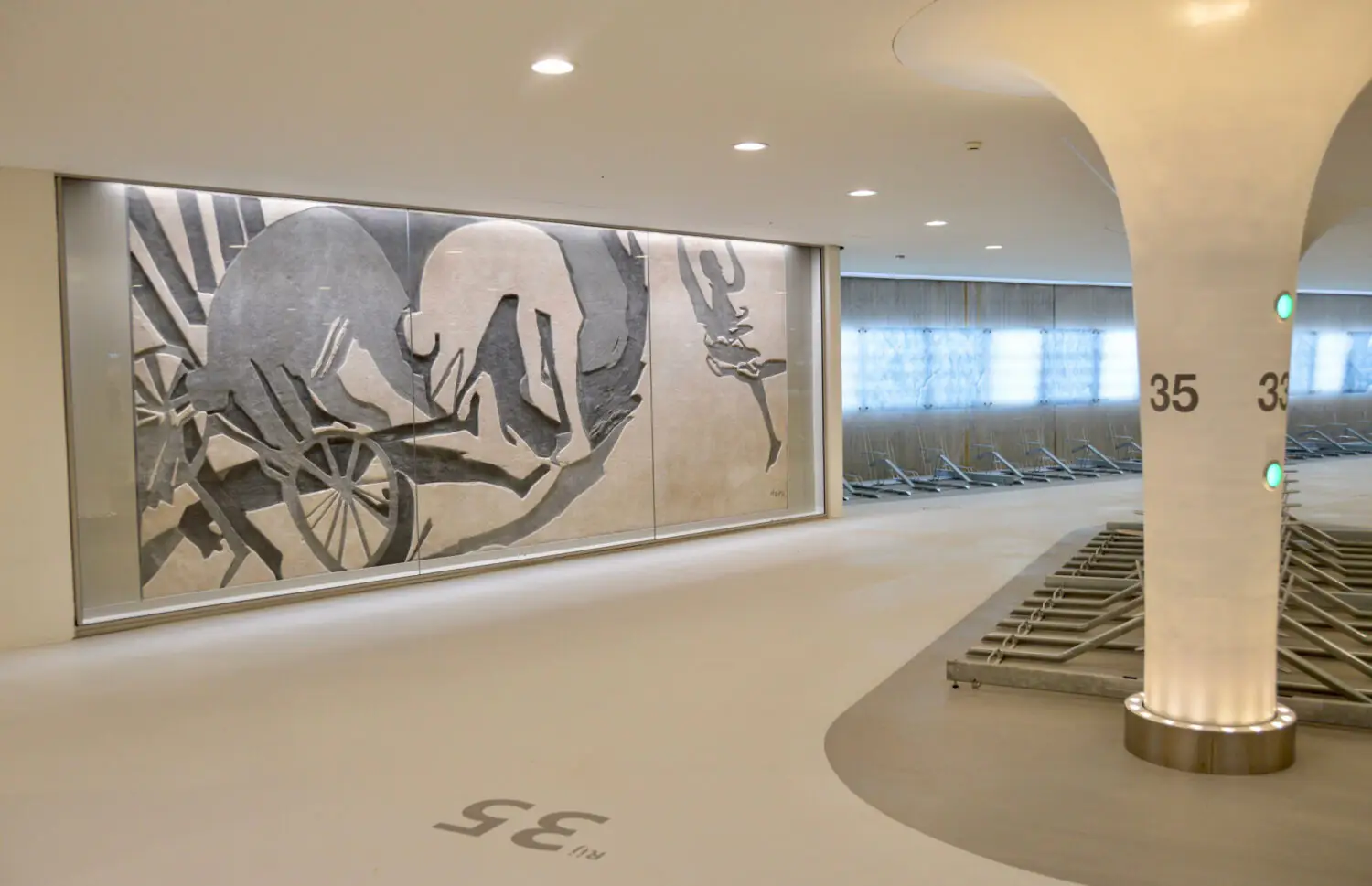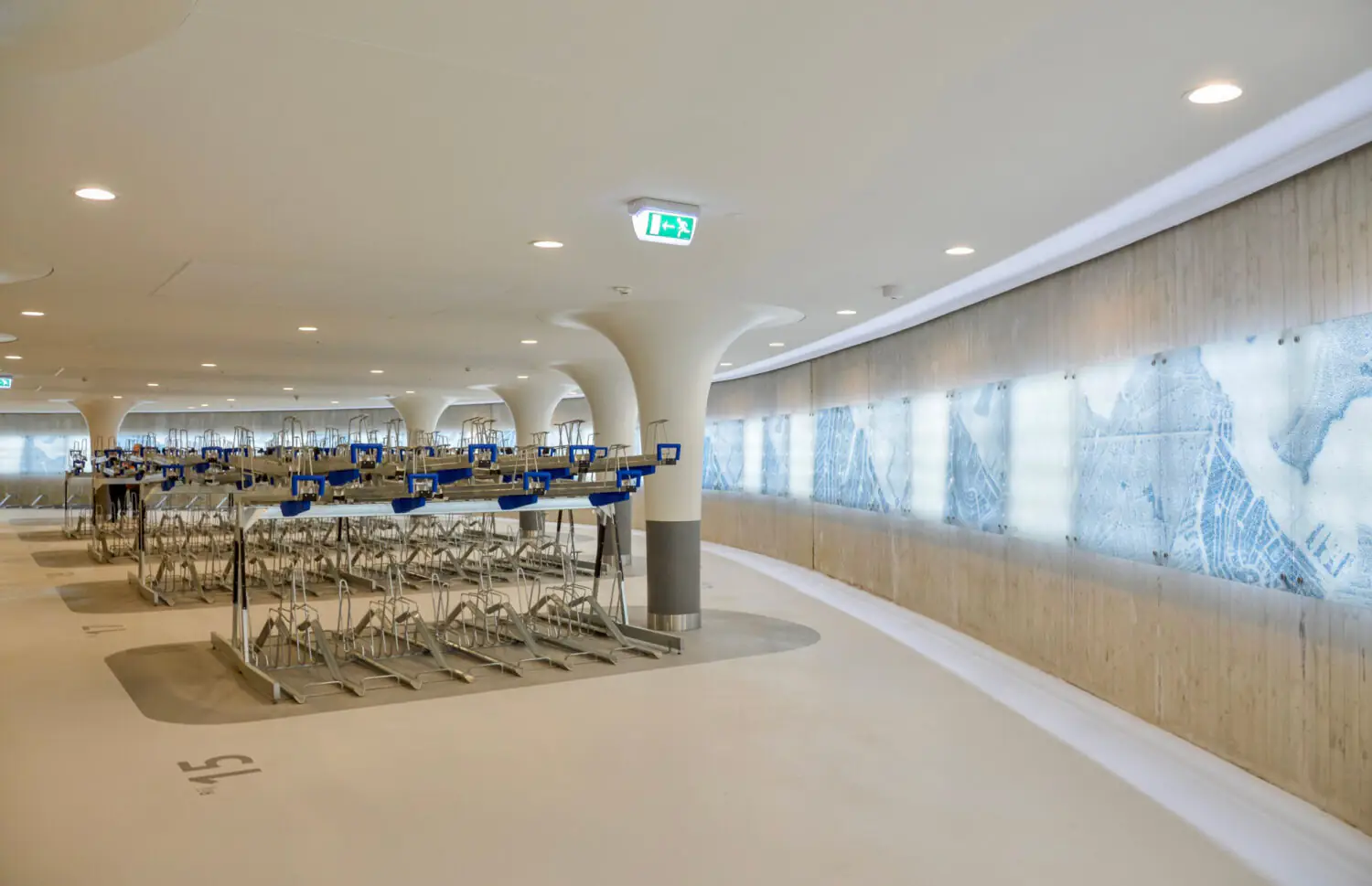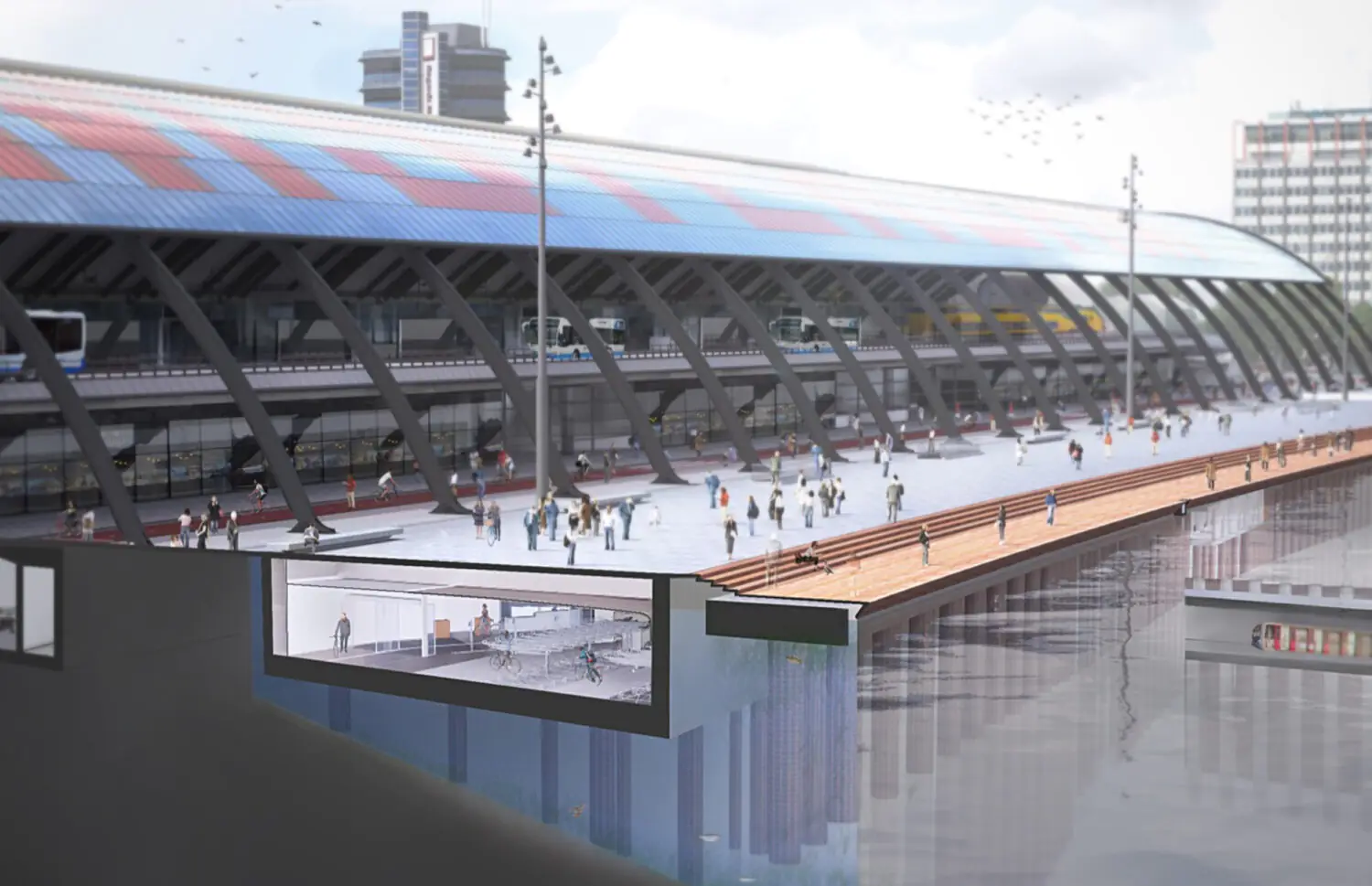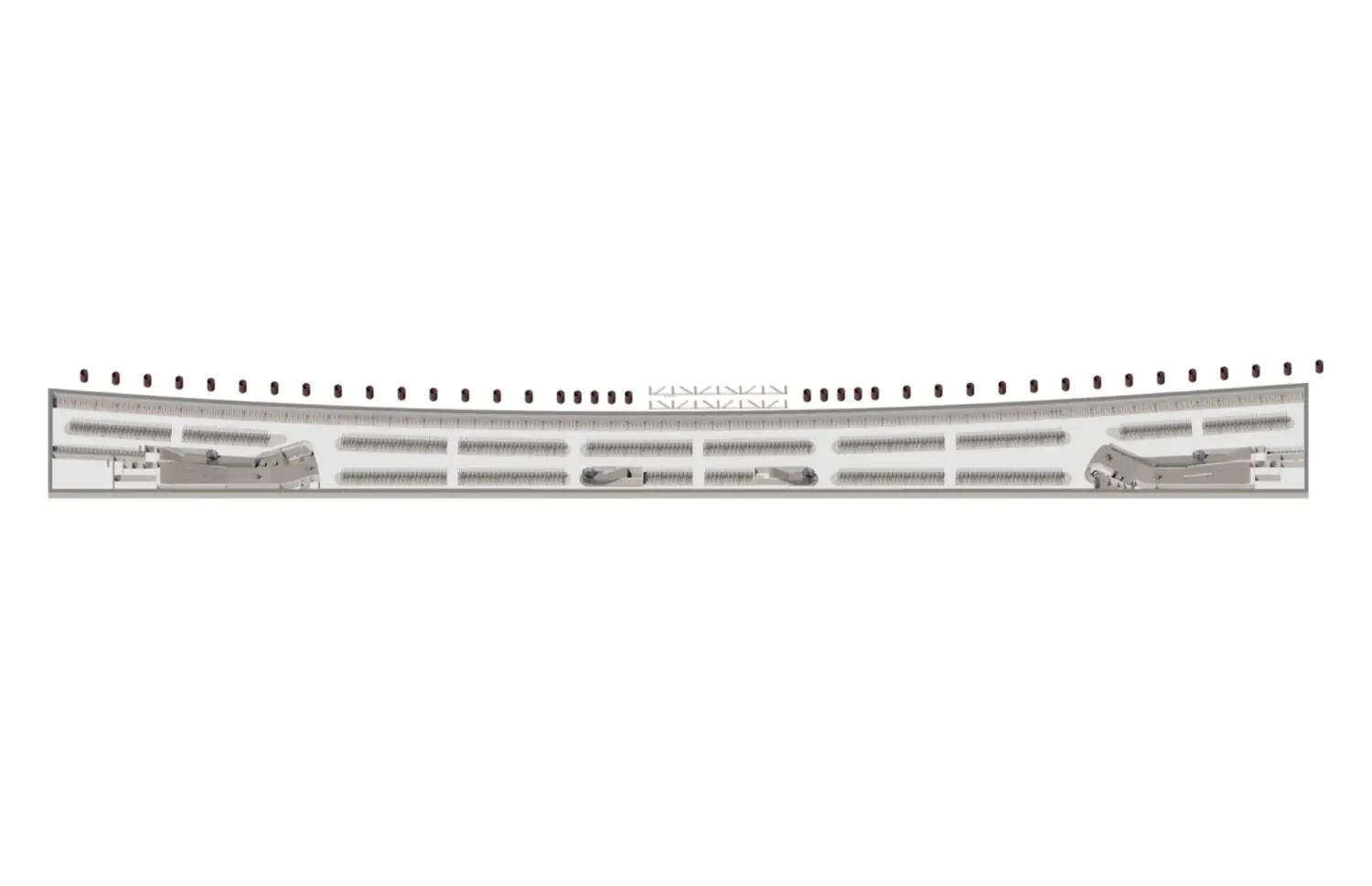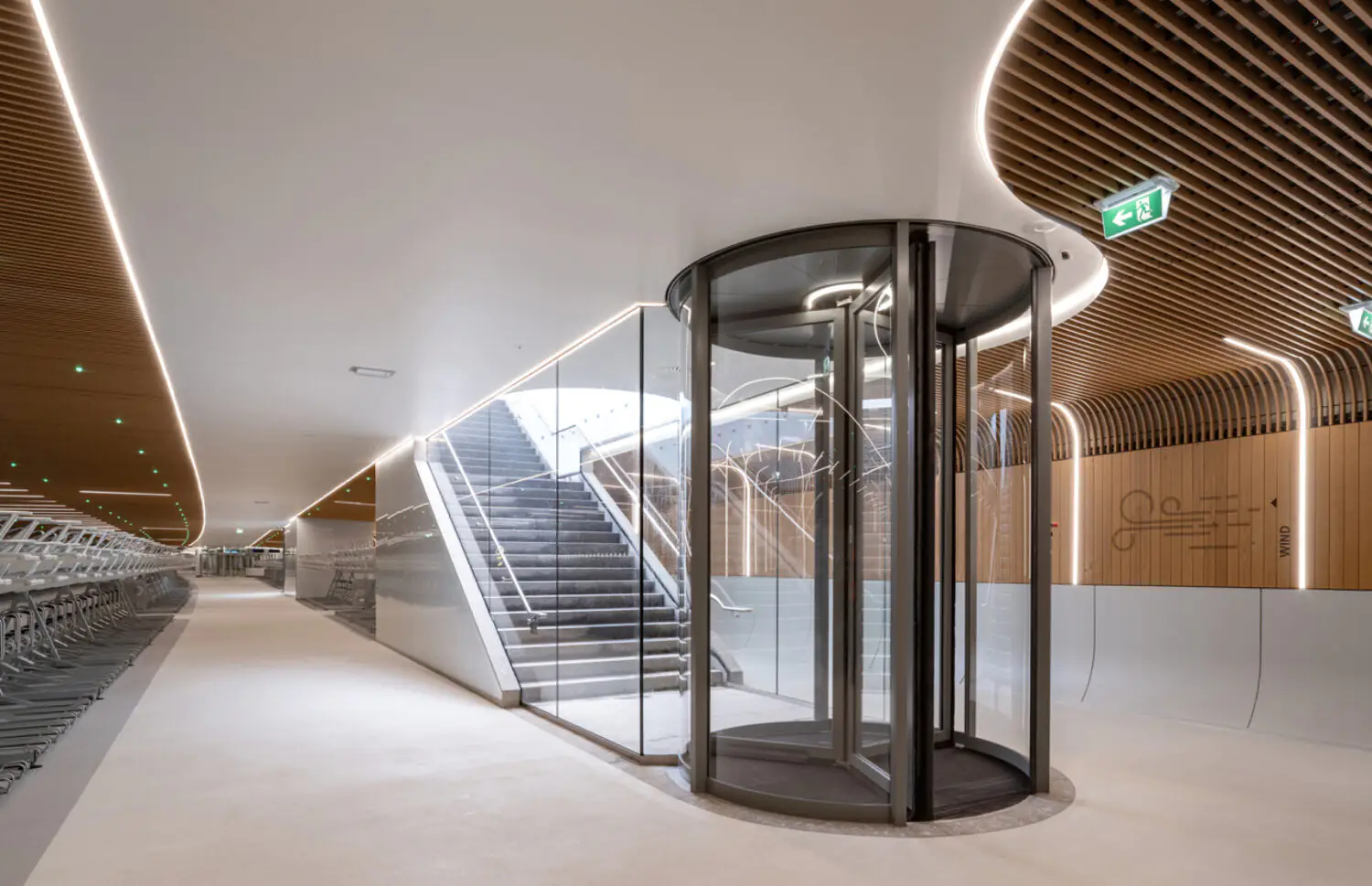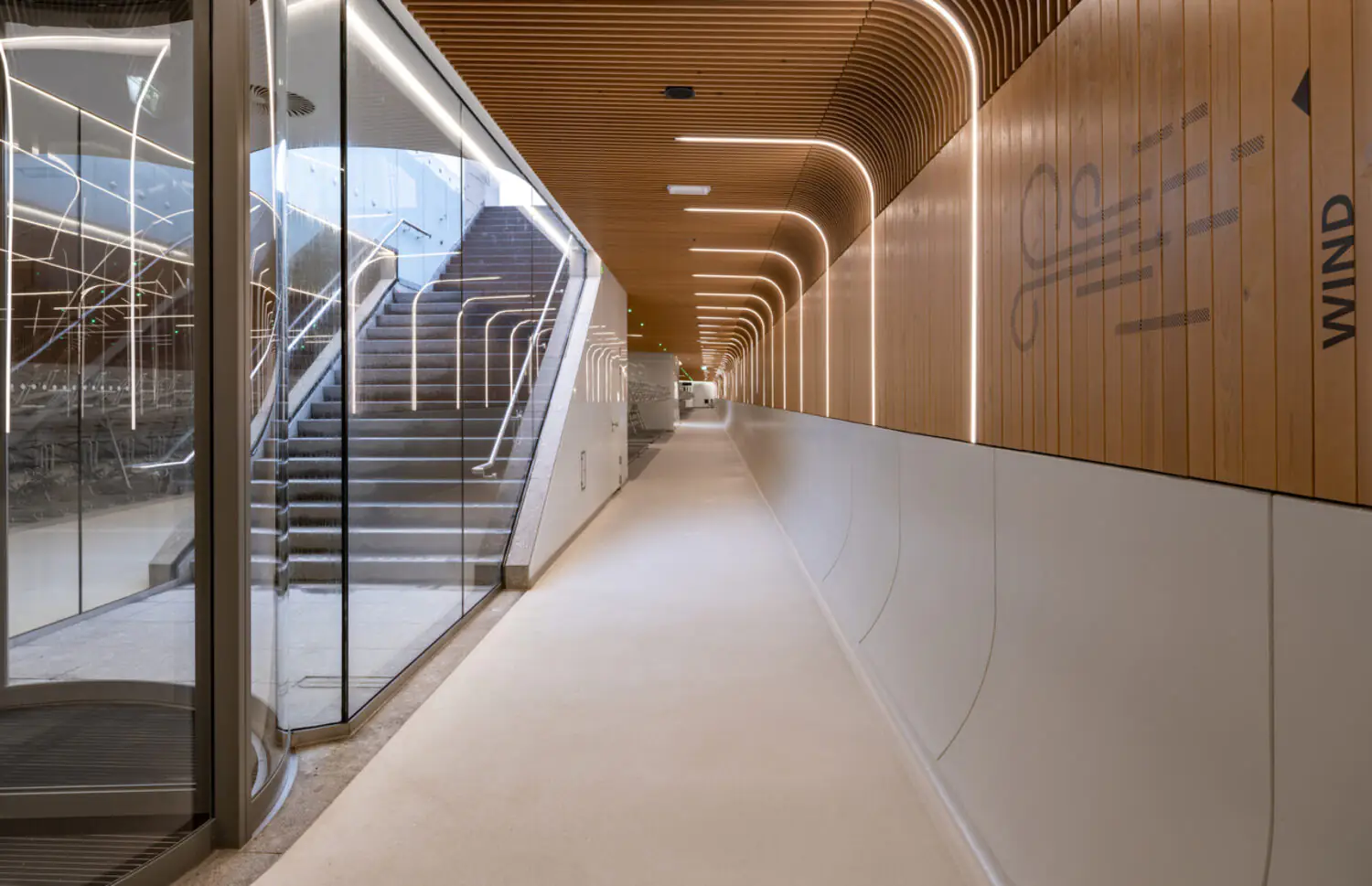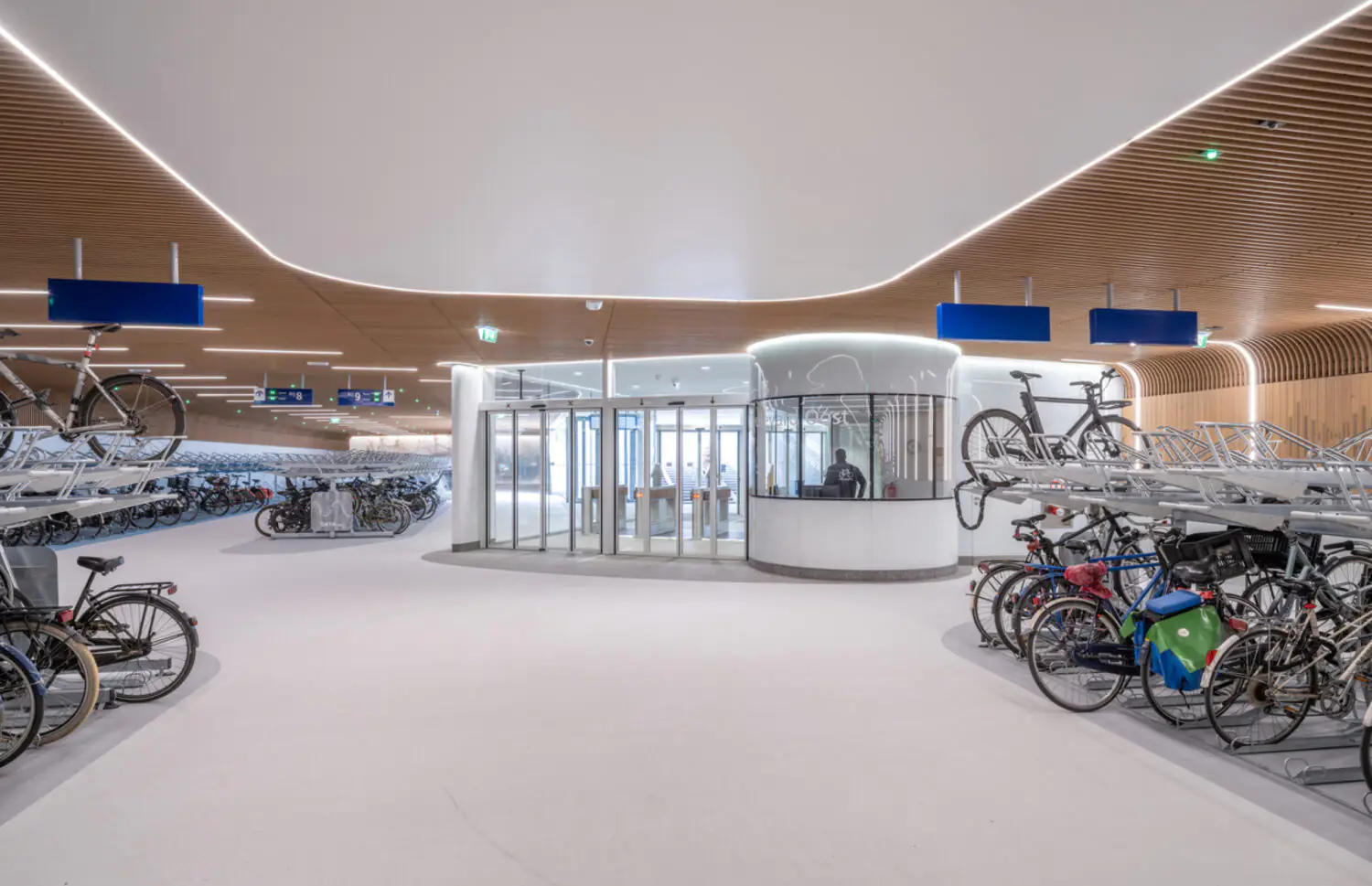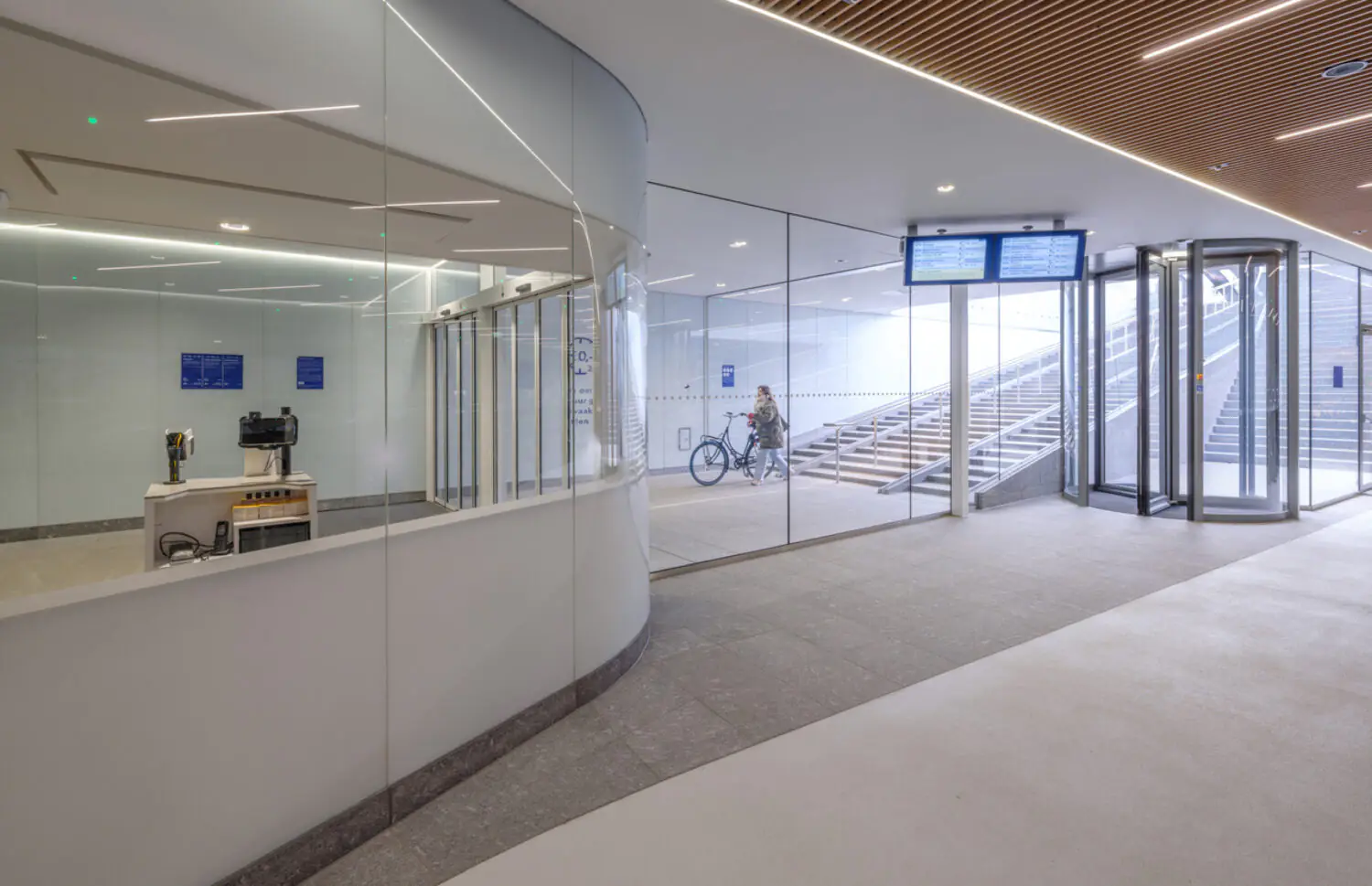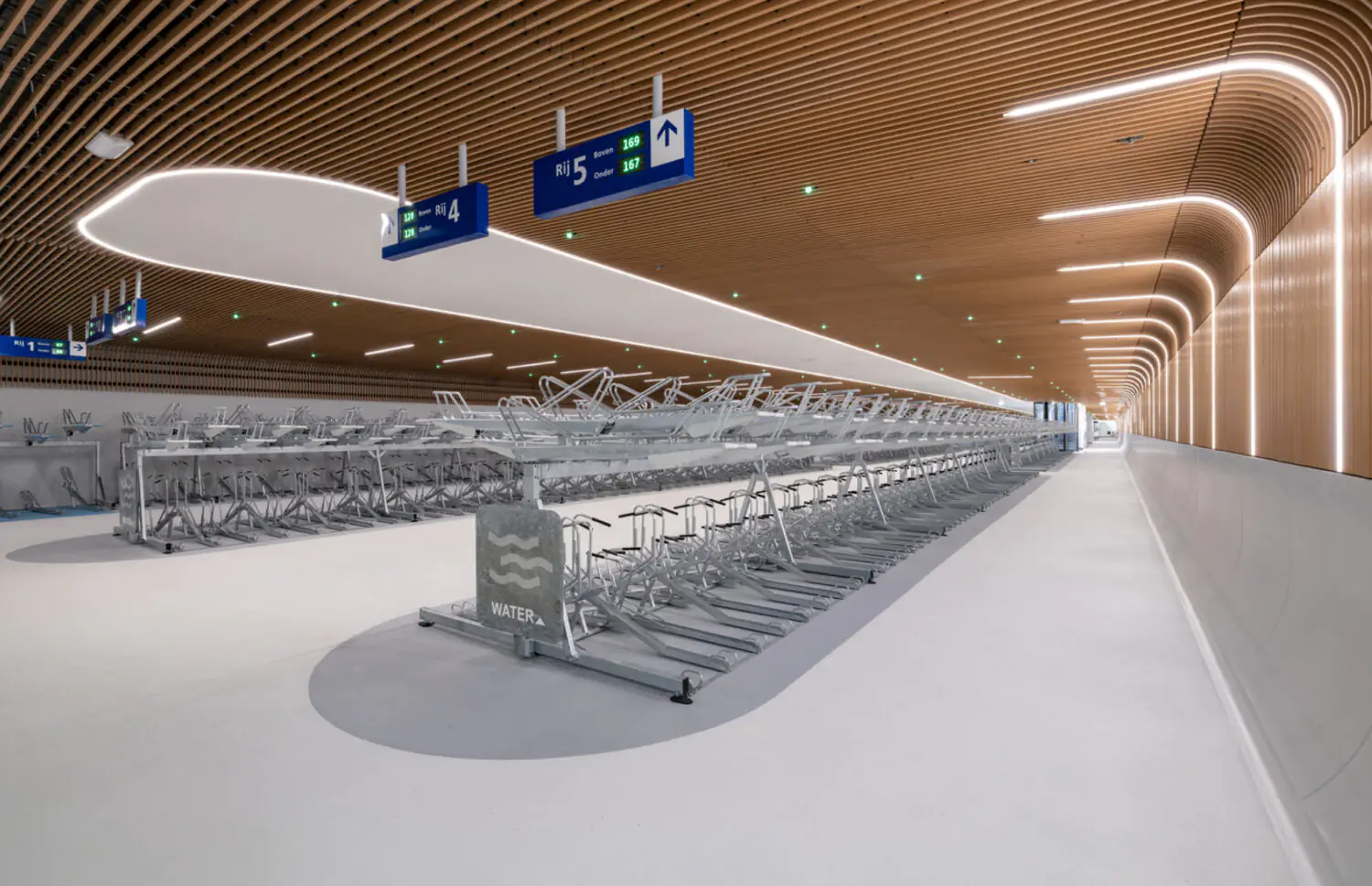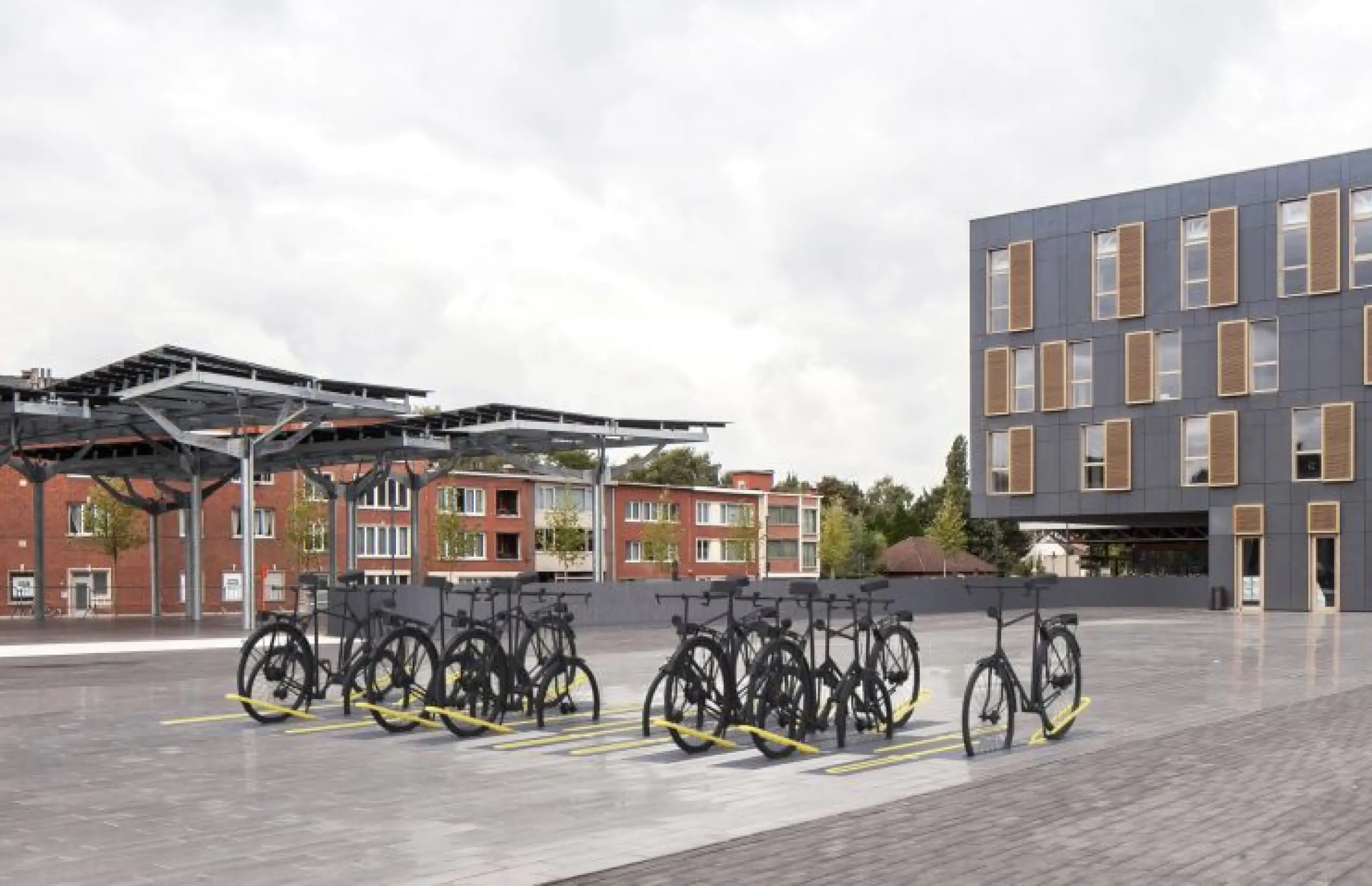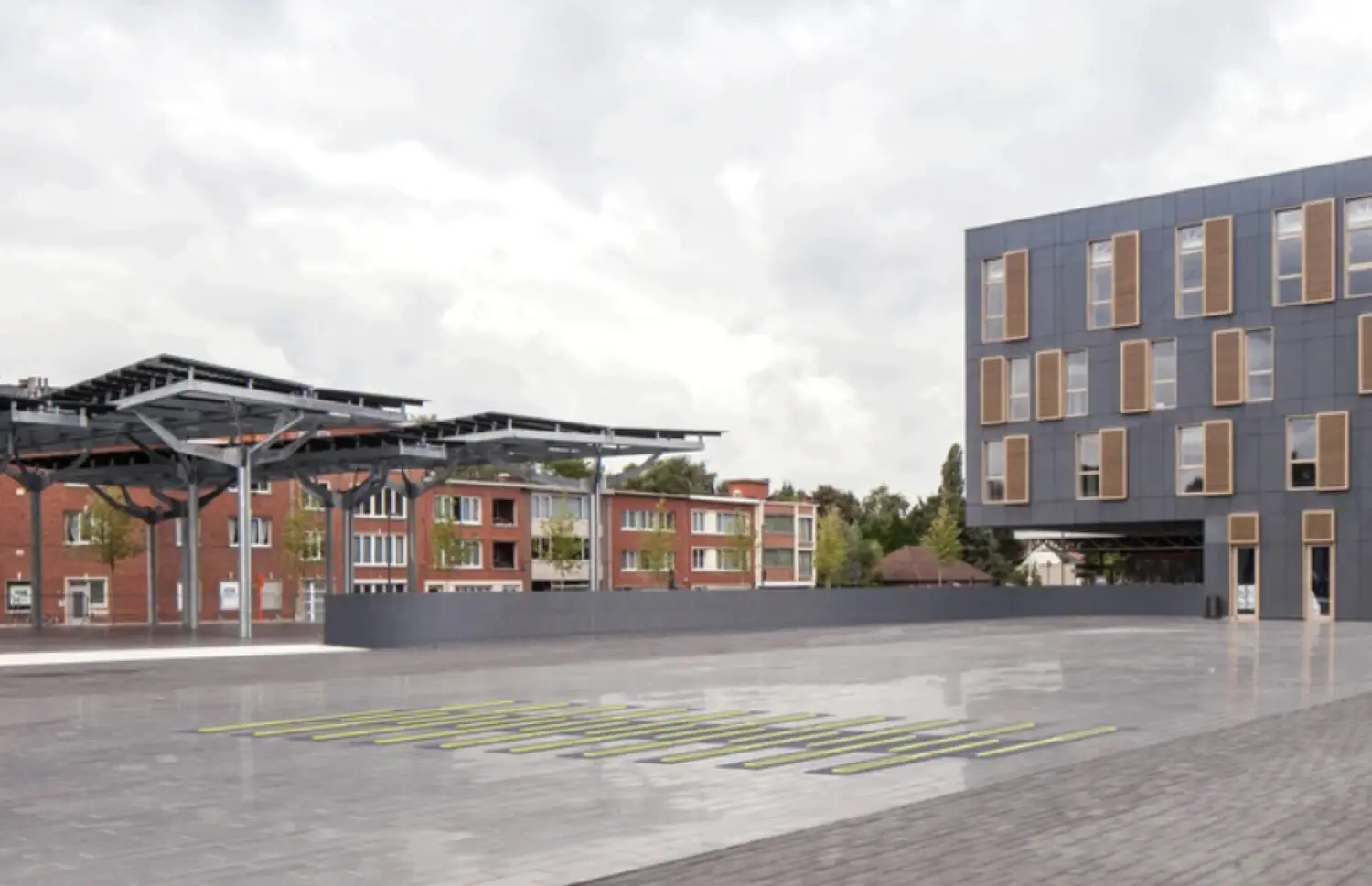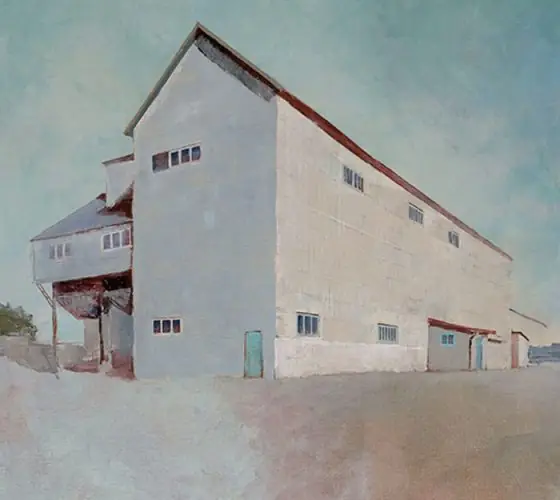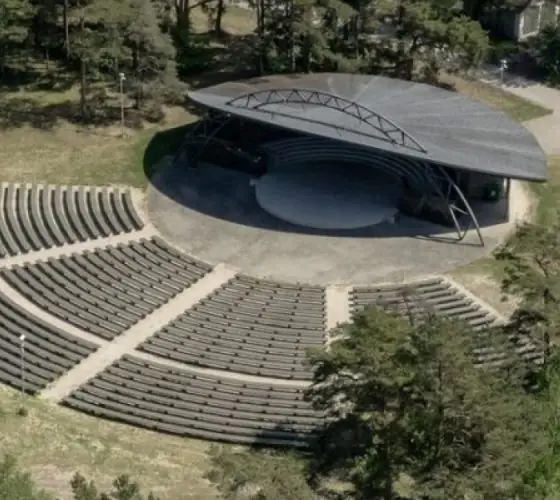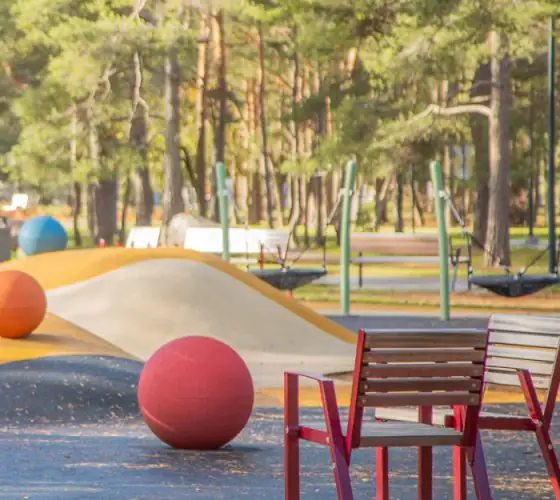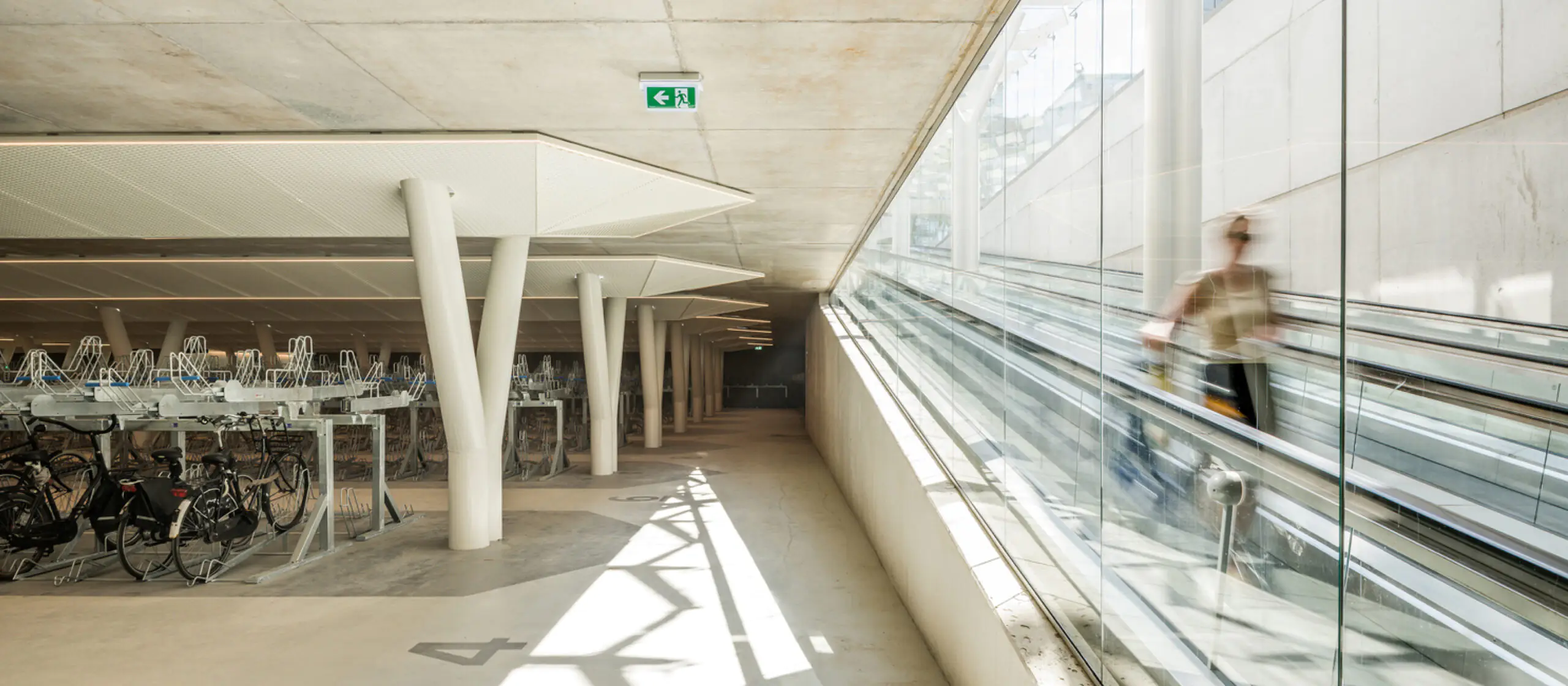
architectuur.nl
Recently we told you about how Riga is implementing a sustainable mobility strategy, an important part of which is intermodality, i.e. the use of at least two sustainable transport modes during trips. Read more about this term and Scandinavia’s experience in creating such intermodality points in our Glossary section—Soft Mobility and Intermodality.
This article is about the architectural experience in the Netherlands.
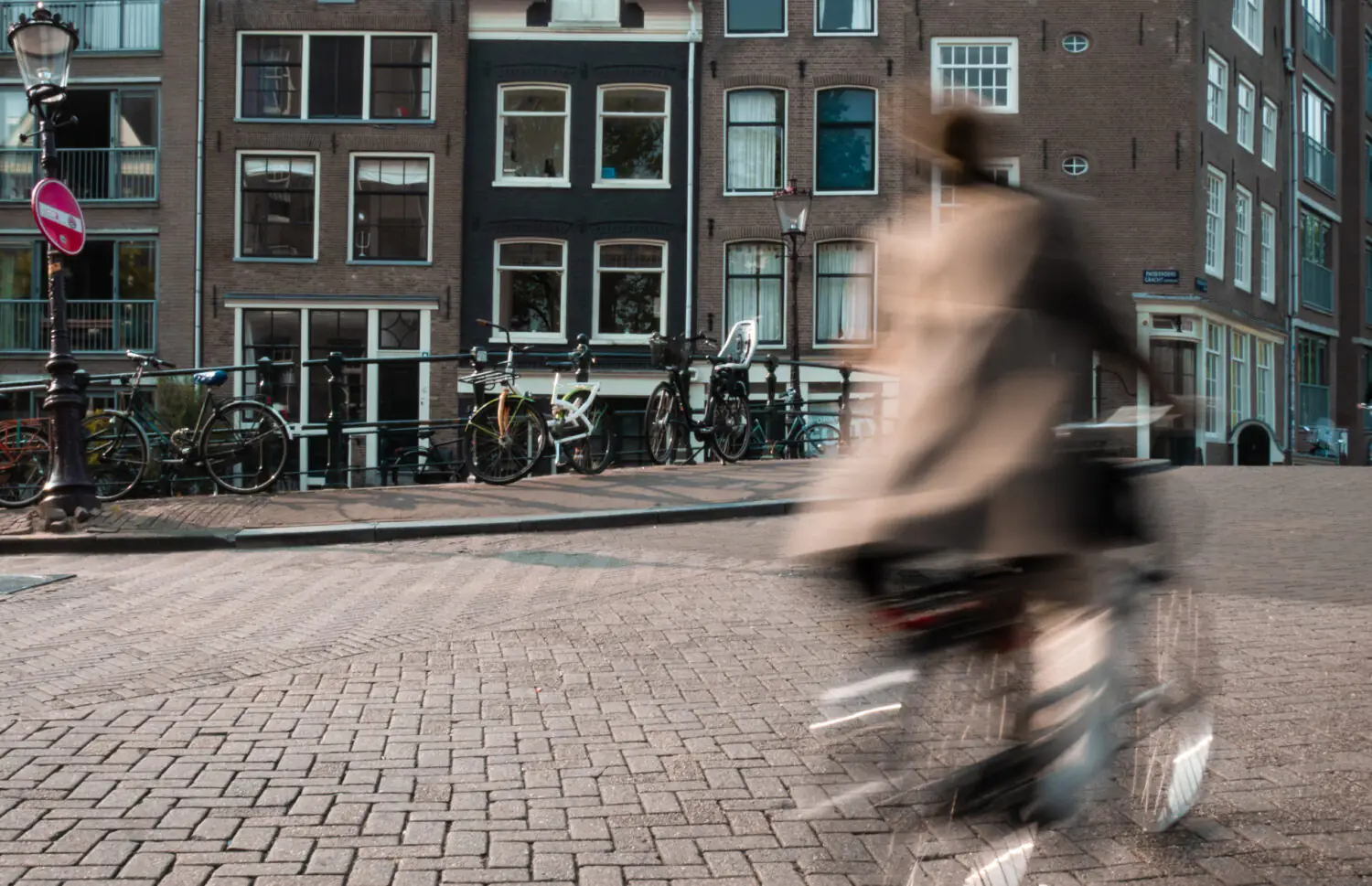
Although today the Netherlands is a leading country in the development of bicycle infrastructure and a generally sustainable transportation system, the road to this result has been long and demanding. In the 1960s and 70s, as in many other countries, dependence on private cars was steadily increasing in the Netherlands. The city streets, many of which had been built in the Middle Ages, were not designed for so many cars. Entire neighborhoods were demolished to build freeways. The streets no longer belonged to the people who lived on them, but to the huge flows of traffic.
But in addition to the general deterioration of the transport situation, large-scale motorization has had deadly consequences. In 1971, more than 3,000 people were killed by hit-and-run vehicles, nearly 500 of them children. This situation provoked protests by residents. Among the various movements involved in the protests, the most iconic was the group “Stop de Kindermoord” (“Stop infanticide”). Two years after the founding of “Stop de Kindermoord”, another group, “The First Only Real Dutch Cyclists’ Union” (short for “The Cyclists’ Union”), emerged to push for more urban space for cycling.
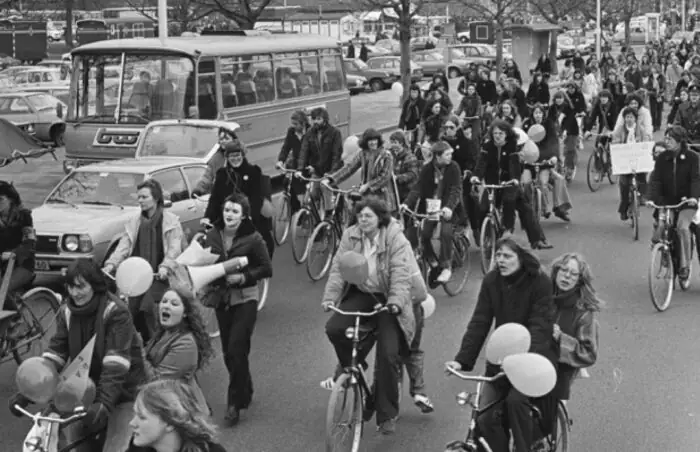
bicycledutch.wordpress.com
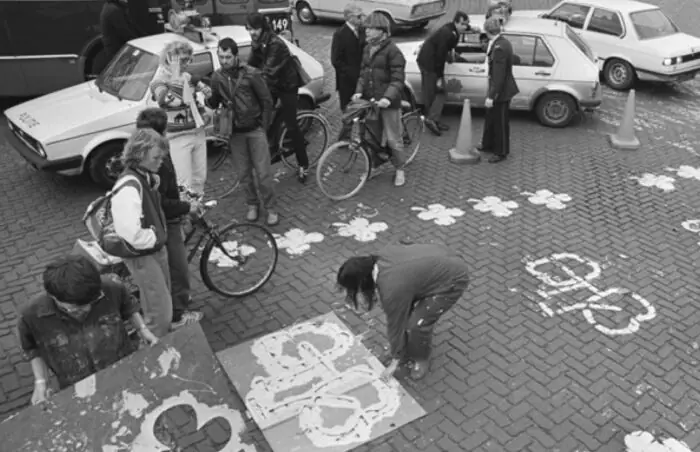
bicycledutch.wordpress.com
The violent public reaction also coincided with the 1973 oil crisis, when some members of the Organization of Petroleum Exporting Countries (OPEC) cut oil production and imposed an embargo on exports to certain countries, resulting in a fourfold increase in the price of petroleum products. The situation on the fuel market, coupled with residents’ active struggle for urban space through demonstrations, road closures, bicycle races, and the creation of illegal bike lanes, helped convince the Dutch government to change its transportation strategy. In the 1980s, cities in the Netherlands—large and small— began to implement measures aimed at creating streets that would be bicycle-friendly.
Perhaps the most important action the national government has taken in this regard has been the creation of a network of bike lanes with a huge length.
Today, there are more than 35,000 kilometers of bicycle paths in the Netherlands. In comparison, the country’s road network is only 140,000 kilometers long. The country also has a number of roads that are used by cars and bicycles, where bicycles have priority. On many of these streets you can see signs reading Fietsstraat auto te gast: “cars are guests”.
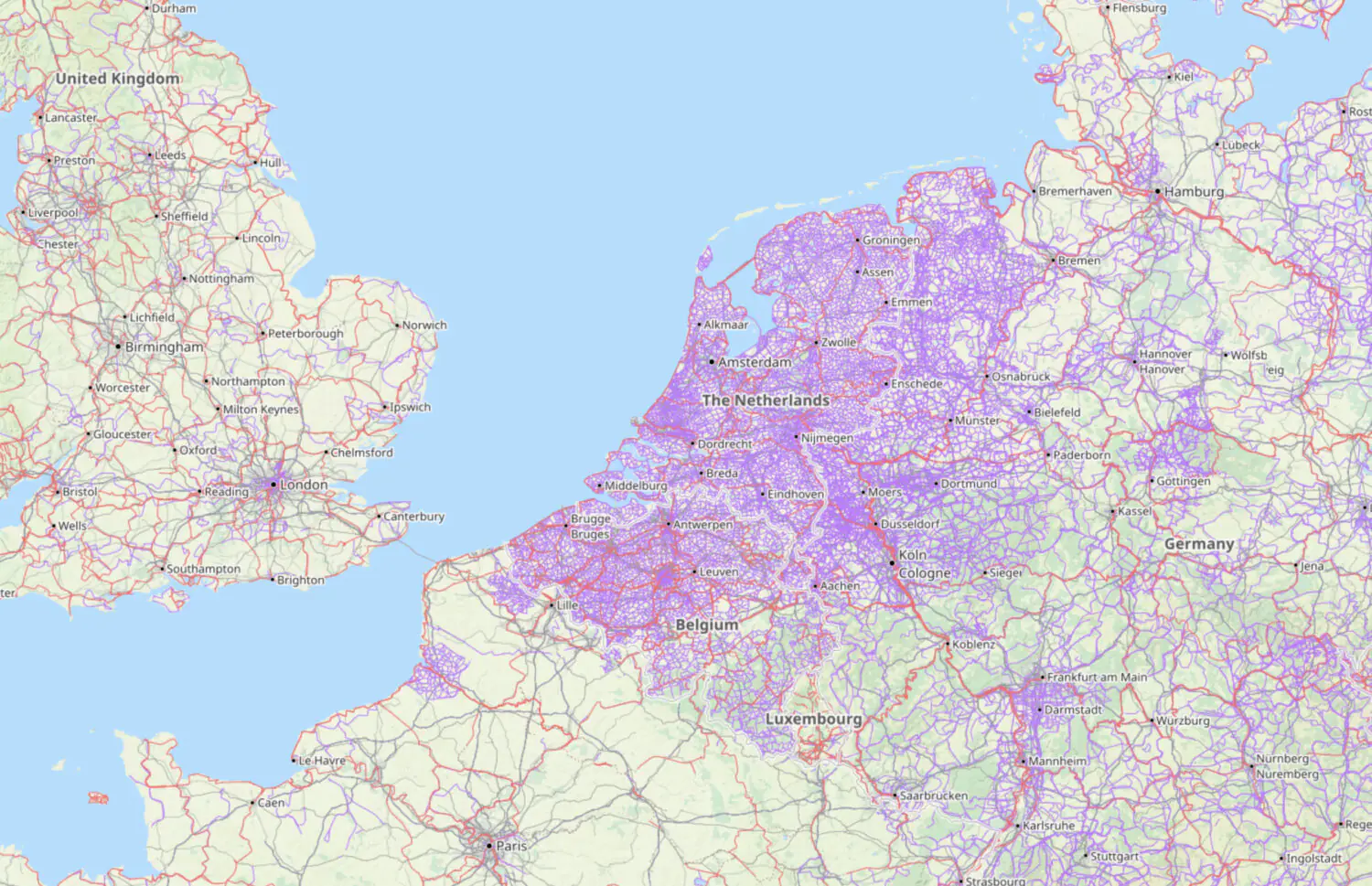
opencyclemap.org
In addition to providing a road system that enables cyclists to get from A to B safely, huge investments are being made in bicycle parking. The focus of the city government is on intermodality points that allow for convenient transfers from bicycles to other forms of public transport. Most train stations now have bicycle parking facilities.
Moreover, in recent years, bicycle parking facilities have ceased to be purely infrastructural. Placed under buildings, squares and even under water, some of them are becoming iconic architectural objects and shaping the identity of Dutch cities.
Stadsbalkon Groningen
Architects: KCAP
Year of project completion: 2007
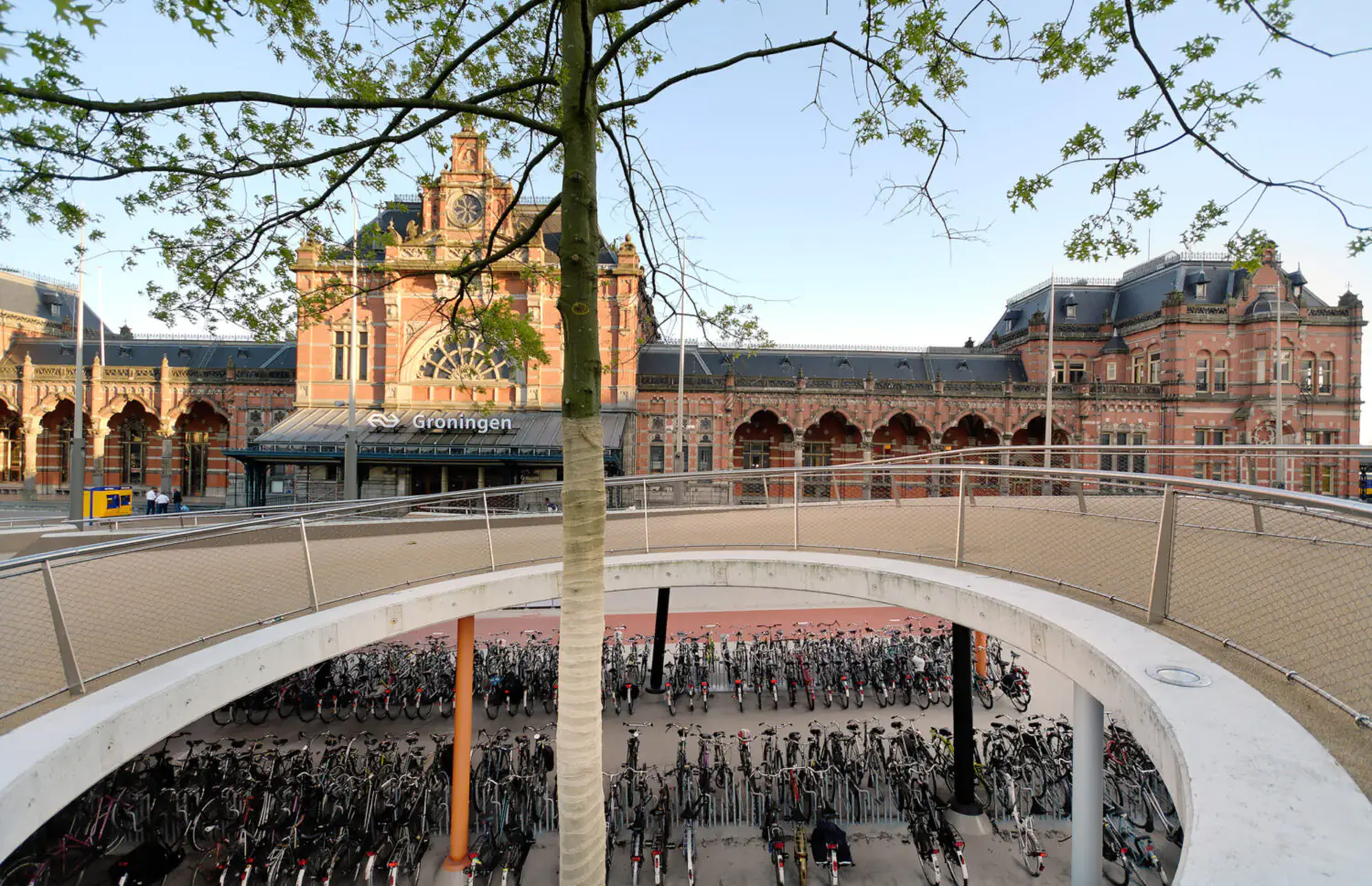
archello.com
In recent years, the trend of aesthetic and functional rethinking of bicycle parking as such has been particularly noticeable in the Netherlands. 2018–2023 can be considered the heyday of this trend: more and more facilities with expressive architecture and unique design are appearing.
However, one of the first examples of this approach can be seen in a bicycle parking lot Stadsbalkon in Groningen, the so-called City Balcony (as the name of the project literally translates), built back in 2007.
Stadsbalkon is a pedestrian square in front of the restored historic building of the Groningen train station, free of car traffic. Passengers can change from bicycle to train or bus here—the bus station is located here.
The curved surface of the plaza forms a canopy under which parking for 4,150 bicycles is located. Circular openings in the canopy surface allow sunlight into the parking lot and form a visual connection between the two levels. The main bike path runs right through the canopy, so the parking lot is easily accessible. The bicycle parking is free of charge and is constantly monitored—and therefore helps to avoid thefts of bicycles, which are common in the Netherlands.
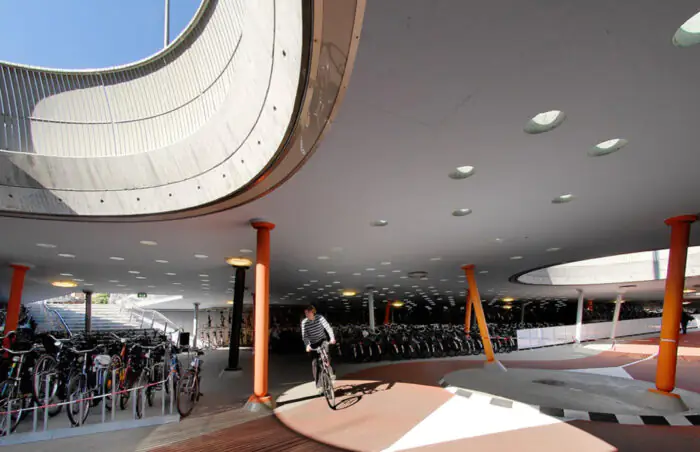
laud8.wordpress.com
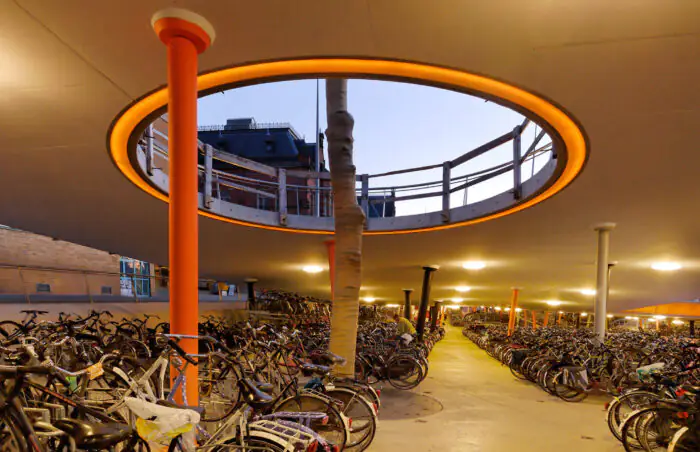
archello.com
The project itself is an experiment in applied generative design called Groningen Twister. It was a collaborative project between the design team Kees Christiaanse Architects & Planners (KCAP), the engineering team Ove Arup & Partners and the CAAD Department of Computer-Aided Architectural Design at ETH Zurich. The project started in 2003 with the goal of developing a CAD tool that would help KCAP architects solve a complex design problem: to place a bicycle parking lot under a curved canopy square.
The design called for the slab to be supported on a field of thin concrete columns. To hold the concrete slab, the potential design called for the placement of over one hundred columns of varying sizes. The complex contour of the slab and the already marked paths and bike parking lots made it difficult to place the columns in a regular grid pattern. As a result, it was decided to arrange the columns chaotically, creating the impression of a “column forest”. To reinforce this impression, the columns were to be made with different diameters and inclinations.
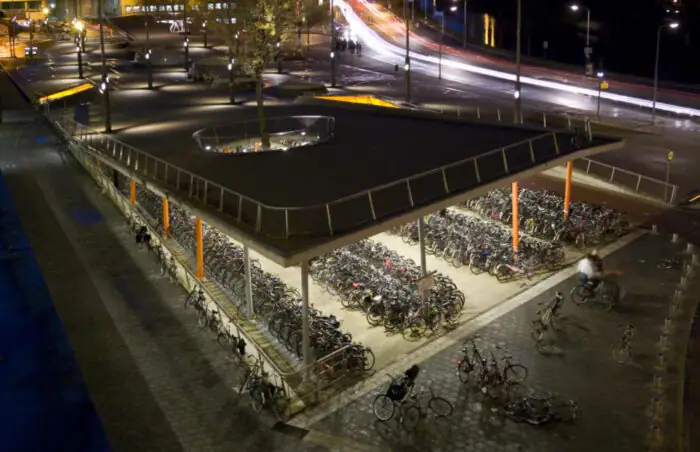
laud8.wordpress.com
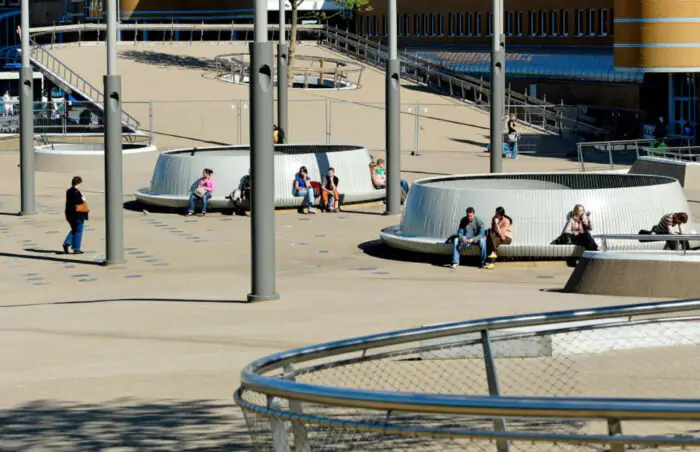
laud8.wordpress.com
The software created to solve these problems actually modeled the process of column placement. The distribution of columns was determined by a number of different parameters: functional, engineering and aesthetic. The results were presented to the designer in the form of a three-dimensional dynamic model.
At any point in the process, the designer could make changes interactively: directly change the location of individual supports or adjust the parameters that determine the properties of the columns and the environment. The system allowed testing different solutions in real time. After obtaining the desired results, drawings were prepared on the basis of the 3D file: construction documentation in different digital formats.
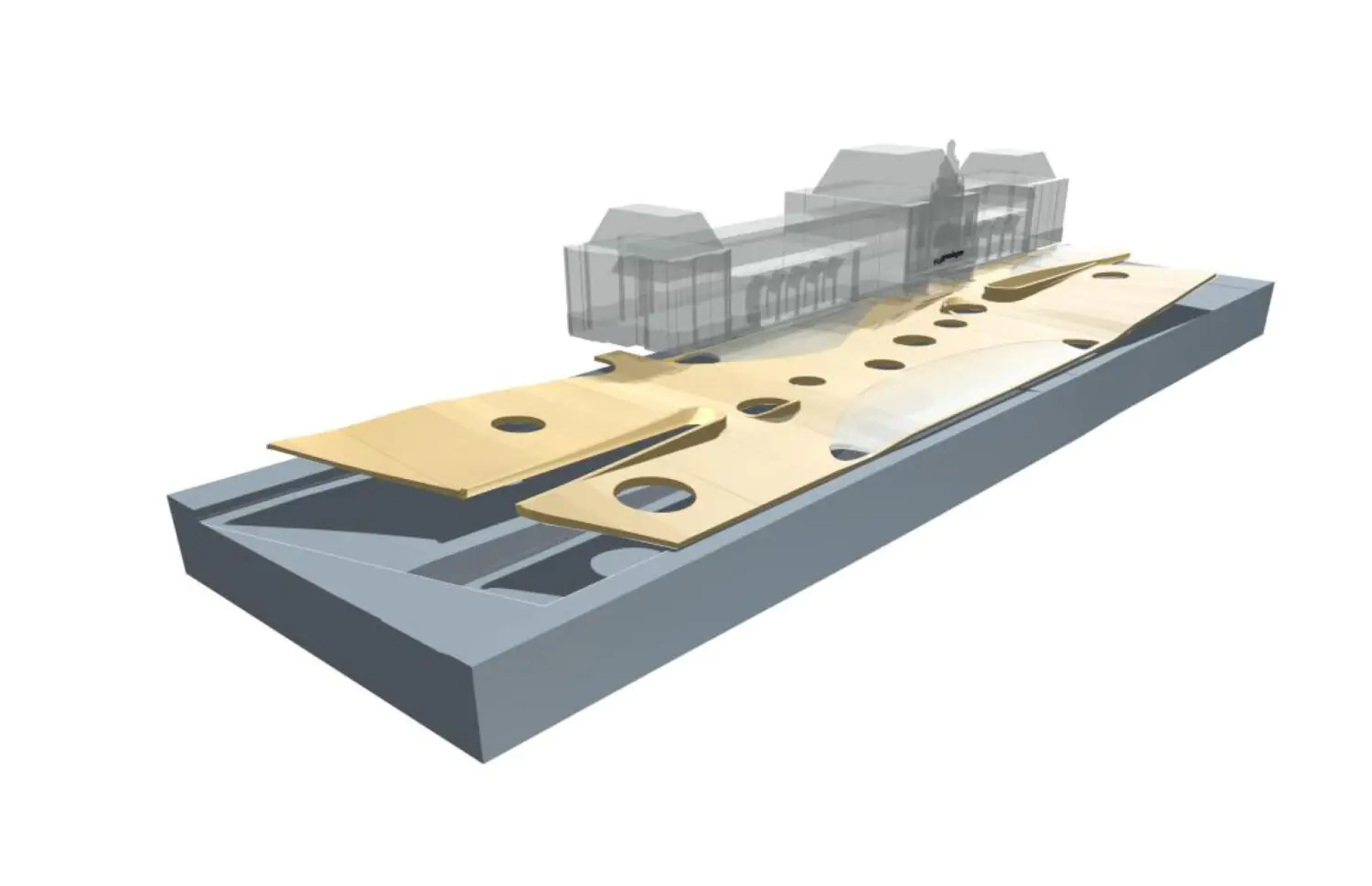
laud8.wordpress.com
In 2023, the city council decided to partially dismantle the City Balcony. The square never became a lively public space as expected, and they want to organize a green area in its place. It is assumed that the bike shelter will be preserved—first of all, it is a question of transforming the appearance of the upper part. What it will look like is yet to be decided.
But the Stadsbalkon project can hardly be considered a failed experiment. The city balcony was actually one of the first bicycle parking lots with a unique architecture – it may have initiated a new approach to the design of such transportation infrastructure in the Netherlands, and in Europe as a whole. In addition, the project itself and the developments associated with it allowed architects to advance the field of generative design and gain new design tools.
Strawinskylaan Bicycle Parking
Architects: wUrck
Year of project completion: 2018
Strawinskylaan is an underground bicycle parking lot opened in Amsterdam in 2018. It provides 3,750 parking spaces in addition to the already existing Zuidplein (2,700 spaces) and Mahlerplein (3,000 spaces) bicycle parking lots in the area. Providing convenient and accessible bicycle parking is an important part of the municipal strategy for the sustainable development of Amsterdam’s transportation system. The comfort of use and the expressive design of the parking lots have set a new high standard for facilities of this kind.
Strawinskylaan became the largest underground bicycle parking facility in the Dutch capital in 2018.
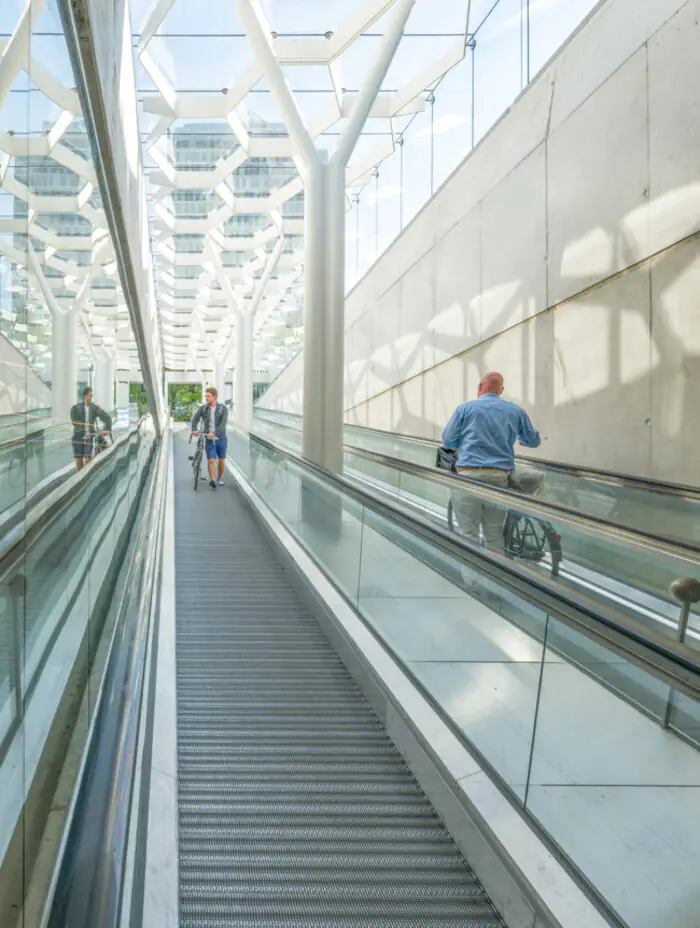
archdaily.com
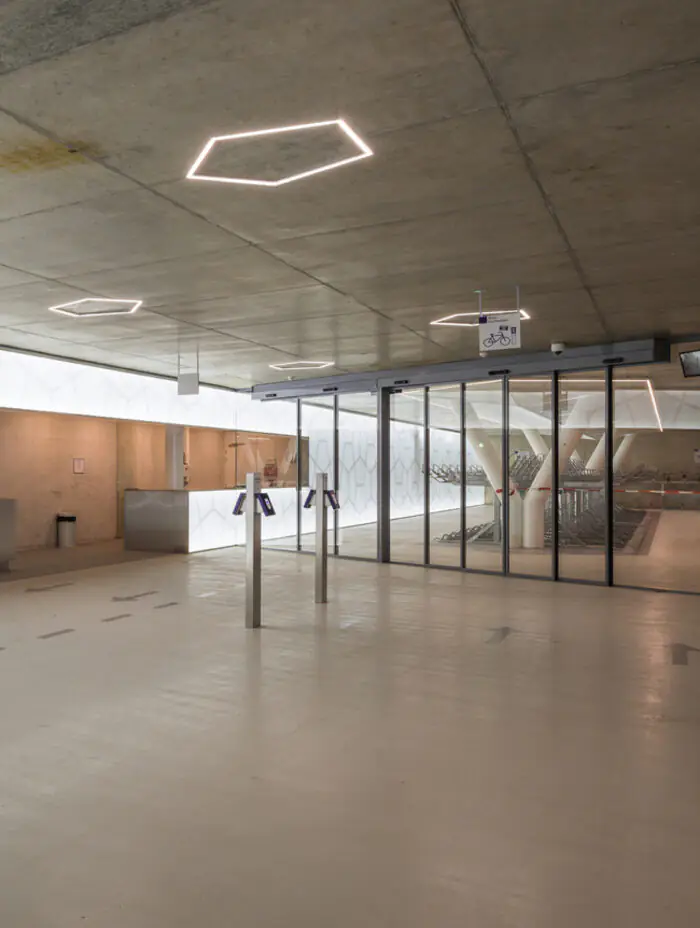
archdaily.com
The Strawinskylaan Bike Park is located under the former Vijfhoek Park, which is just north of Amsterdam Zuid station and is being redeveloped into a neighborhood square with playgrounds.
The parking lot space is a simple concrete volume in understated colors with tree-shaped steel columns supported by distinctive polygonal decorative structures. Inside is an epoxy floor. And the most impressive visual element of the parking lot is the lighting design: both the ceiling decorative structures and the two extensive glass walls are equipped with luminaires that simulate daylight. This solution levels out the pressurized feeling of being underground.
The parking lot responds to the surrounding urban context. The main entrance is oriented towards the busy cycle path along Strawinskylaan and opens up the parking lot to cyclists, who can get down from ground level via travolators. They are located in a transparent pavilion with a complex spatial structure consisting of branching columns and reinforced glass. The canopy seems to float above the entrance like a tree crown.
The second entrance is a wide staircase in a tunnel leading to the parking lot under the Strawinskylaan viaduct, directly opposite the entrance to the Amsterdam Zuid metro station. This route allows cyclists to reach the parking lot from the station without having to cross a busy bike lane.
Coffee and Bikes
Architects: BureauVanEig, Biq Architecten
Year of project completion: 2018
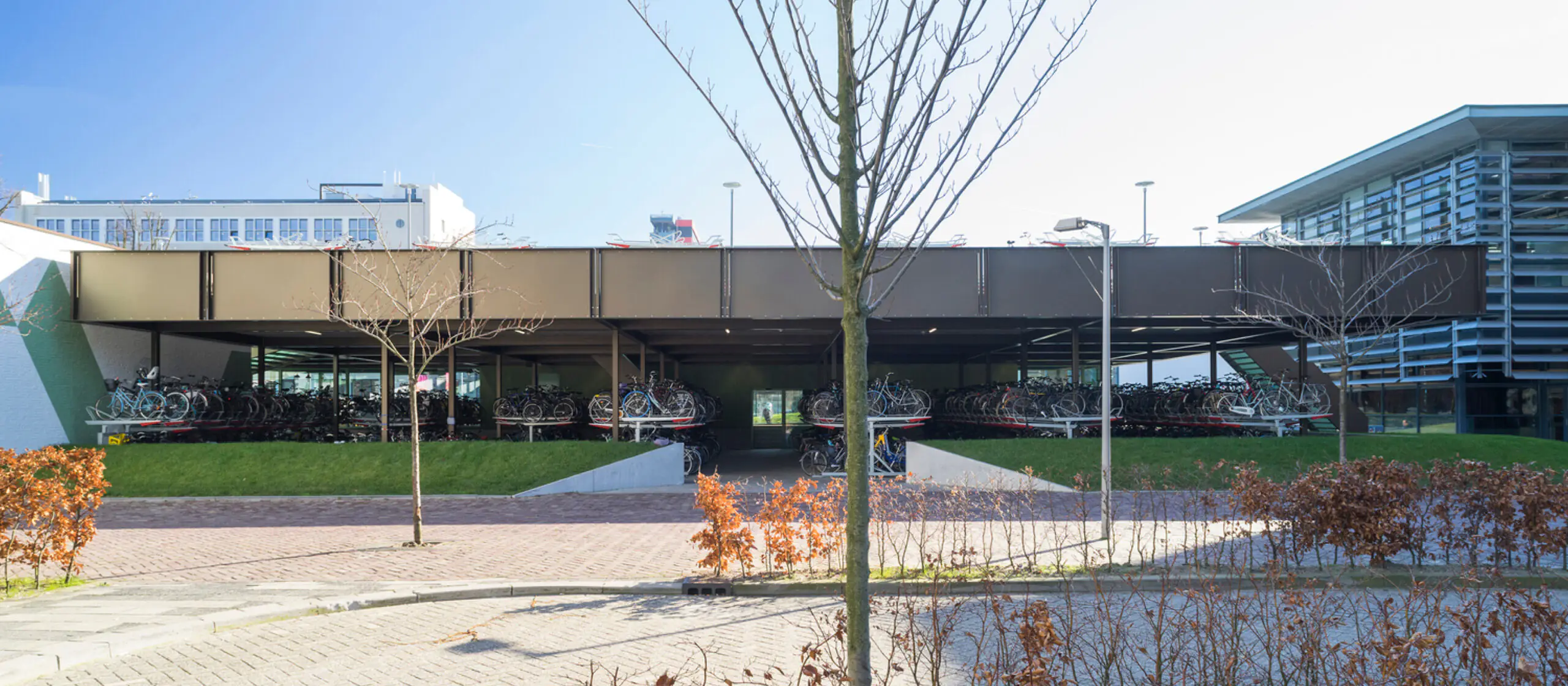
archdaily.com
Coffee and Bikes is a parking lot for 2,100 bikes, combined with a 150 m2 bike workshop and café-bar on the green hill below the bike area. Today it is not just a garage where you can park your bike, but a popular meeting place and hangout for students and locals in the center of the Delft University of Technology campus.
Due to the increase in teaching positions, there was a shortage of bicycle parking, and Delft University of Technology decided to build a bicycle parking area in the center of the campus, as well as a café bar and workshop, in response to the basic request of any cyclist—to park their bike as close to their destination as possible. The combination of multiple functions also helped transform a large bike storage room into an attractive space on campus.
The green hill with terraced stairs on which the pavilion is located faces the sun and unfolds towards the square. The embankment also prevents bicycles from being placed near the university facade. Due to several entrances and stairs, the building can be accessed from all sides.
The bike shop is located on the first floor and has direct access to the bike shed. Above the coffee shop is a second tier of parking that essentially functions as a canopy for it.
The architecture of Coffee and Bikes is in line with the visual principles of Delft University of Technology itself: the appearance corresponds to function in the tradition of practical, businesslike, engineering architecture. The design thus fits into the architectural tradition of university buildings begun in the 1950s by Mies van der Rohe in Chicago.
The framework of the bicycle shelter consists of columns arranged on a 5×6 meter grid. It conveniently accommodates both standard bike racks and a two-level system. The modular principle makes it possible to increase the parking area in the future, if necessary.
The slender columns, which are 4 meters high, give the impression of a canopy floating above the bicycles. Thanks to the rigid connections made in invisible couplings, there is no need for spacers that would hinder the functioning of the building. The steel ribs of the parapet face outwards, which gives the facade an effect of depth. At the same time, the inner part of the parapet, which forms the bicycle parking fence, remains smooth. The anodized steel elements are powder-coated in a coffee brown shade that looks different on sunny and cloudy days.
Bicycle Parking in Utrecht
Architects: Ector Hoogstad Architecten
Year of project completion: 2019
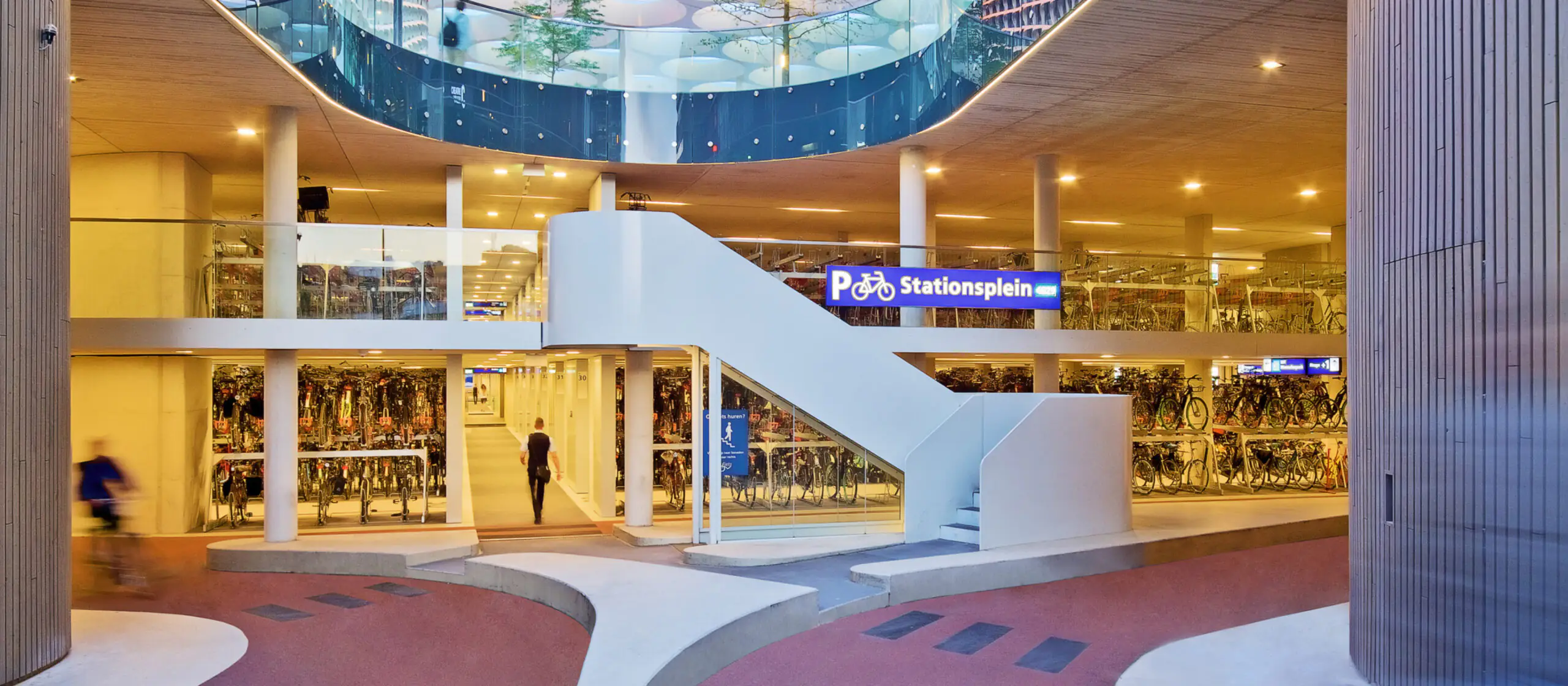
arquine.com
The world’s largest bicycle parking lot has been opened under Utrecht’s train station in 2019. The project is the centerpiece of the redevelopment of the part of the city that connects the enlarged train station to Utrecht’s historic center.
Under an iconic honeycomb-shaped canopy, visitors are greeted by an elevated, renewed public space, a plaza that houses the entrances to the station and the shopping center. At the center beneath the plaza is a three-story bike park that proclaims the future of sustainable mobility. It includes three levels of underground lots for 12,656 bicycles, overtaking the former world’s largest bike park in Tokyo with a capacity of 9,000 bicycles.
The bike park was built in part to encourage more people to use bicycles and public transportation instead of cars.
A bicycle park is more than just infrastructure. It adds a new and exciting architectural dimension to the city. Walking through it is not just a routine process, but a unique experience, a distinct urban attraction.
Bike lanes wind between the building’s three giant concrete columns and gently slope to connect the three levels of parking. The concrete columns supporting the giant canopy span the entire height of the parking lot. Cast in the shape of pipes, they are 5 meters in diameter at floor level and 1.2 meters at the top.
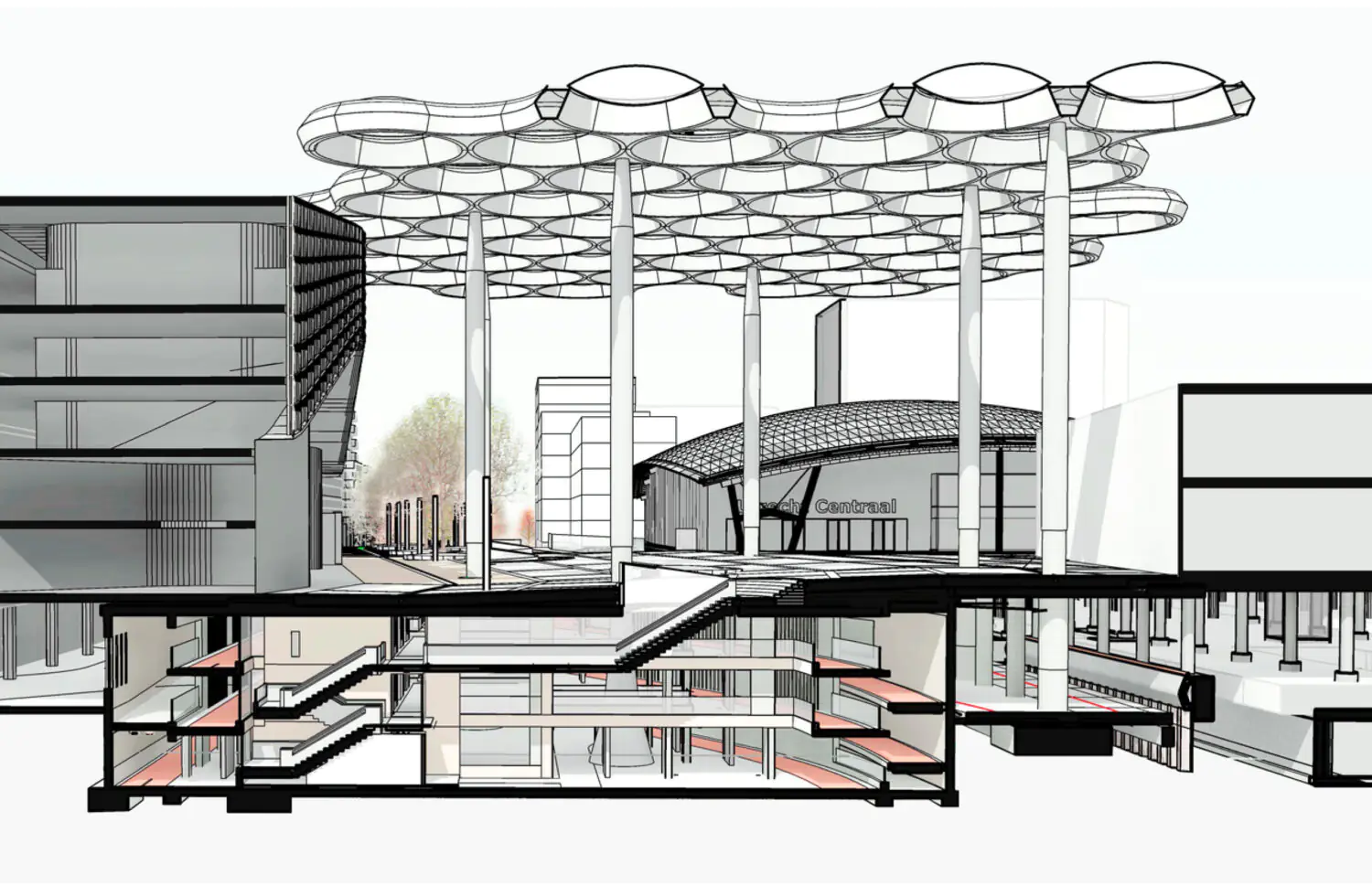
archdaily.com
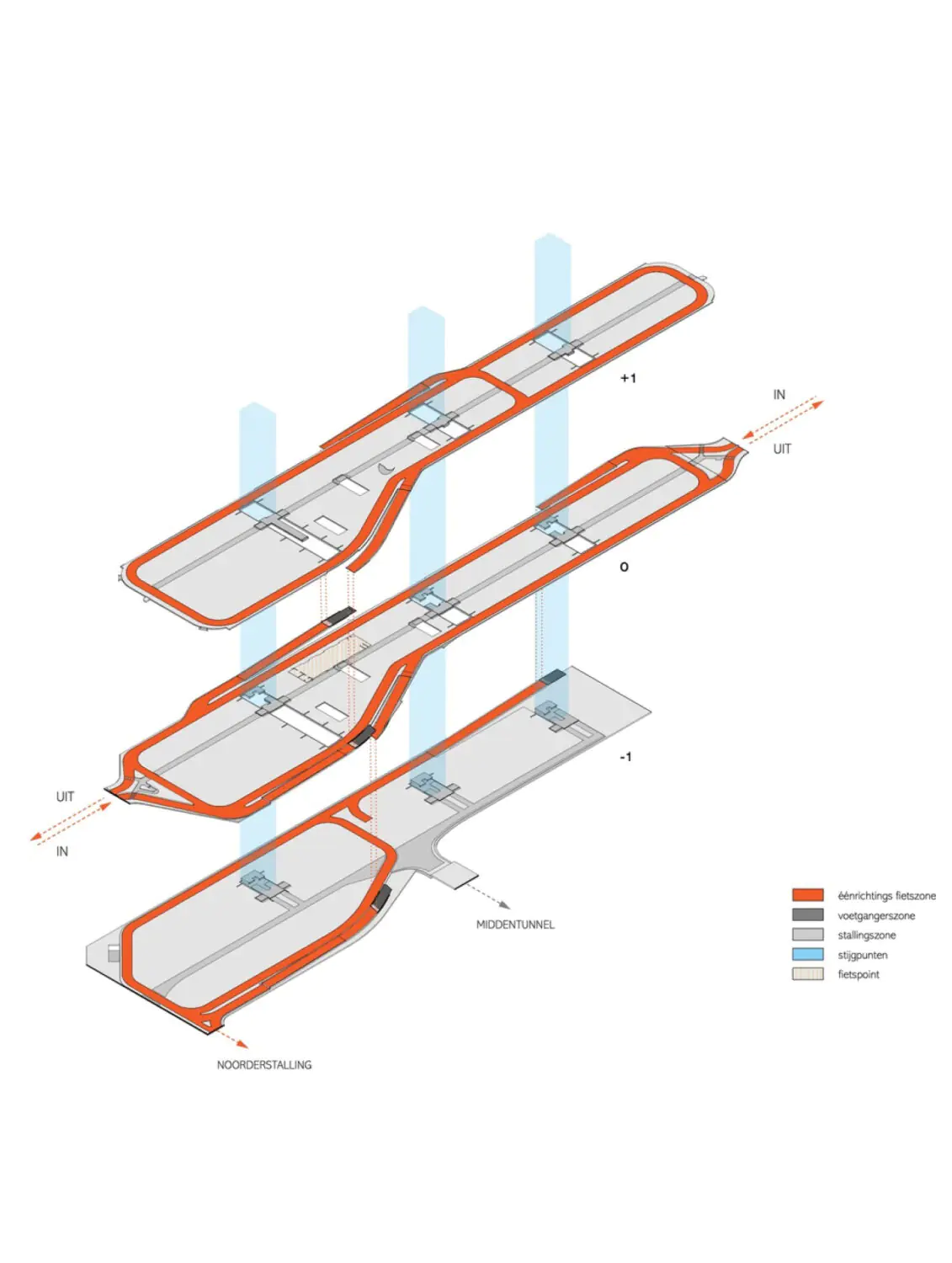
archdaily.com
Speed and safety are key elements of this spatial concept. The layout allows for an intuitive separation of pedestrian and bicycle flows. Cycle lanes are color-coded to guide cyclists through the space to their designated area. A digital system quickly directs them to available spaces. Parking can be used with a public transportation chip card—convenient and fast.
Stairwells and tunnels provide direct connections to the ground plaza, the main terminal building and the platforms. They are surrounded by glazed atriums with glass roofs that provide access to daylight.
The space has a pleasant and friendly atmosphere that provides a sense of social security. In addition to storage space, the complex includes a bicycle repair and service facility where spare parts and accessories can be purchased, as well as a bicycle rental facility with a capacity of 1,000 bicycles. Notably, it is the only secure, staffed bicycle parking facility where indoor cycling is allowed.
Bicycle Parking Garage The Hague
Architects: Silo, Studio Marsman
Year of project completion: 2020
One of the largest bicycle parking garages in the Netherlands, with 8,000 spaces, was built under the square in front of Central Station in The Hague. In addition to parked bicycles, 600 bicycles from the nationwide rental system OV-Fiets are accommodated here – entry to this area is possible with a public transport card or season ticket.
Connecting bicycle and rail traffic is an important link in urban mobility. However, underground parking lots next to railway stations often look unattractive due to low ceilings and lack of daylight.
The bike garage in The Hague is designed to completely transform the image of underground parking, to provide thousands of daily users with comfort, safety and an unexpected and enjoyable spatial experience.
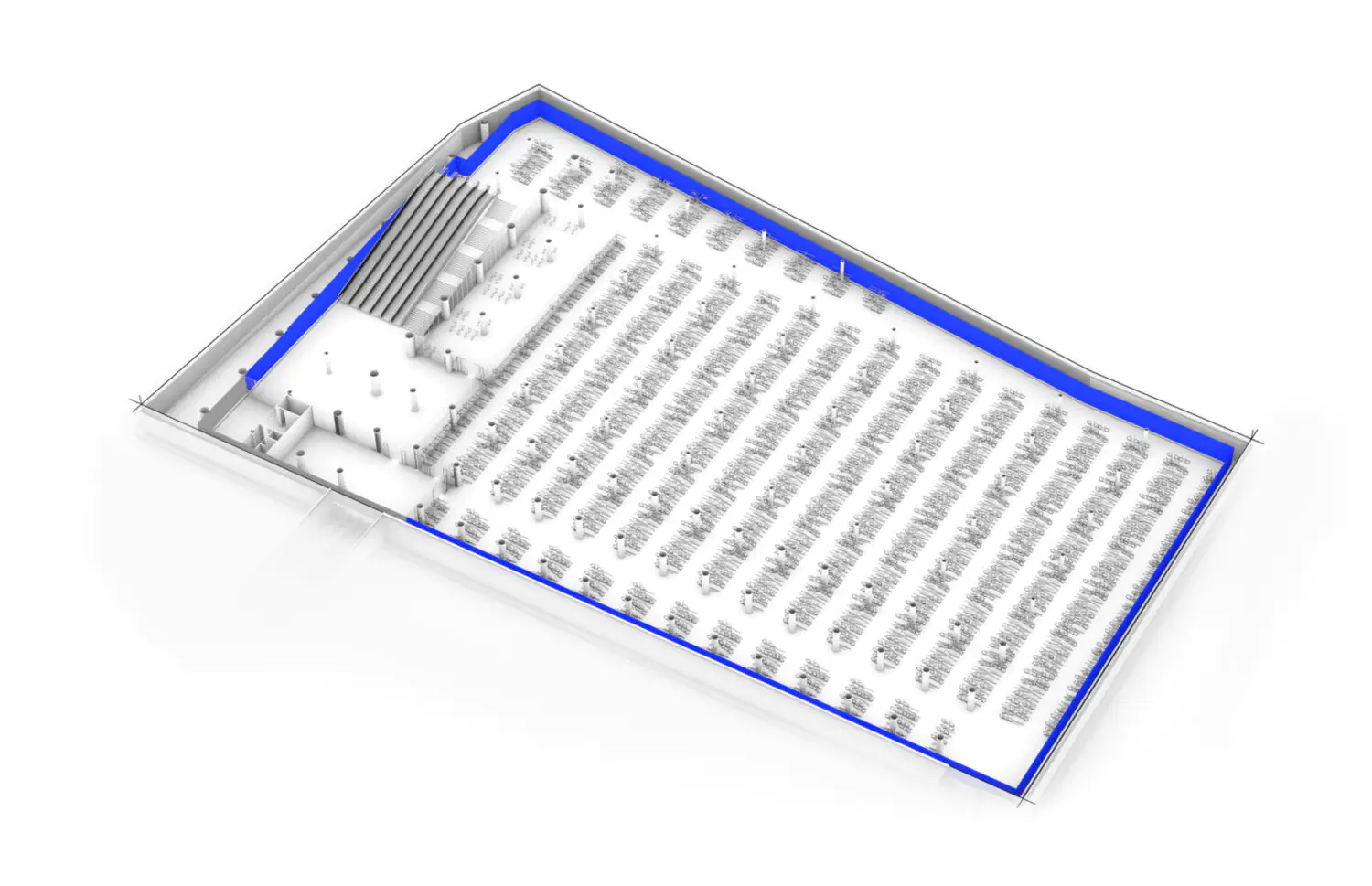
archdaily.com
The architectural concept is based on the impression of cycling through the city, which the designers tried to transfer into the interior. For this purpose, light panels have been placed along the walls, wrapping around the parking space. The architecture of The Hague’s past, present and future formed the basis of a single continuous image along the entire length of the light wall.
Elements from the facades of iconic city buildings are subtly woven into an impressive cityscape: an architectural collage inspired by the works of Dutch graphic artist Maurits Cornelius Escher. When cycling past it, a sense of an urban skyline is created. The design draws on historic buildings—the Ridderzaal, the Peace Palace and the Berlage Art Museum; designs by architects Richard Meyer, Bernard Tschumi, Hans Kollhoff, Cesar Pelli, KPF, Kraaijvanger Architects, Rudy Uytenhaak, Benthem Crouwel Architects, MVSA, Zwarts & Jansma Architects and OD205—and future projects by the Powerhouse Company, JCAU and NOAHH.
The space also features a long graphic achromatic mural with geometric shapes and patterns. According to the designers’ idea, this mural with many flat elements turned in different directions reflects and diffuses the bright lighting of the garage, visually expanding the space. The parking lot is designed to resemble a museum rather than a garage—with bright lighting and appropriate spatial elements.
The bike garage is planned to be integrated into the larger Powerhouse project, whereby two 90-meter towers will be built on the plaza in front of the station building actually above the parking garage. So far there are three descents to the underground parking garage. Two of them lead directly to the station building. And one more, the main exit with six travolators, is directed in the opposite direction and leads to the bike path along Bezuidenhoutseweg Street and Koekamp Park. The entrances have not yet taken their final form—right now they are actually part of the construction site. But in the future they will be integrated into the new buildings erected above the underground parking garage.
Underwater Bicycle Parking in Amsterdam
Architects: Wurck
Year of project completion: 2023
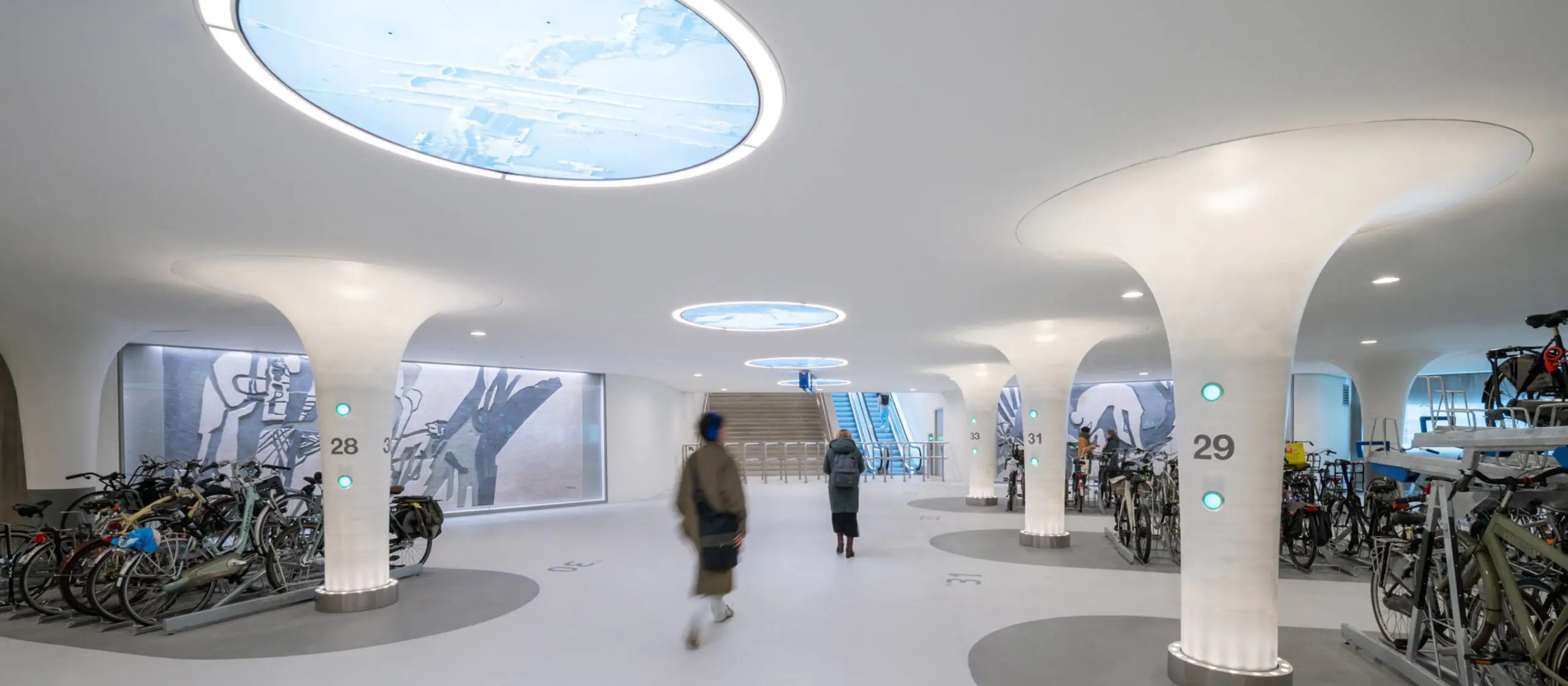
dezeen.com
In January and February 2023, two new underwater bicycle parking lots opened at Amsterdam Central Station. Together, they hold around 11,000 bicycles. The Stationsplein bicycle garage appeared under the so-called Open Harbourfront, a marina for tour boats. It holds almost 7,000 bicycles as well as several hundred bicycles of the OV-Fiets rental system.
The bicycle parking is part of a larger project to modernize the area of Amsterdam’s central station, known as De Entree. The underground parking will help reduce the number of parked bicycles on the street, which many citizens now perceive as visual noise. The on-street bicycle parking lots are scheduled to be dismantled.
Travelators take people to a depth of 9 meters, and it is one of the few places where you can see that the garage is actually underwater. Cyclists can use transportation cards at the entrance, which allows for fast and efficient travel.
Although there are quite a few underwater garages in the Netherlands in general, so far all of them have been for cars only. The underwater space, which is connected directly to the city’s metro and Amsterdam Central Station via six escalators, is the first of its kind in the world.
It is only natural that the architects used the theme of water as a source of inspiration, which is reflected in the fluidity of forms—the curved lines of glass walls, columns and staircases. To mimic the feeling of opening an oyster shell, a contrasting palette of materials was chosen. Behind a rough entrance made of natural stone, basalt and concrete, a huge hall opens up with shiny white mushroom-shaped columns that frame bicycle parking spaces.
The colonnade also makes navigating the parking lot easier: rows of columns guide people directly to the subway passage to the subway and trains and are illuminated by oculus lights that mimic skylights. Inside the oculuses are photographs related to Amsterdam’s maritime history.
The bike workshop and concierge areas are a “pearl in an oyster”.
The wall surface is adorned by a 140-meter-long illuminated glass panel, the “Horizon”, which depicts maps of Amsterdam from different eras, created in collaboration with the Amsterdam Museum. They are made up of pixels—photographs and paintings. A closer look at the maps reveals many small images of Amsterdam with a maritime theme. Due to the work of light and color, visitors to the space have the feeling that they are literally underwater.
The bicycle garage also houses two sgraffitos by Lex Horn (1916–1968). They were previously housed at the Jan Svammerdam Institute, whose building was demolished in 2004: the sgraffito were part of the wall of the 5th floor of the institute. This is an exceptional work of art called “Traffic Accident”. The wall has been preserved and is here almost in its original place.
IJboulevard Underwater Bicycle Garage
Architects: VenhoevenCS
Year of project completion: 2023
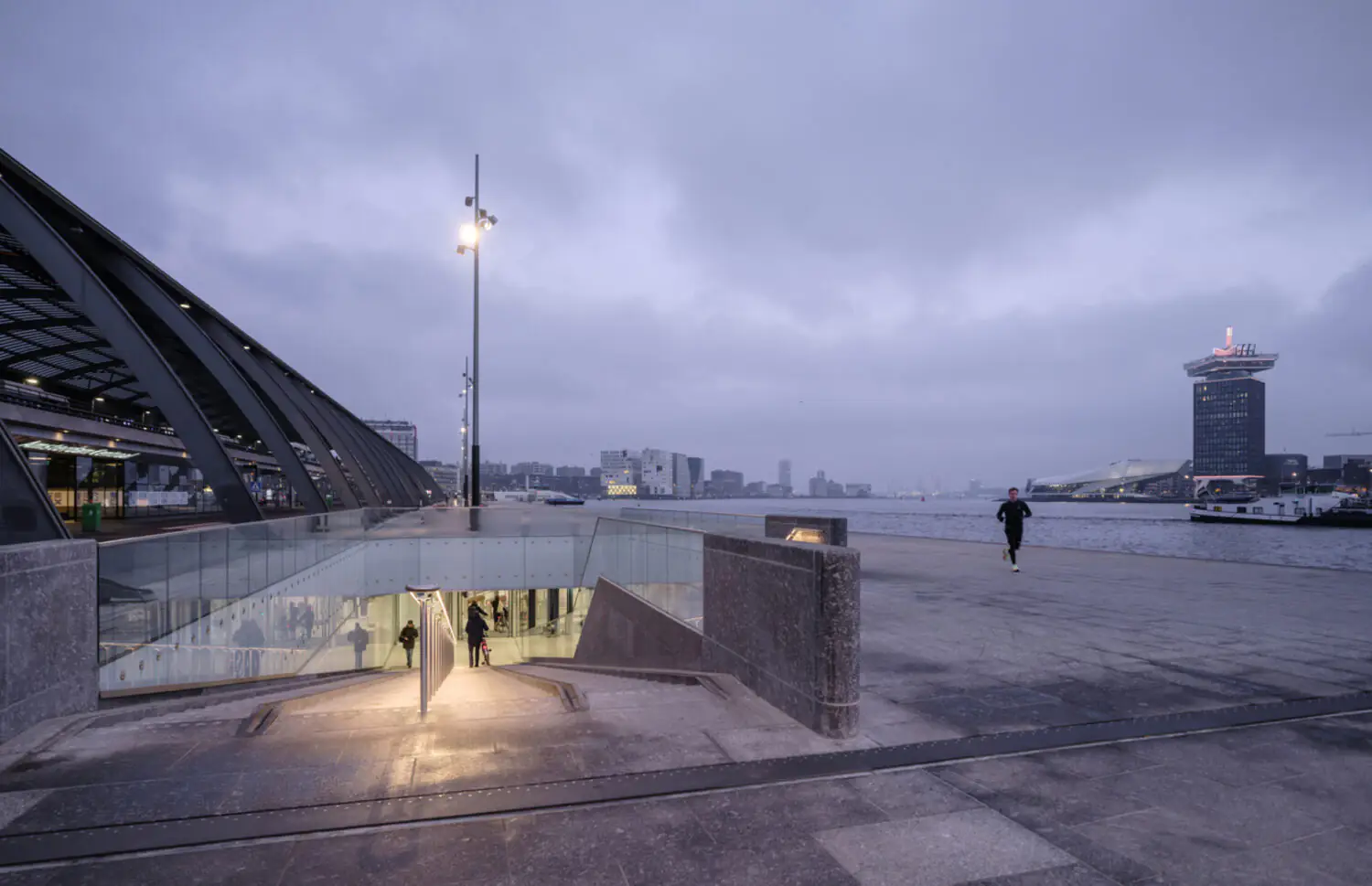
architectenweb.nl
Opening to the public in 2023, the innovative IJboulevard project is expected to make a significant contribution to the city’s development: it will transform the area near Amsterdam Central Station and create unique conditions for cyclists—while also creating a new public space and improving the city’s infrastructure.
The underwater parking garage holds over 4,000 bicycles. It is located in a complex urban area below the water level of the river IJ. The multimodal transit hub (the busiest in Amsterdam) brings together trains, streetcars, buses, cabs, pedestrians and cyclists.
Prior to the construction of this and the nearby Stationsplein bicycle parking lot, which opened in January, surface bicycle facilities were overcrowded. The disorganized storage system led to situations where bicycles were left abandoned for months, taking up valuable public space, and eventually often simply disappeared due to theft.
By moving the parking spaces underground, the architects returned 6,000 m² of street-level public space to the city. The roof of the parking lot now serves as a panoramic IJ pedestrian boulevard along the river with popular seating areas. The architects describe the space as “the city’s new living room”. The IJ Boulevard simplifies and enhances the cycling experience.
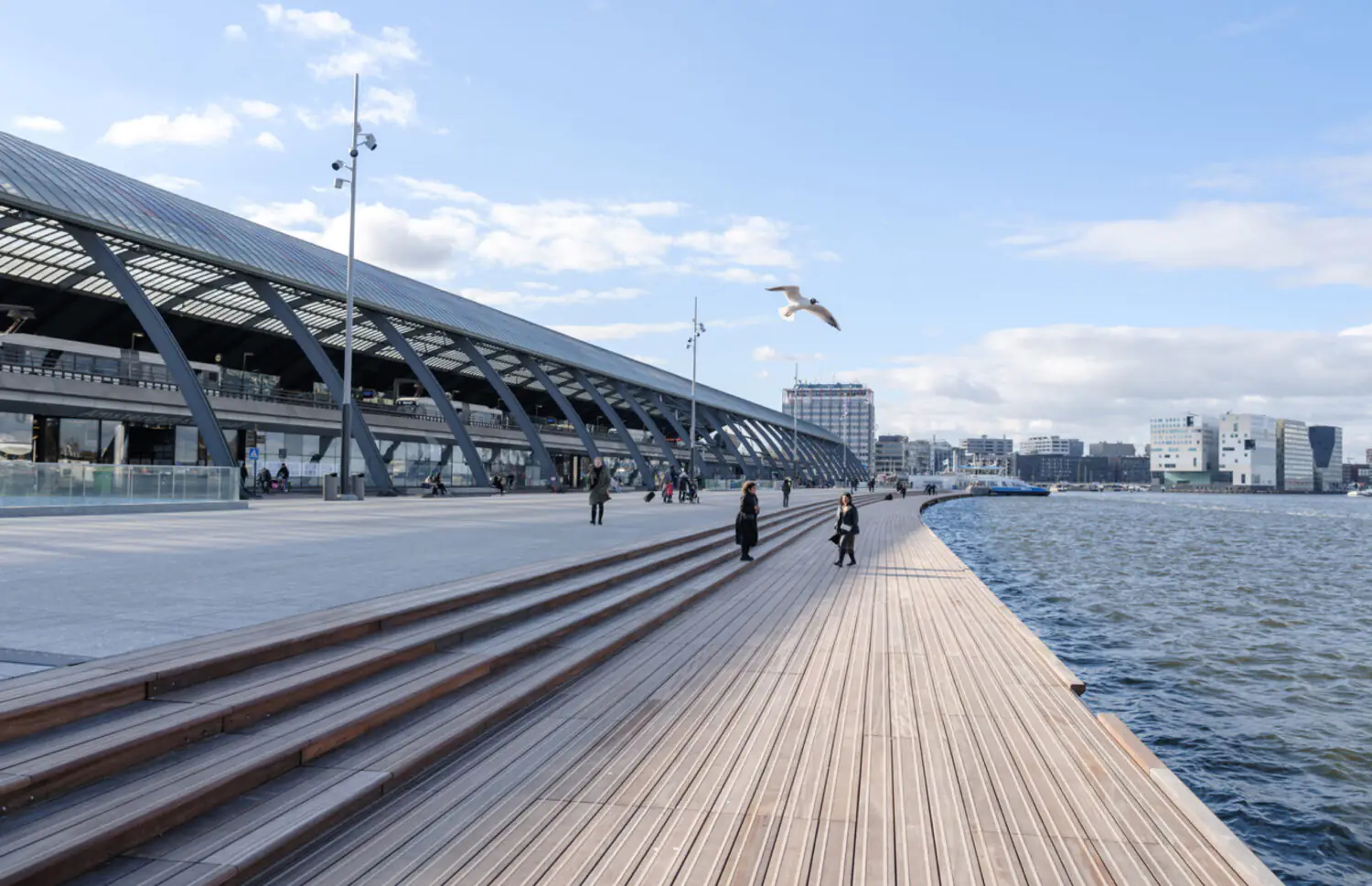
architectenweb.nl
The design of IJboulevard’s interior spaces is characterized by smooth lines and rounded shapes, creating a warm and cozy atmosphere. The use of wooden walls, soft but good lighting, a calm color palette, and the visible location of the administrative spaces create a sense of security for users. Well-viewed, column-free rooms and a clear navigation system ensure quick orientation in the space.
The underground bicycle parking lot has two entrances. They are clad in the same dark gray natural stone as the boulevard—this solution provides a smooth transition between the interior and exterior space. Stairwells with large glass surfaces let in natural daylight and offer views of the parking lot from the pedestrian boulevard.
The IJboulevard project is sustainable: in addition to using environmentally friendly materials and reducing energy consumption, the structure itself contributes to biodiversity conservation. Underwater, biohygienes, coconut mats, wooden structural elements and porous concrete between the pile supports all mimic the natural habitat of aquatic plants and mussels: they have shelters and surfaces to grow on. In this way, the IJ Boulevard improves not only the quality of everyday life of the citizens, but also cares for the inhabitants of the river in which it is located.
Disappearing ALIGN bike rack
Architect: Milou Bergs
Year of project completion: 2018
The development of bicycle infrastructure offers great potential for action not only at the scale of large urban spaces, but also at the level of industrial design, i.e. in smaller projects.
For example, Milu Bergs, a graduate of the Design Academy in Eindhoven, has developed a bike rack that can be pulled out only when needed, as an alternative to the “annoying storage systems” that have overrun urban spaces.
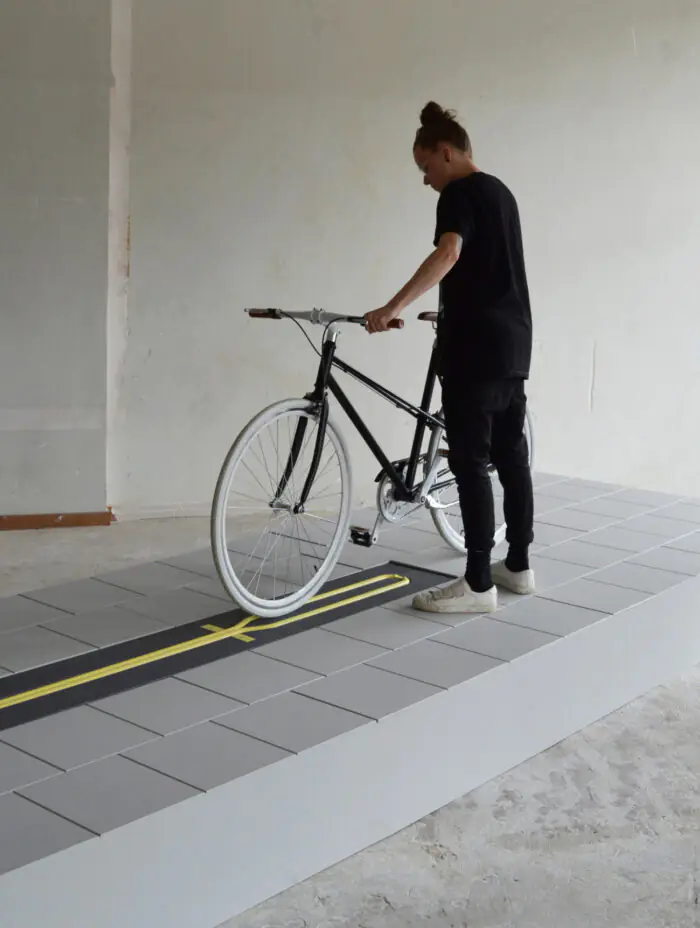
dezeen.com
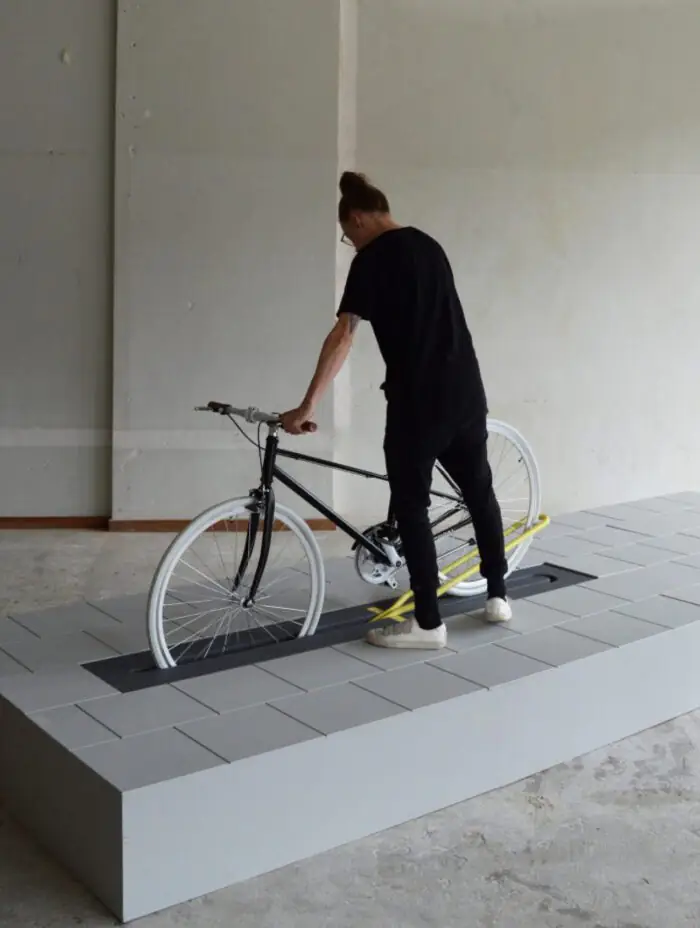
dezeen.com
Educated in the Netherlands, a country known for its large number of cyclists, Bergs focused her project on improving bicycle parking to find an alternative to the sturdy metal racks scattered everywhere.
The idea is that the rack works on the principle of a balance swing: the front wheel drops down, raising the bracket that holds and locks the rear wheel. When the bike is removed, the rack disappears completely, hidden inside the sidewalk: the public space where these bike racks are placed becomes open again—freeing up space for public events, markets or pedestrian activity.
The aim of the project is to keep public spaces open and free from visual noise. The idea and design received a lot of positive feedback and the prospect of application in the Netherlands and elsewhere. As a result, Align put the prototype into production and the disappearing bike rack was launched on the market under the name FalcoAlign. Today it can be purchased on the company’s website FALCOALIGN CYCLE RACK.
The material was prepared in collaboration with umagamma project.


